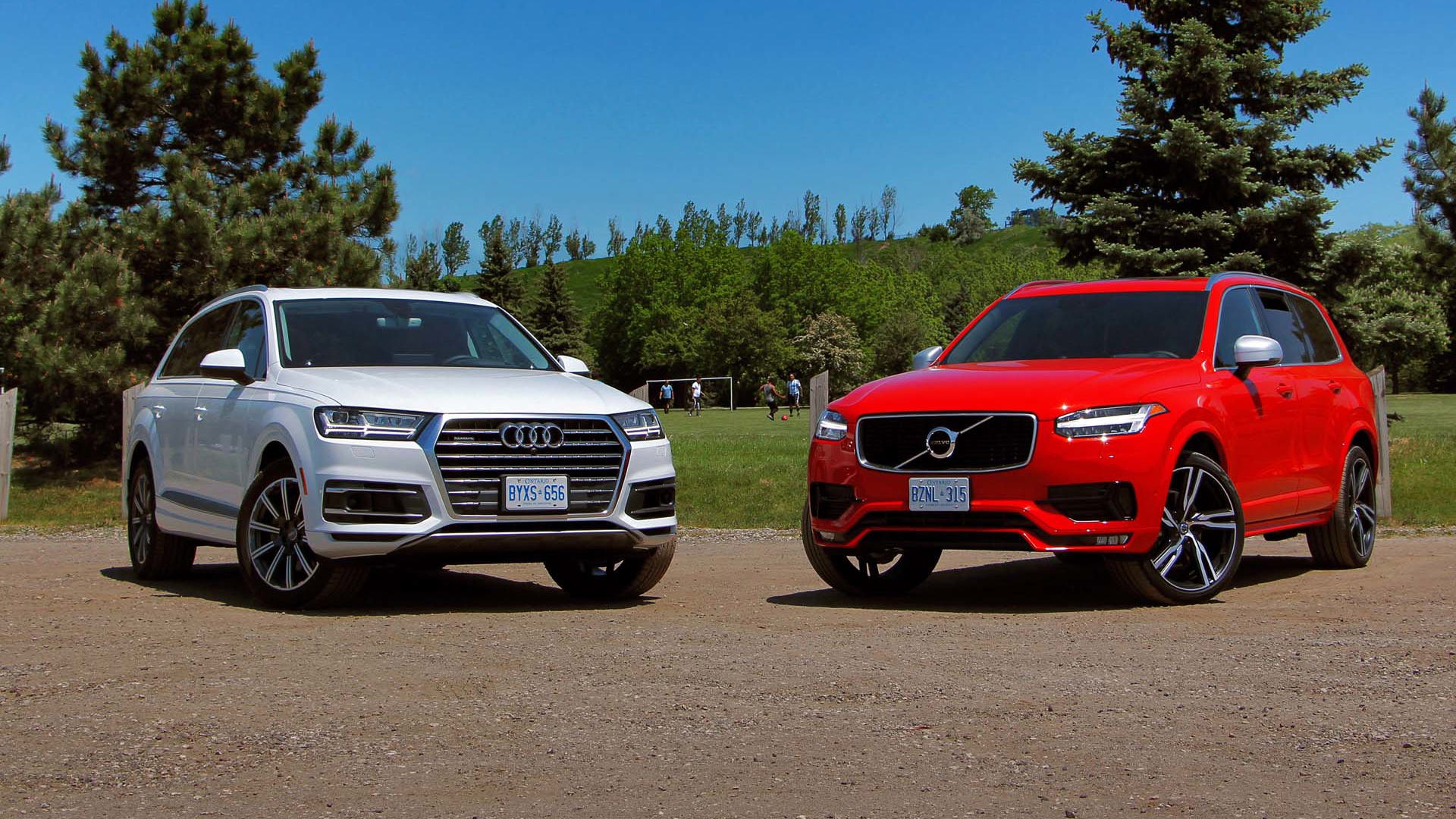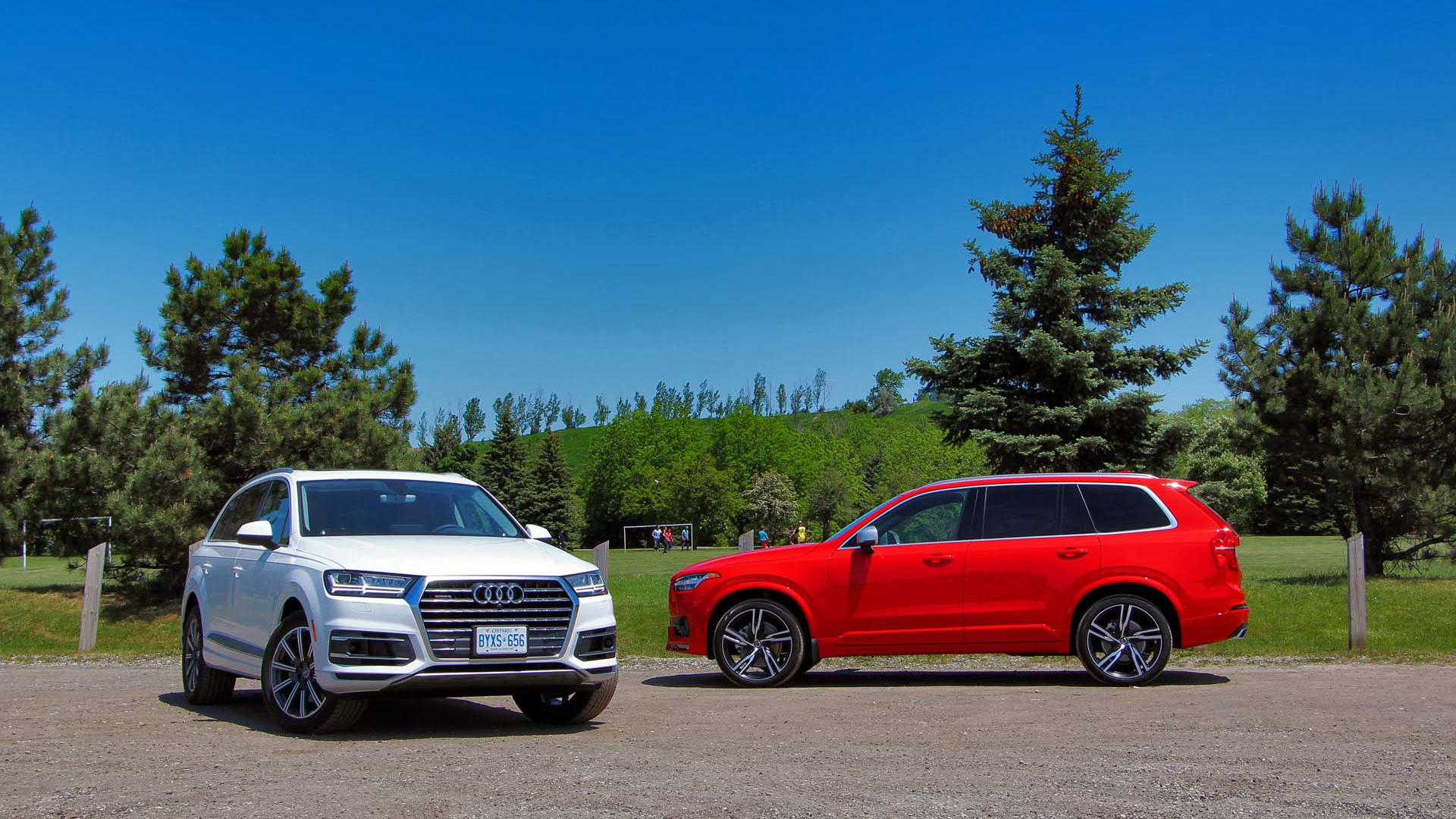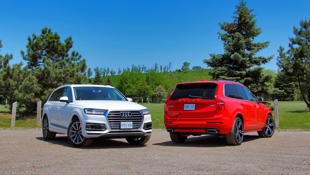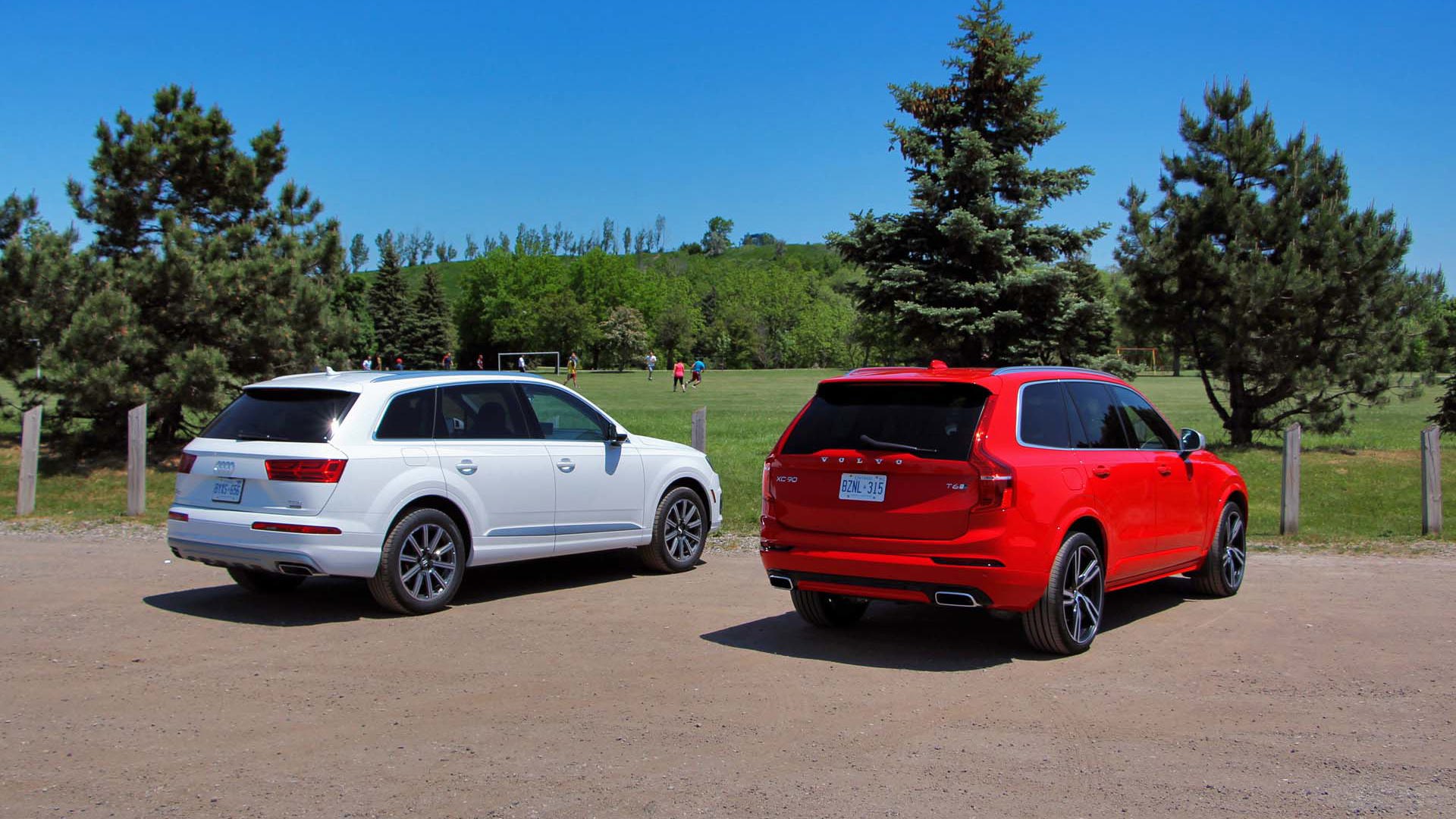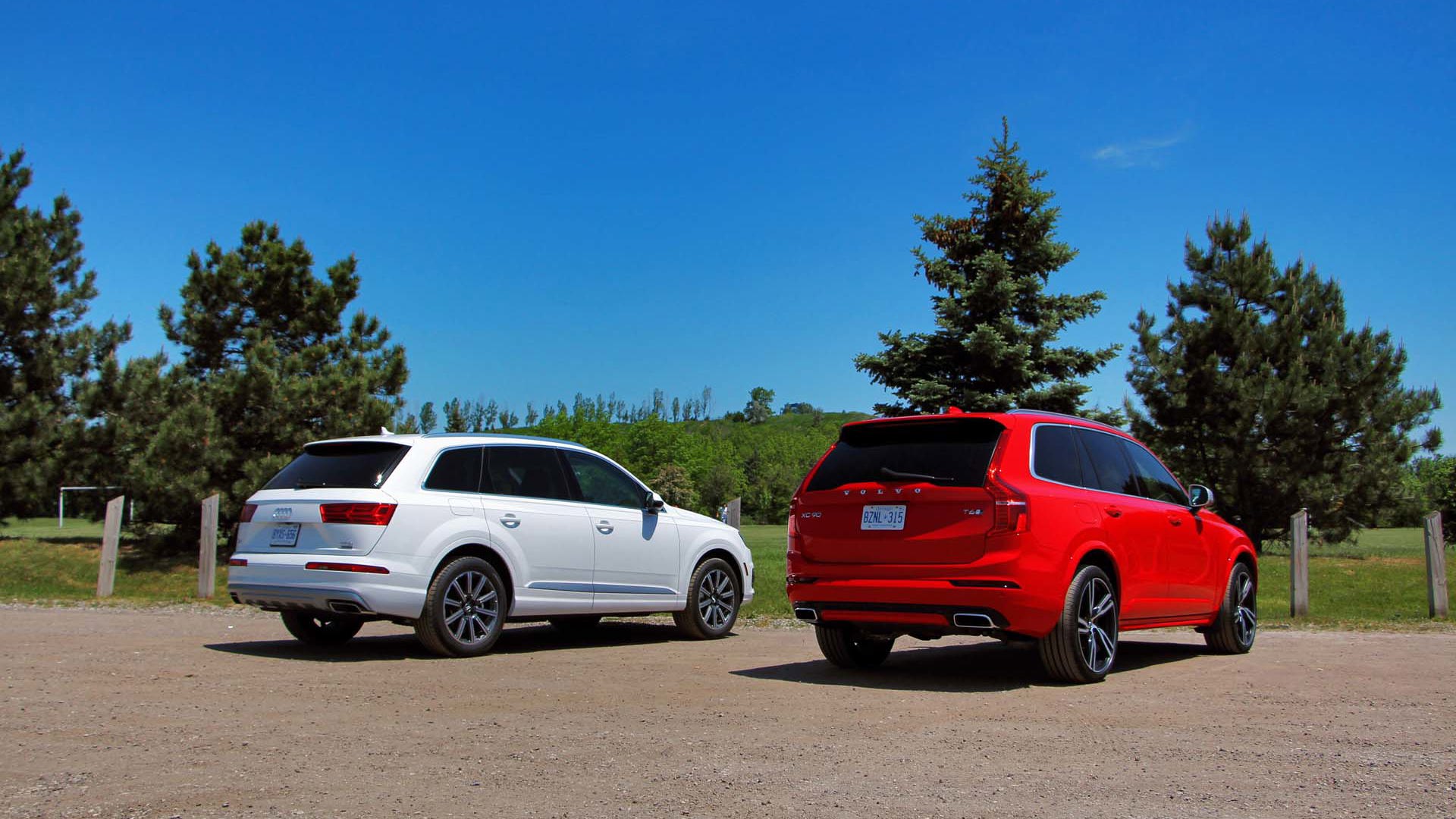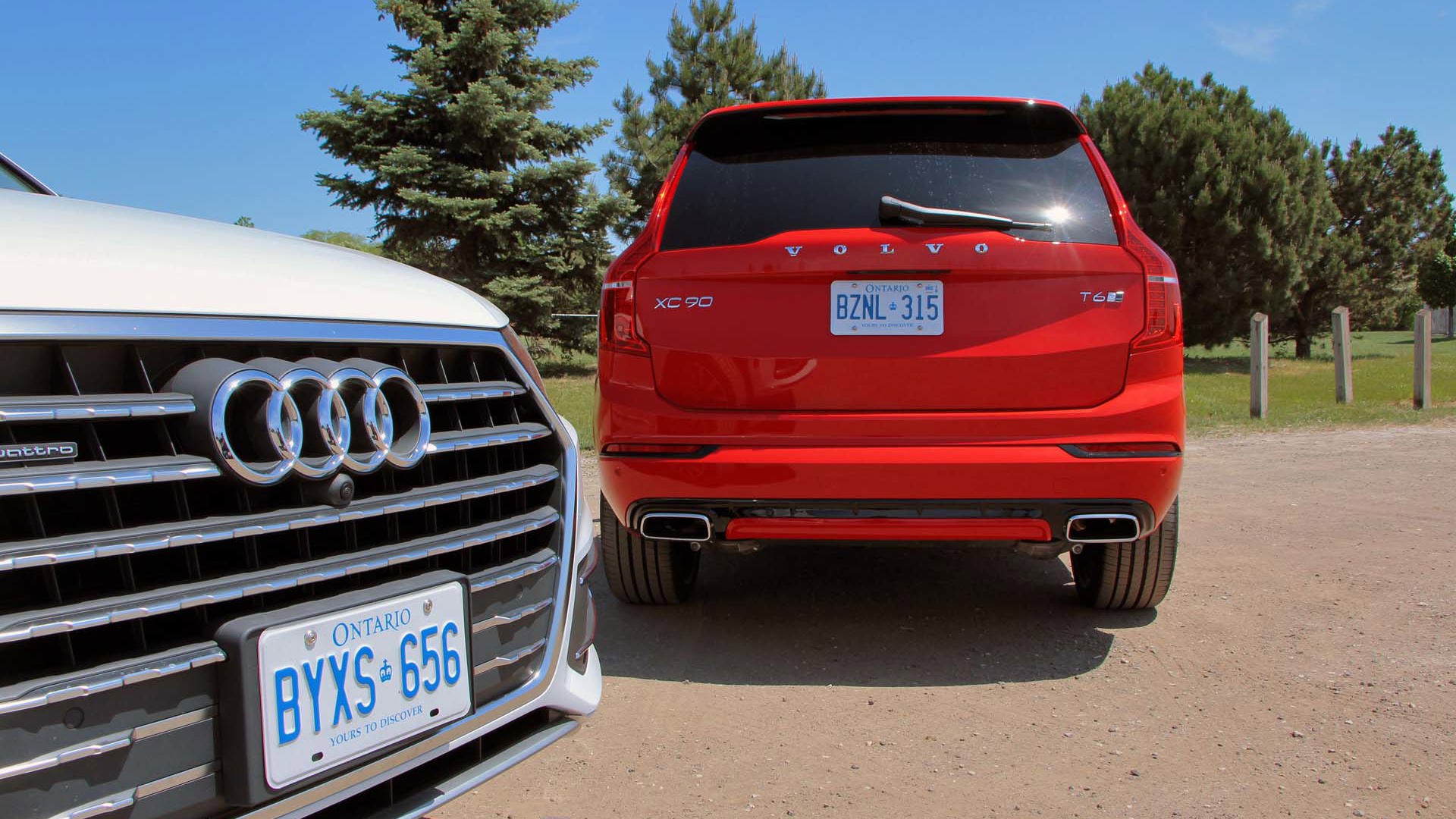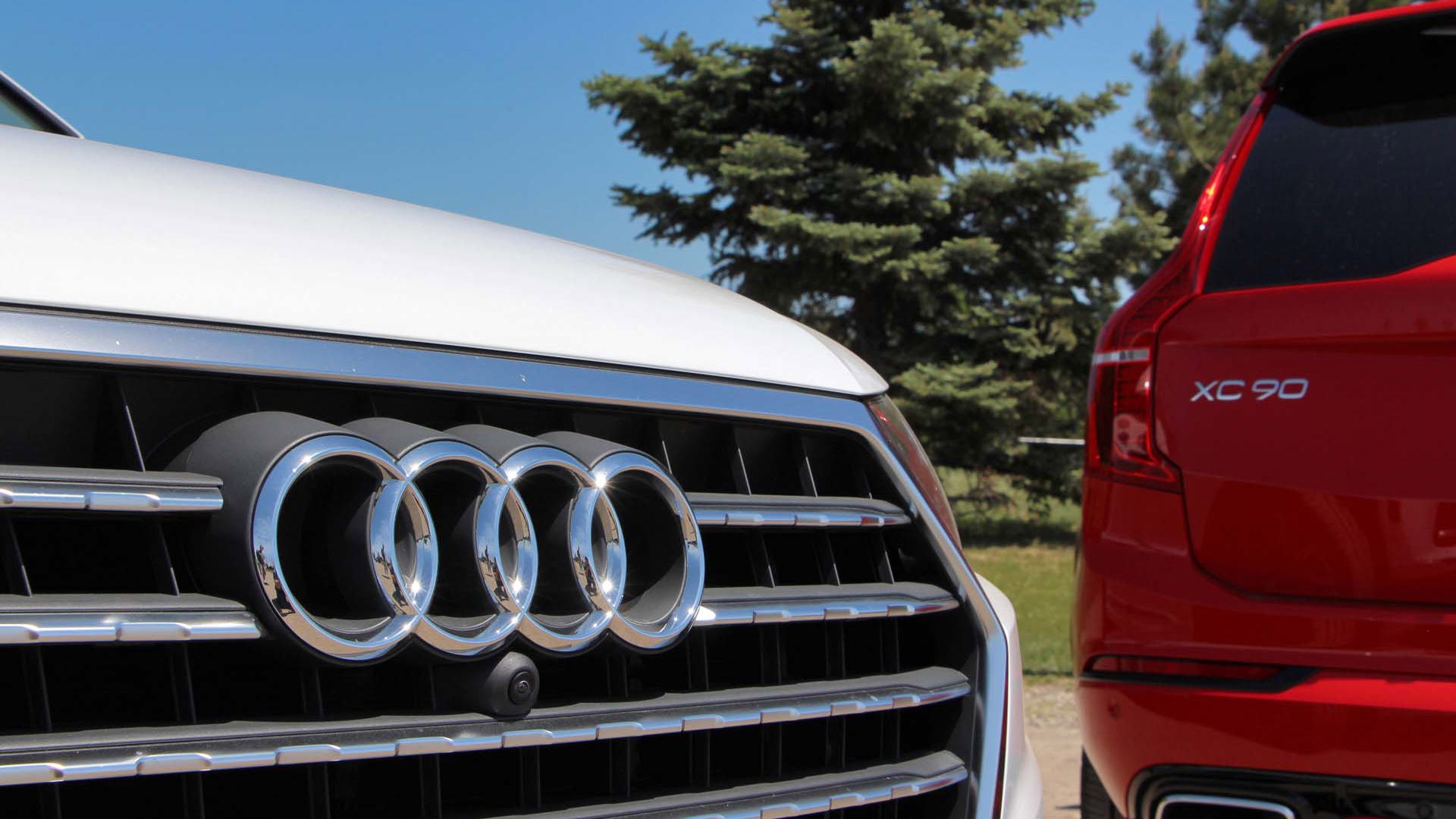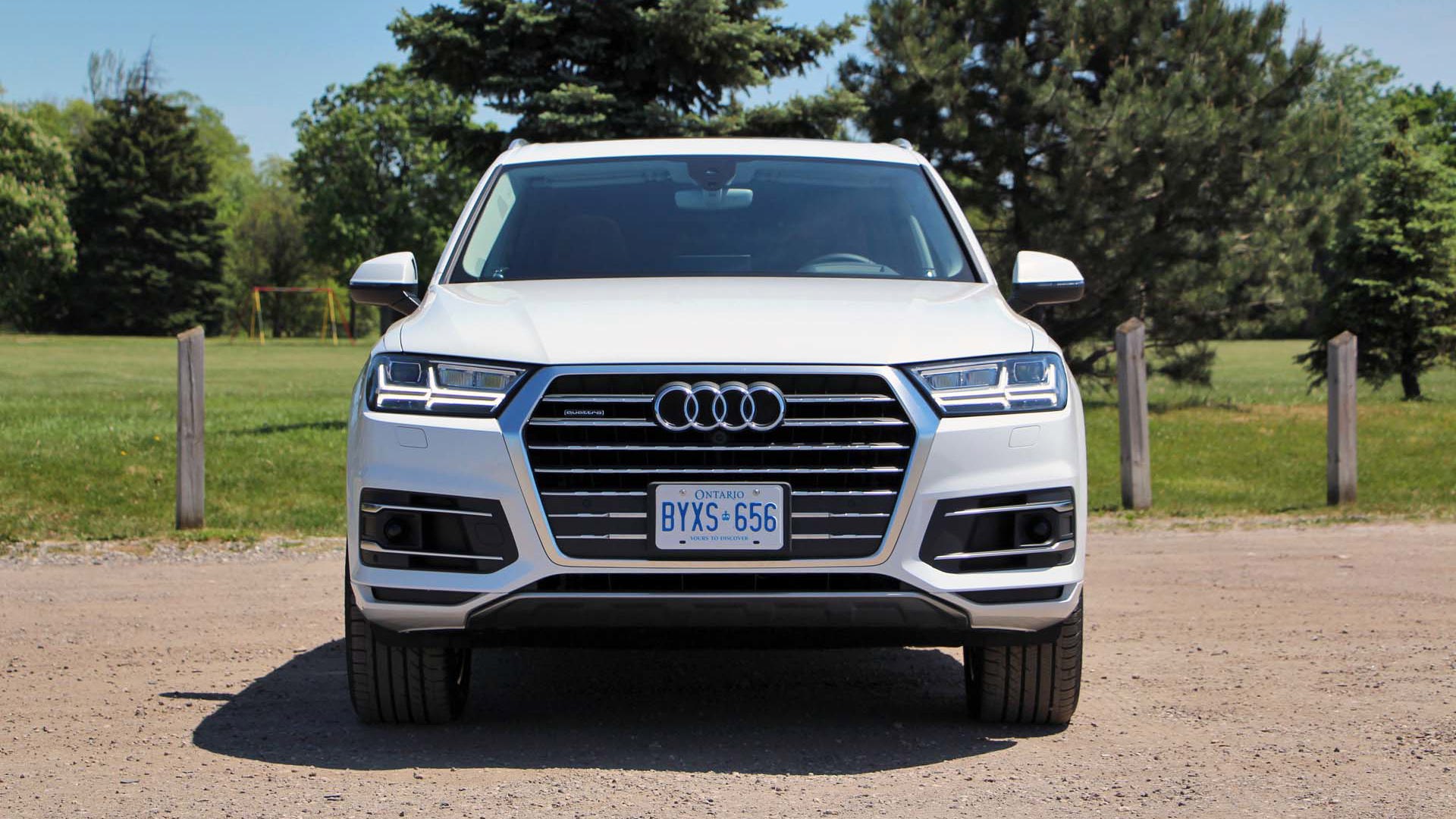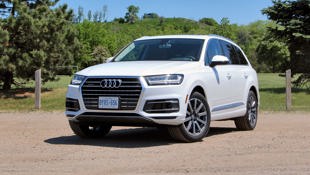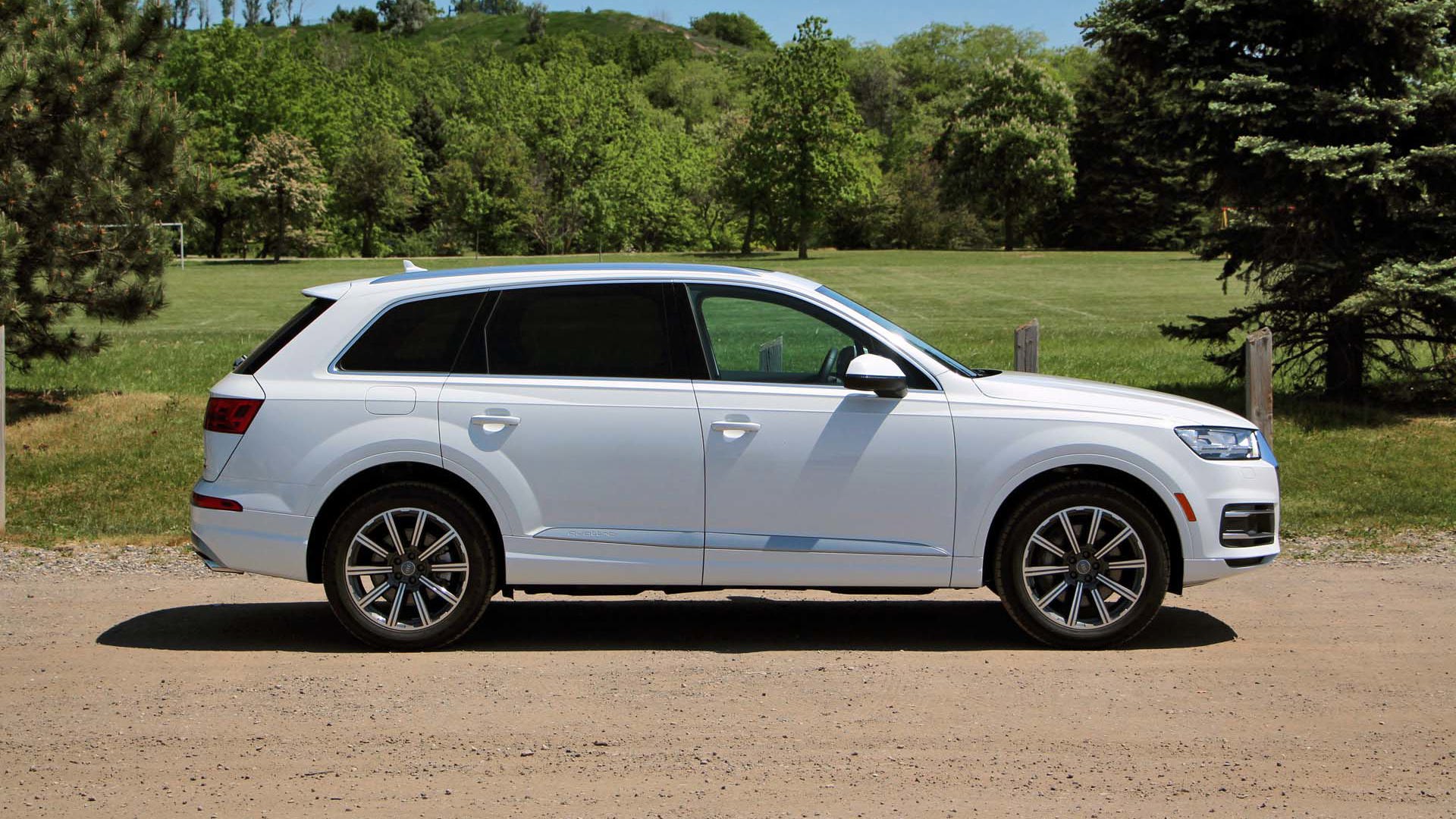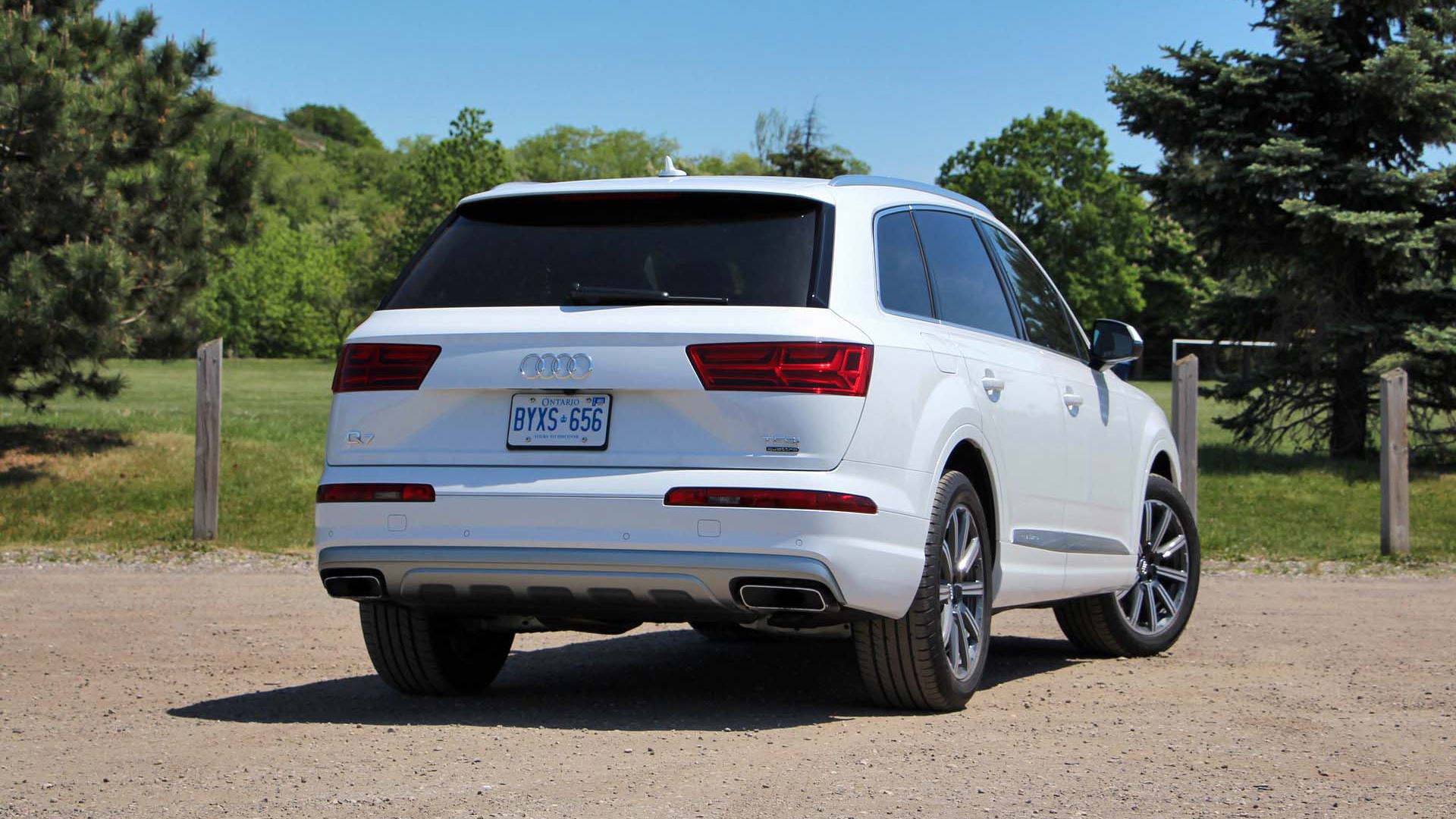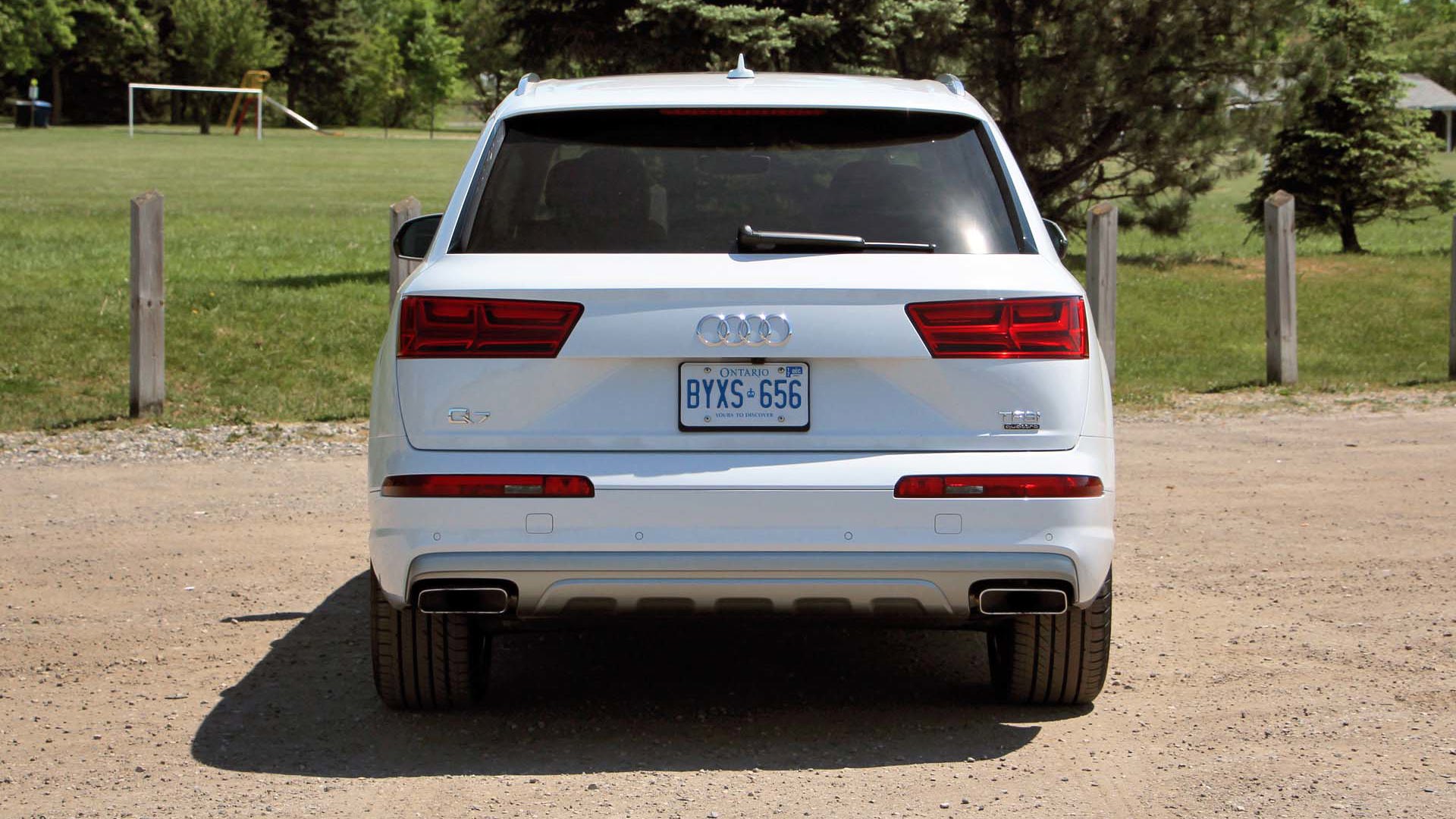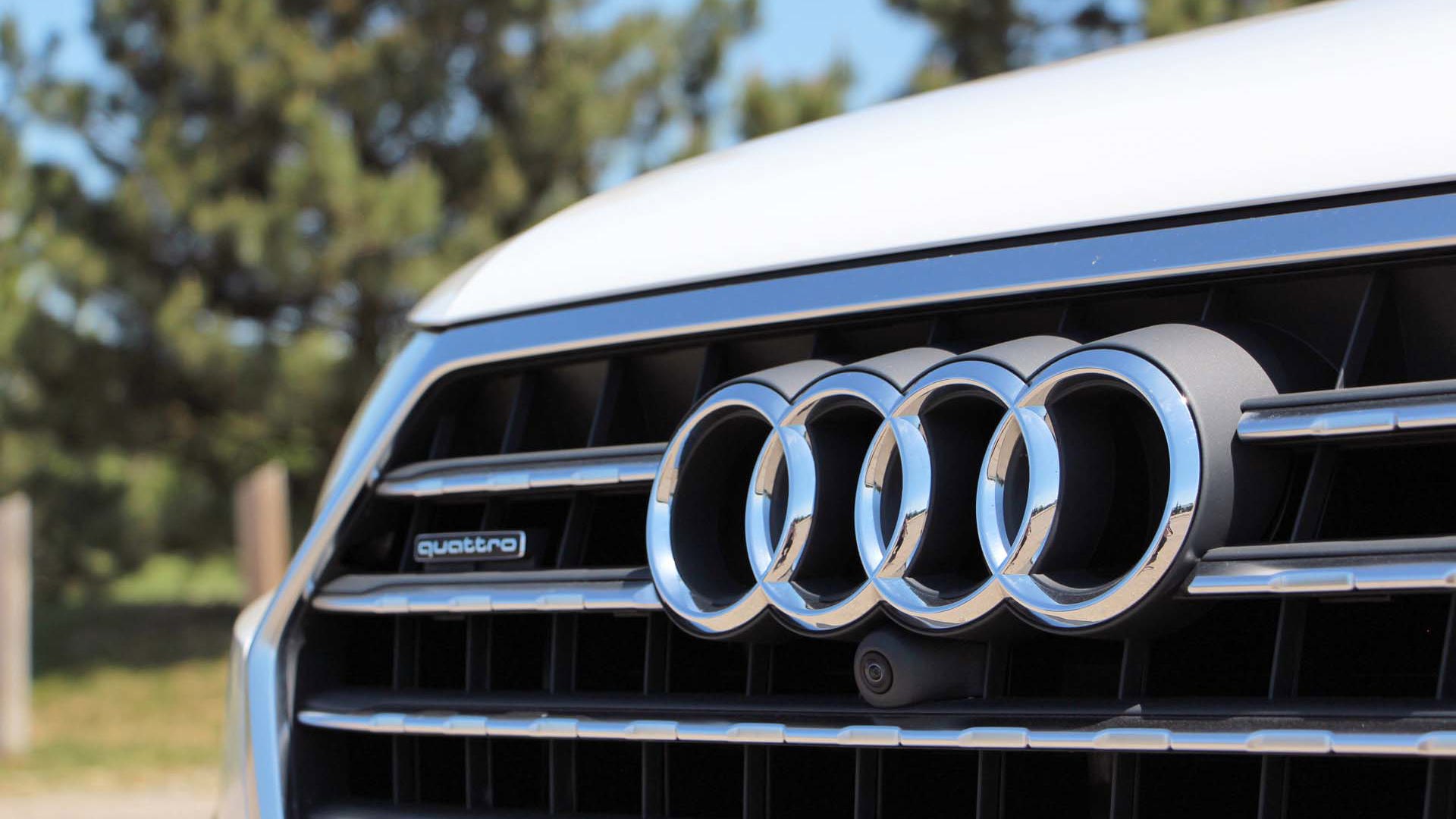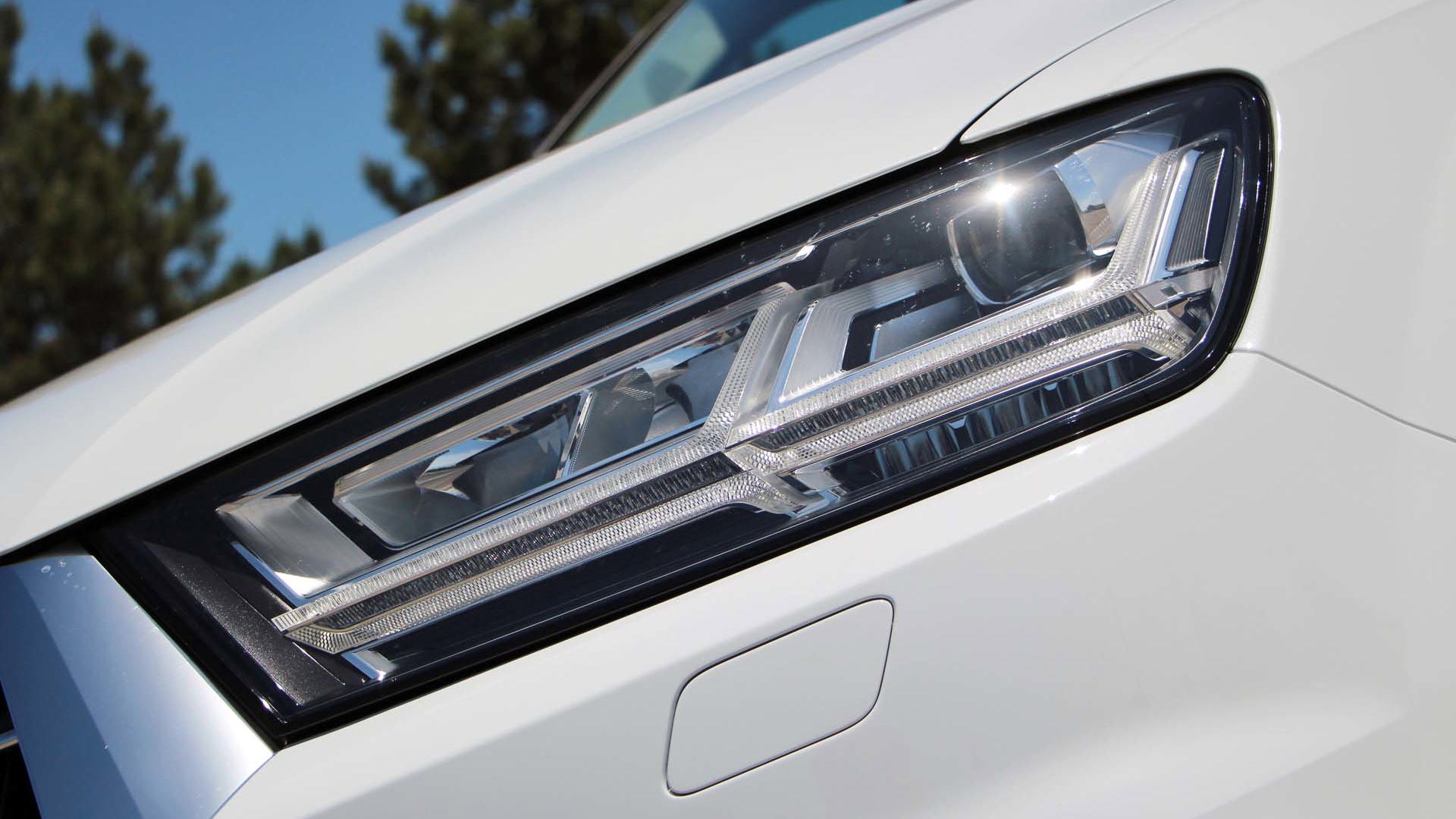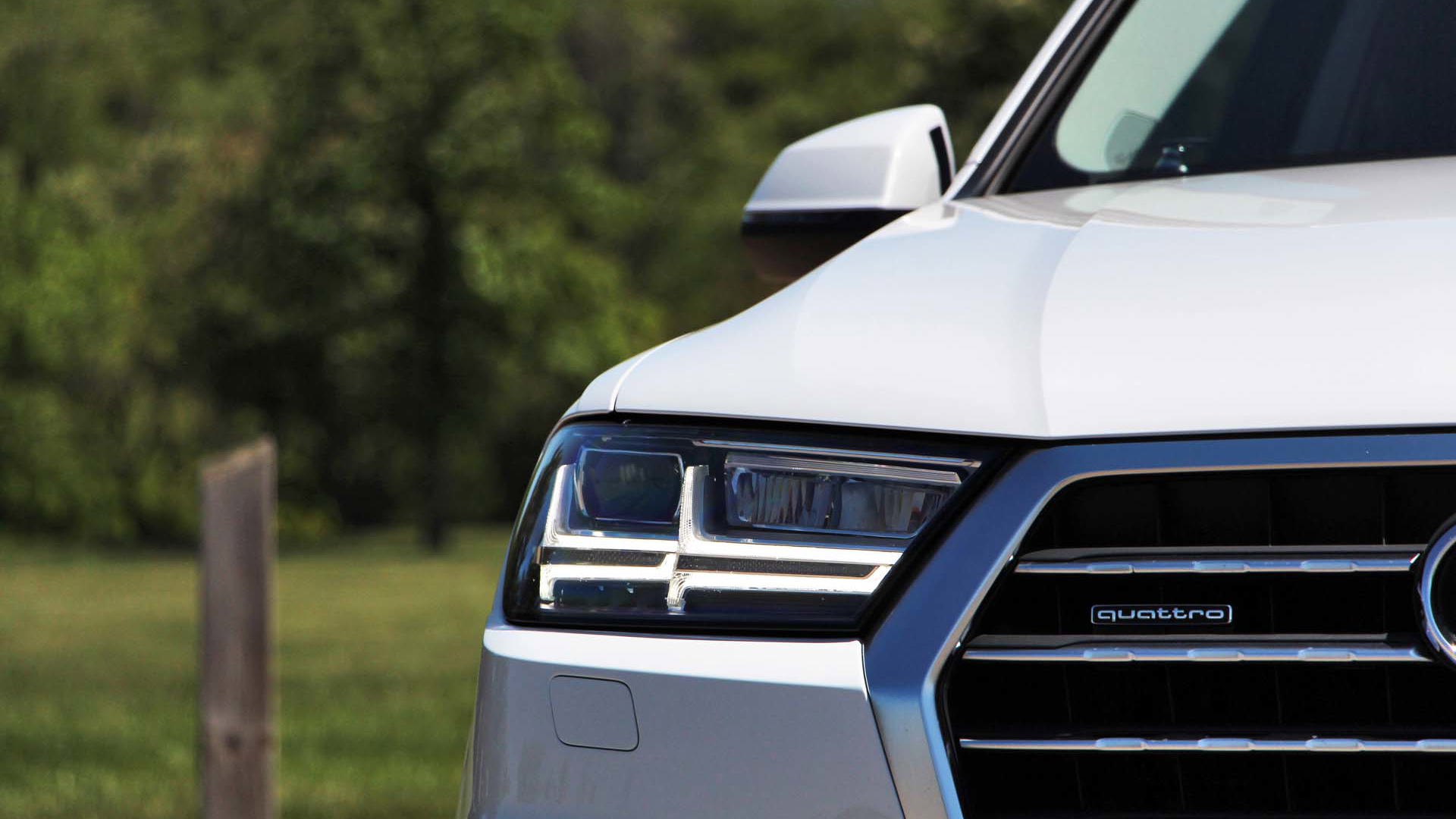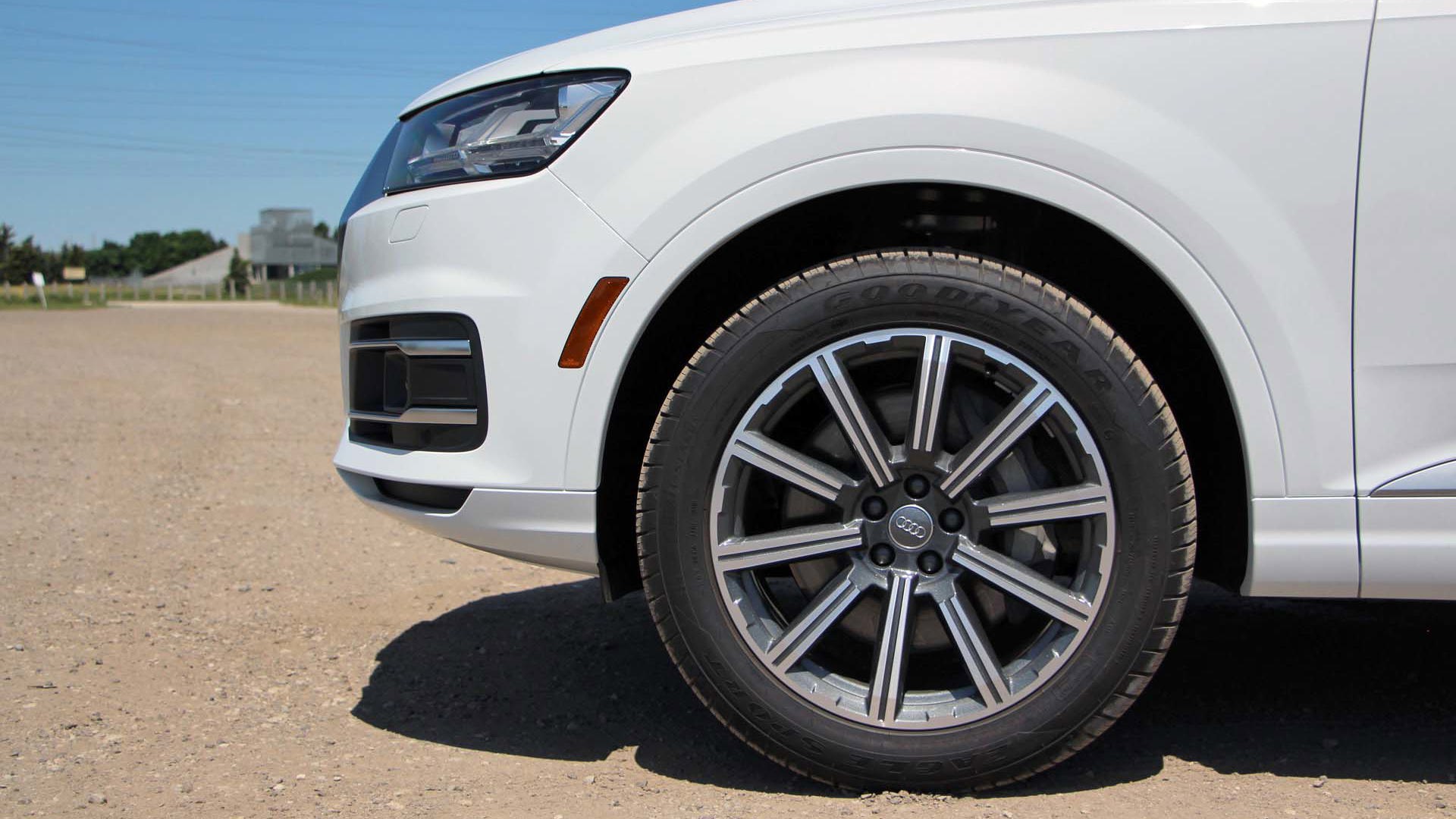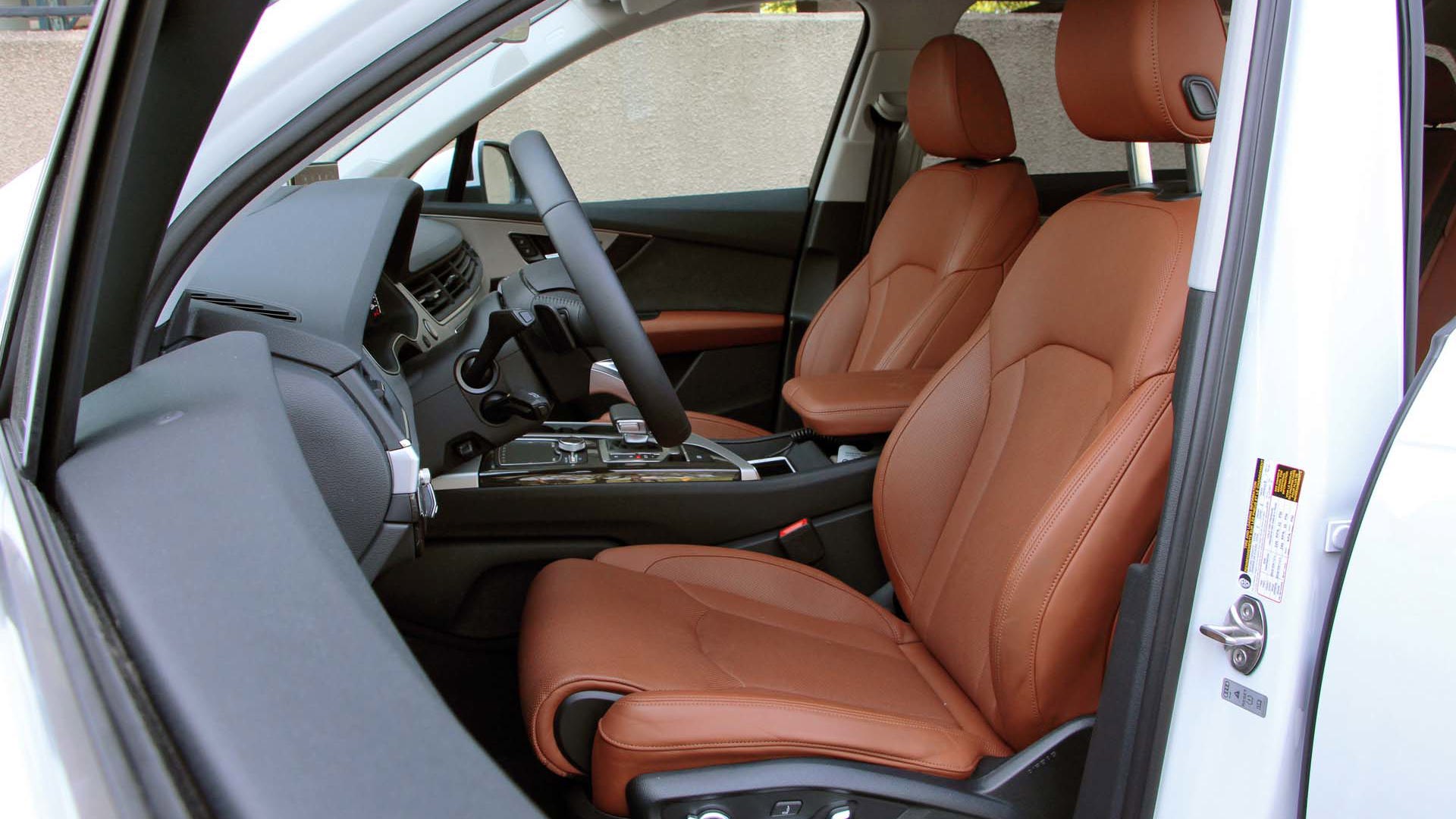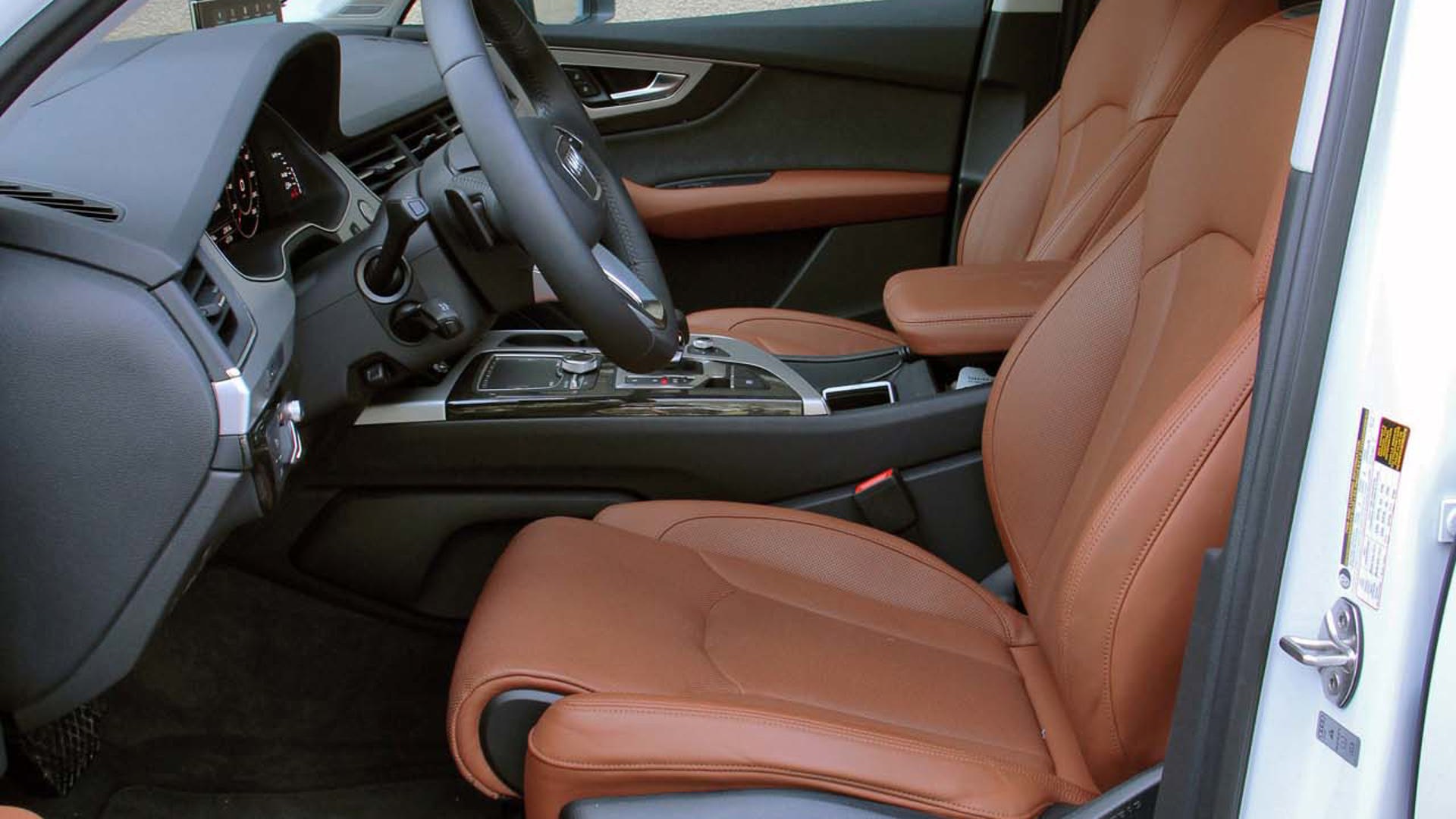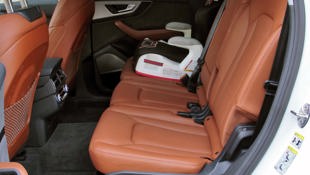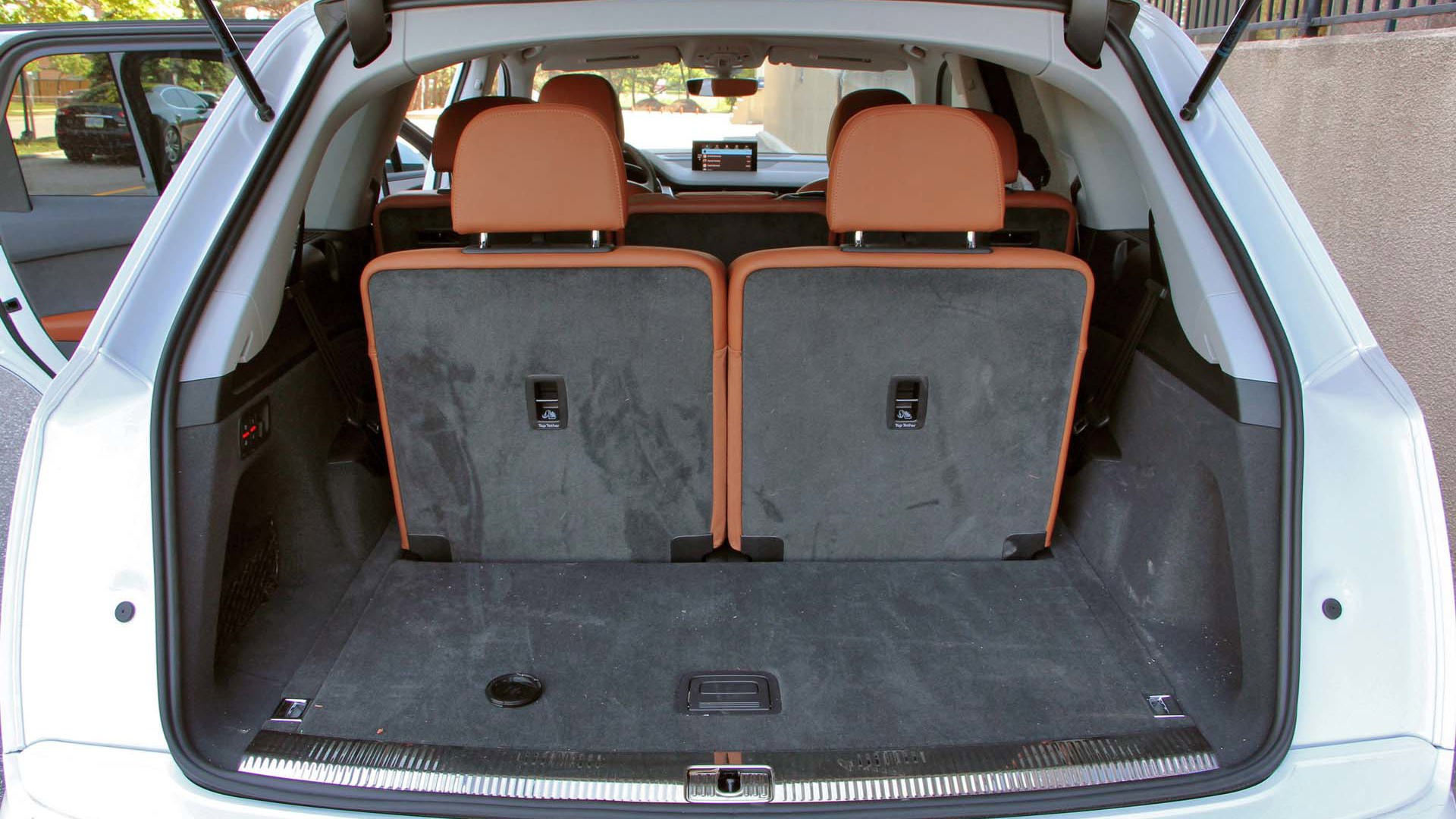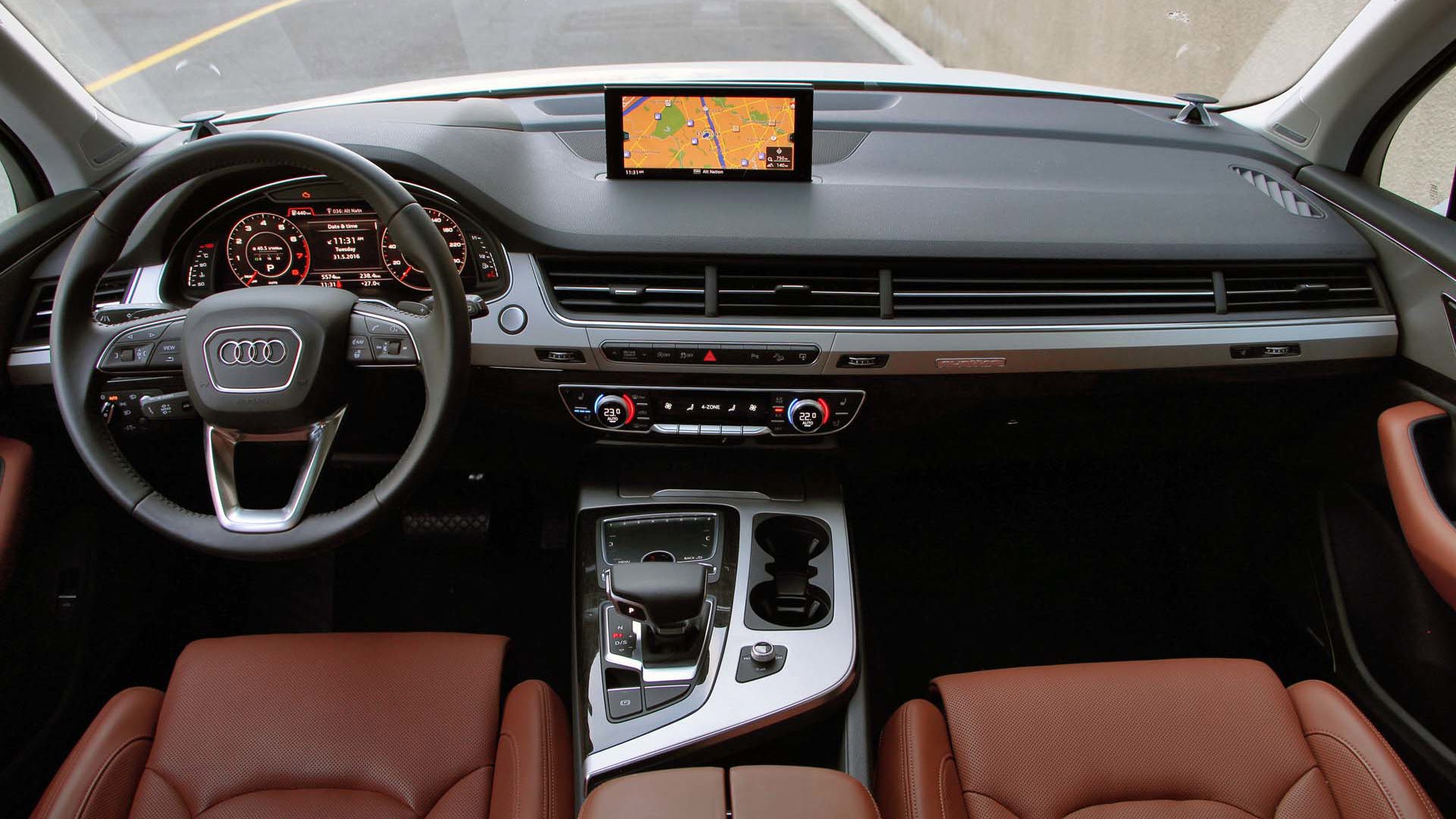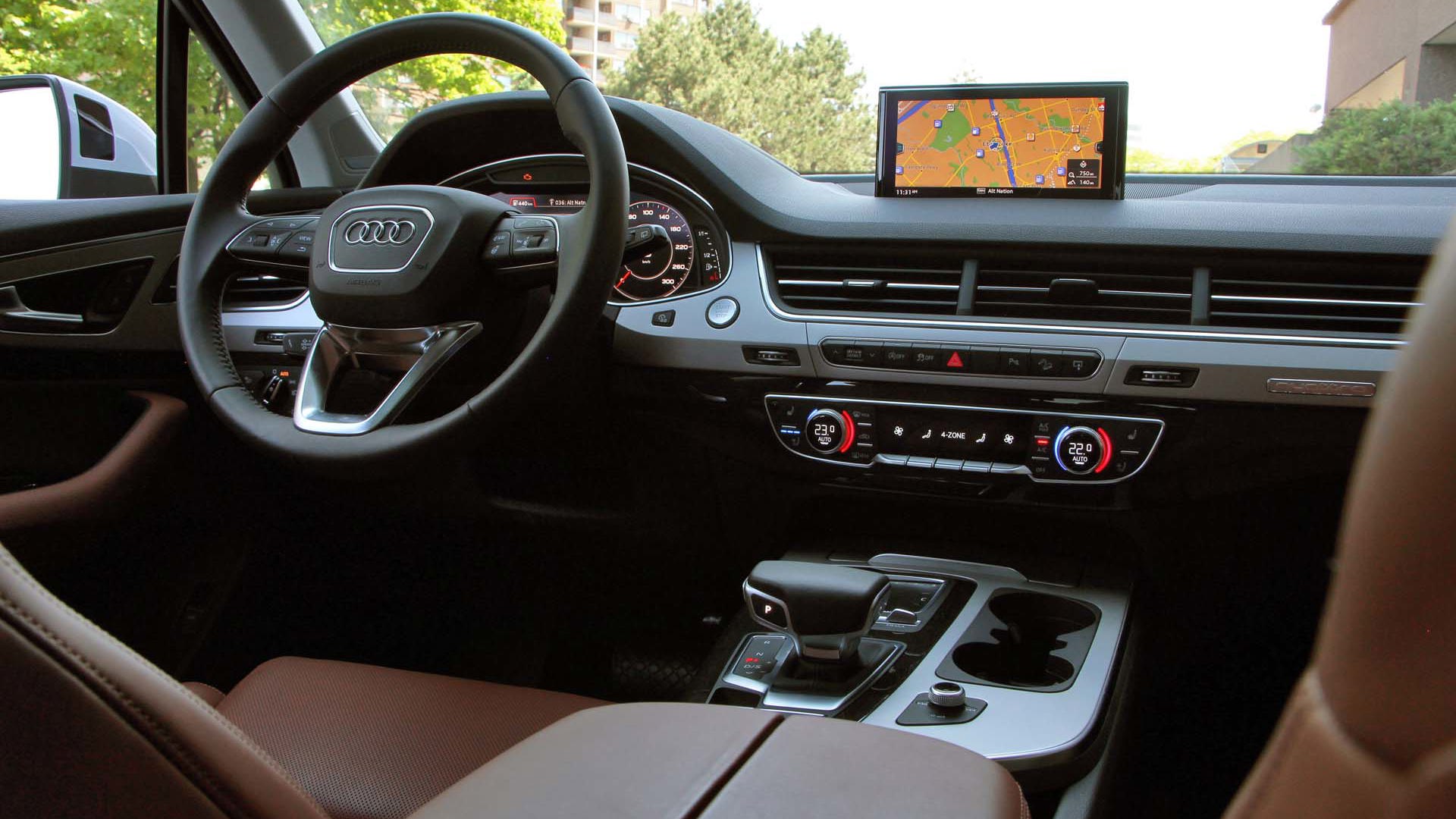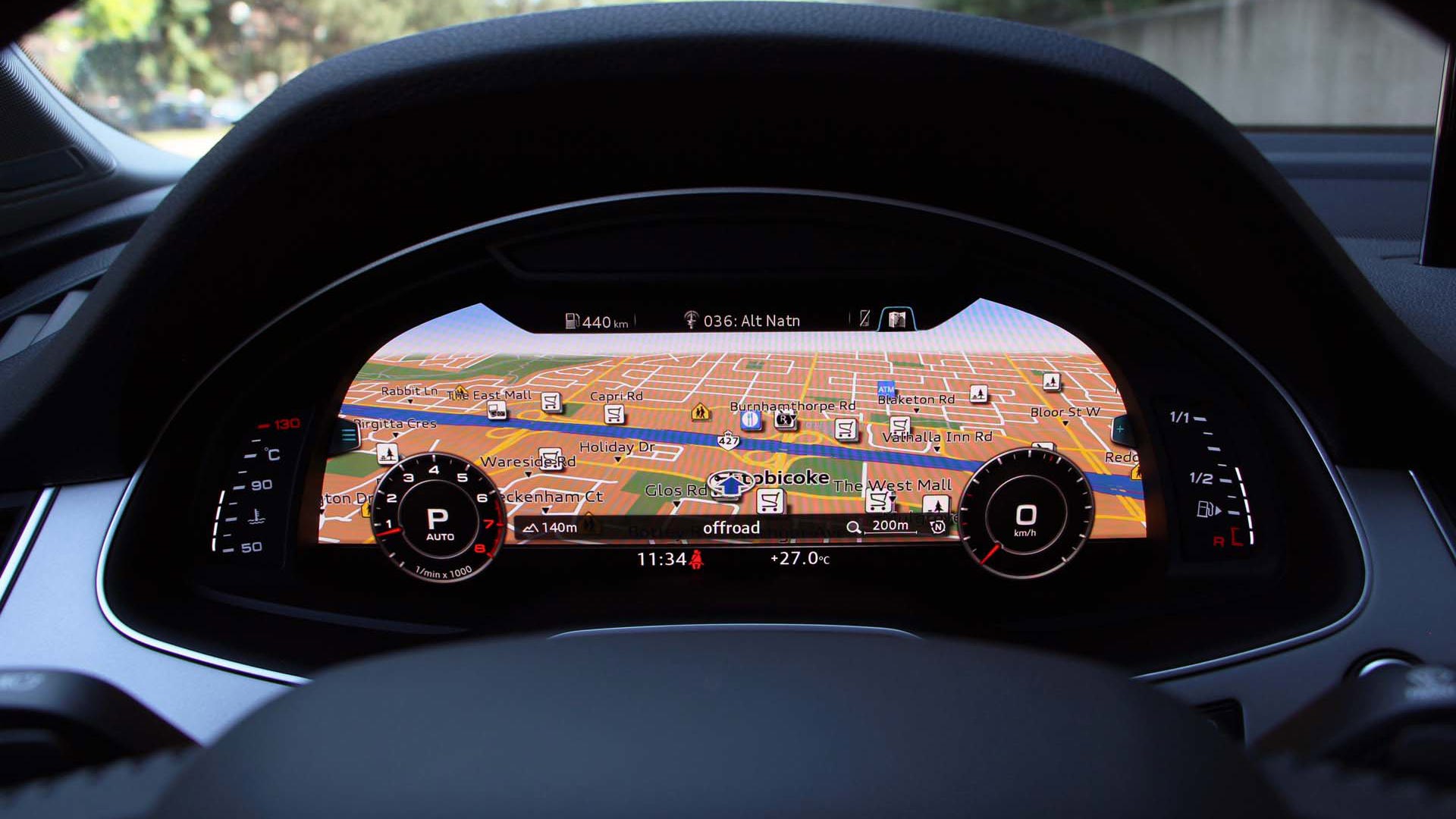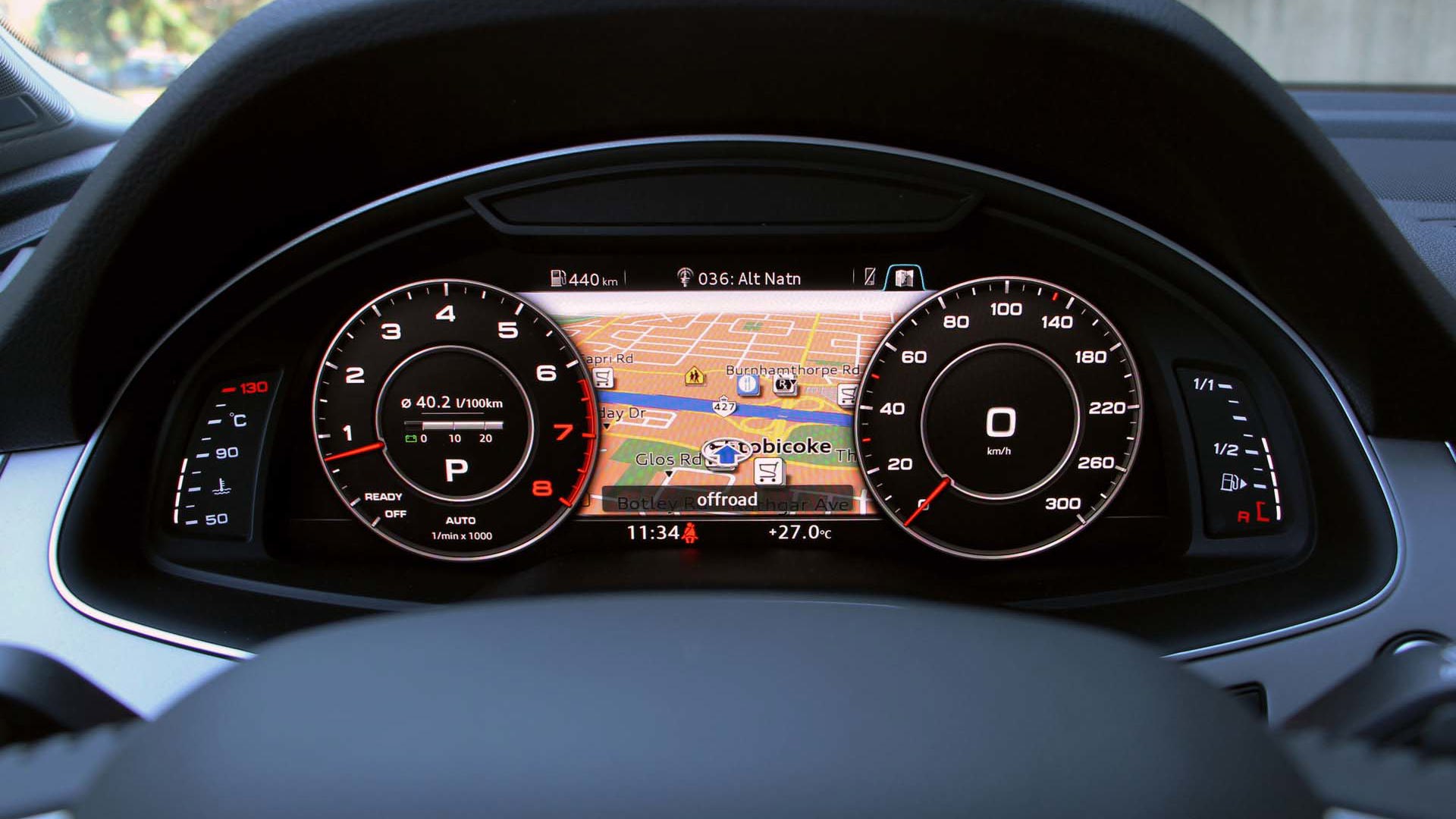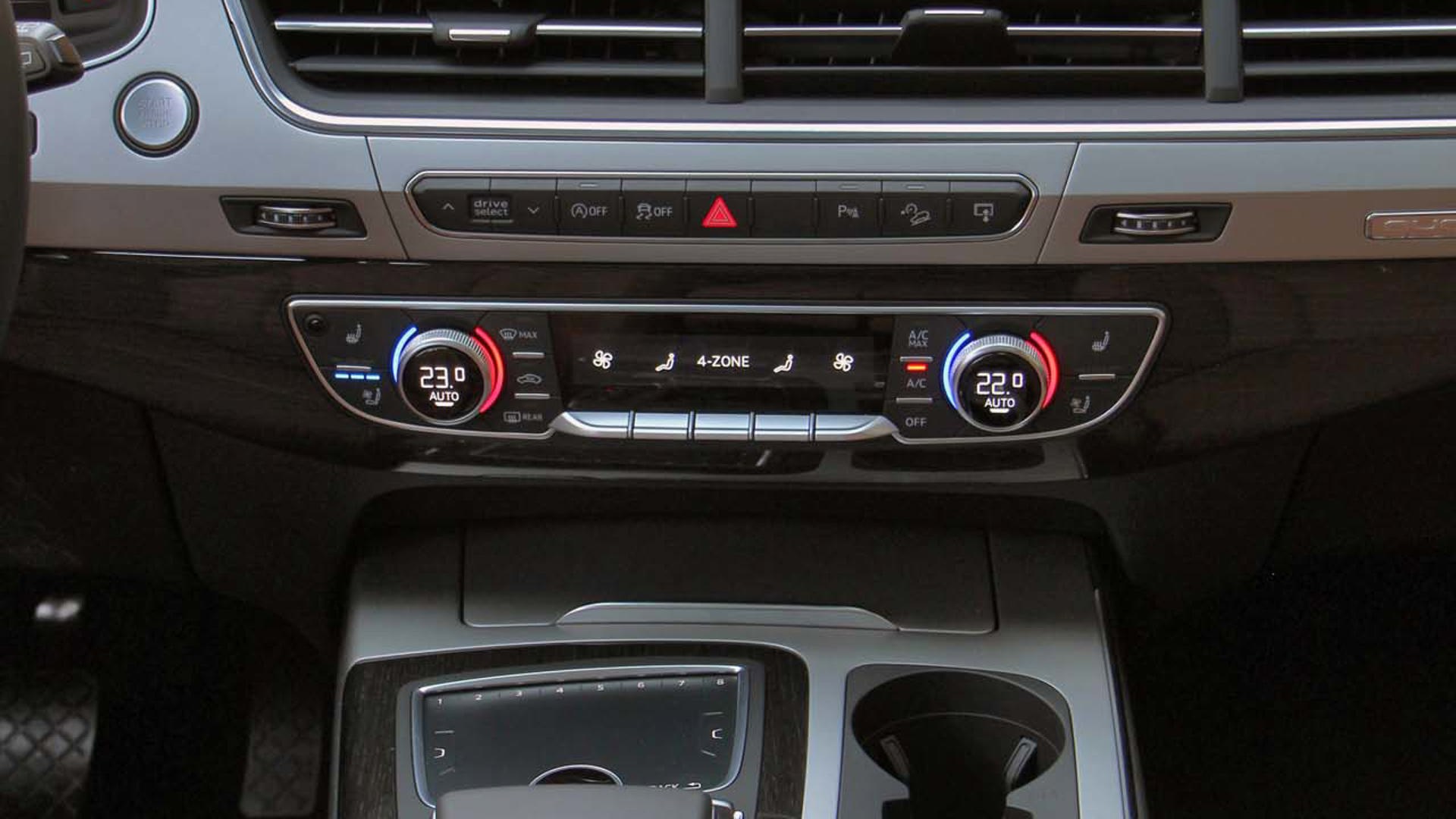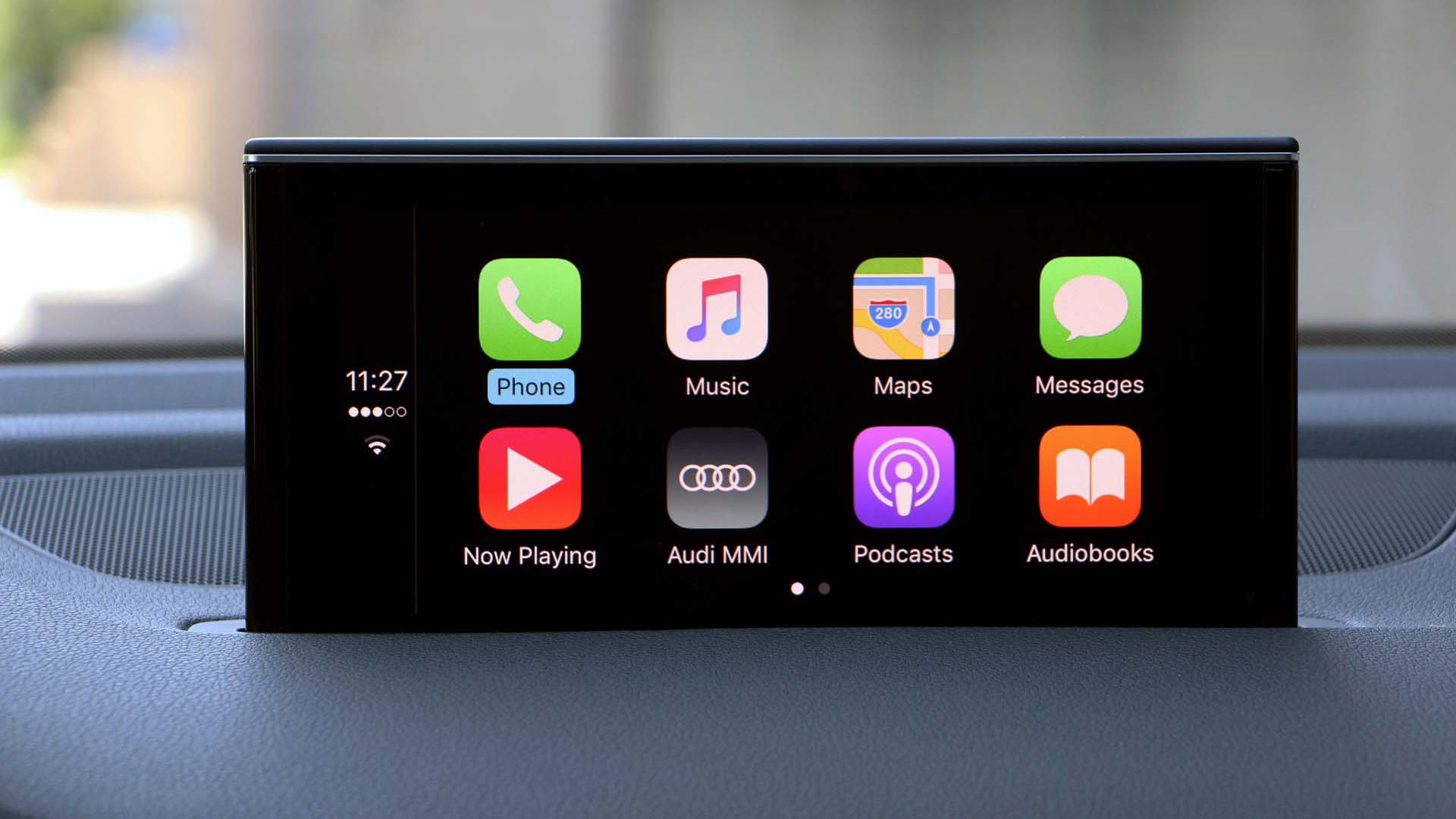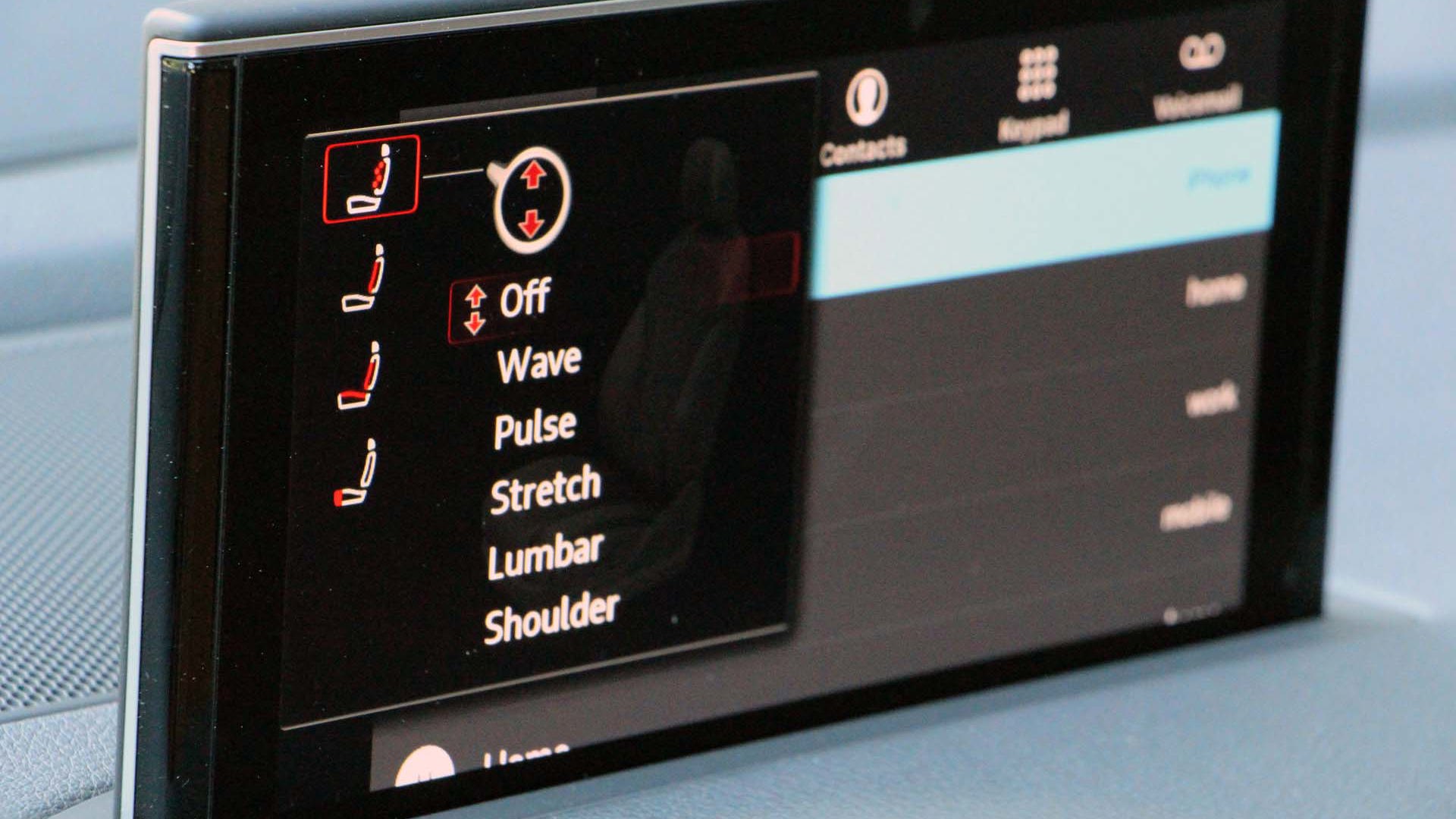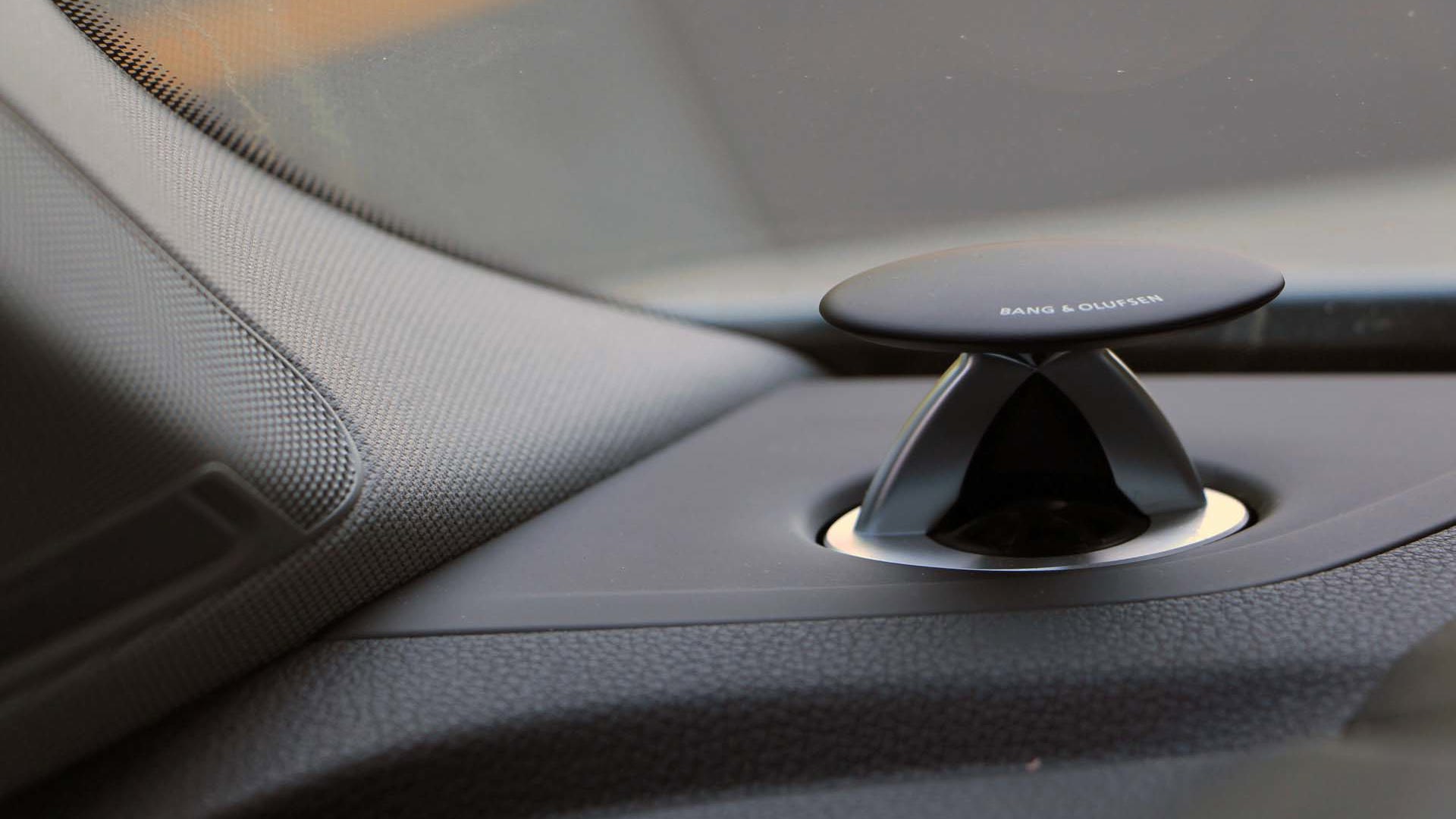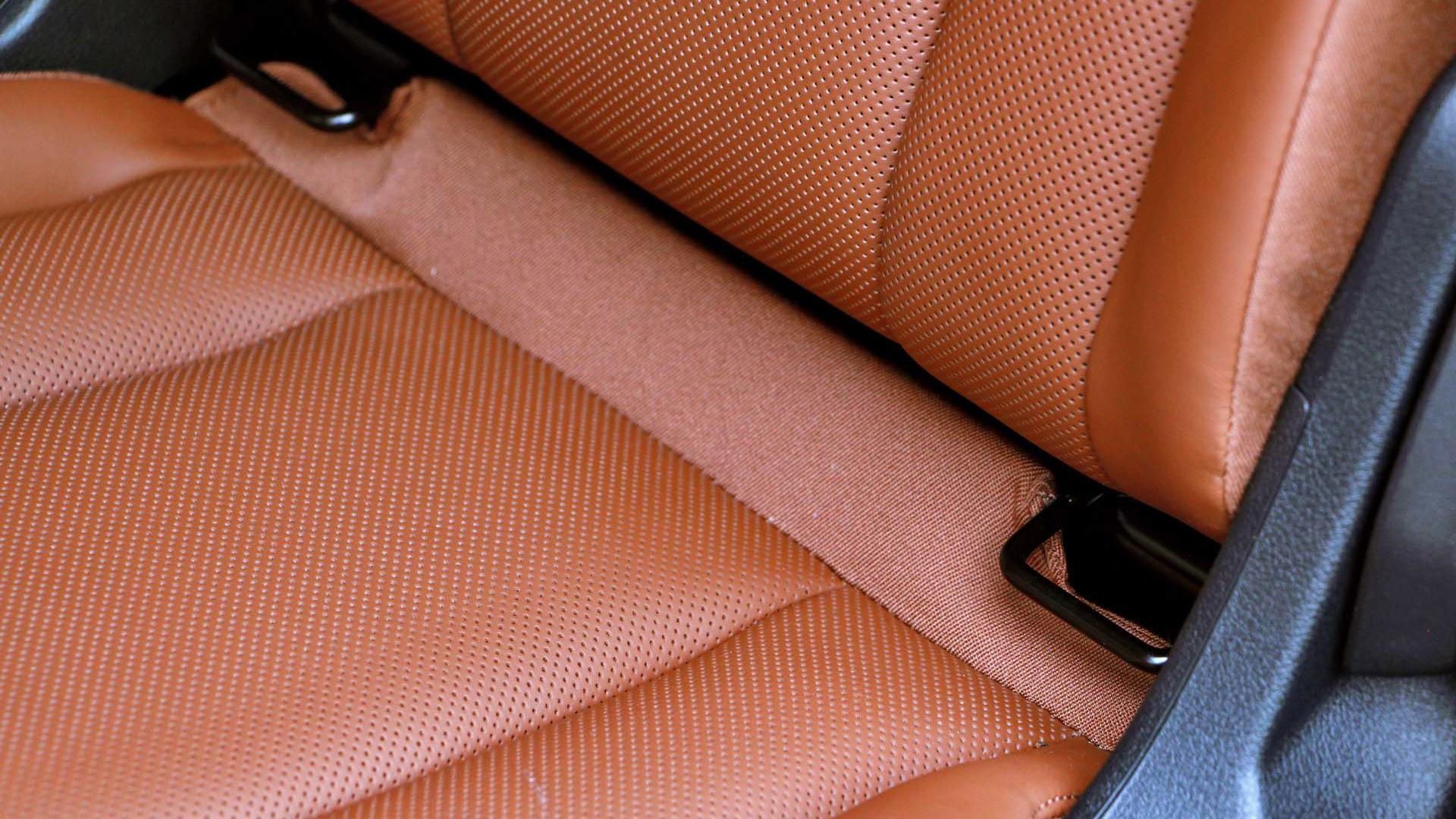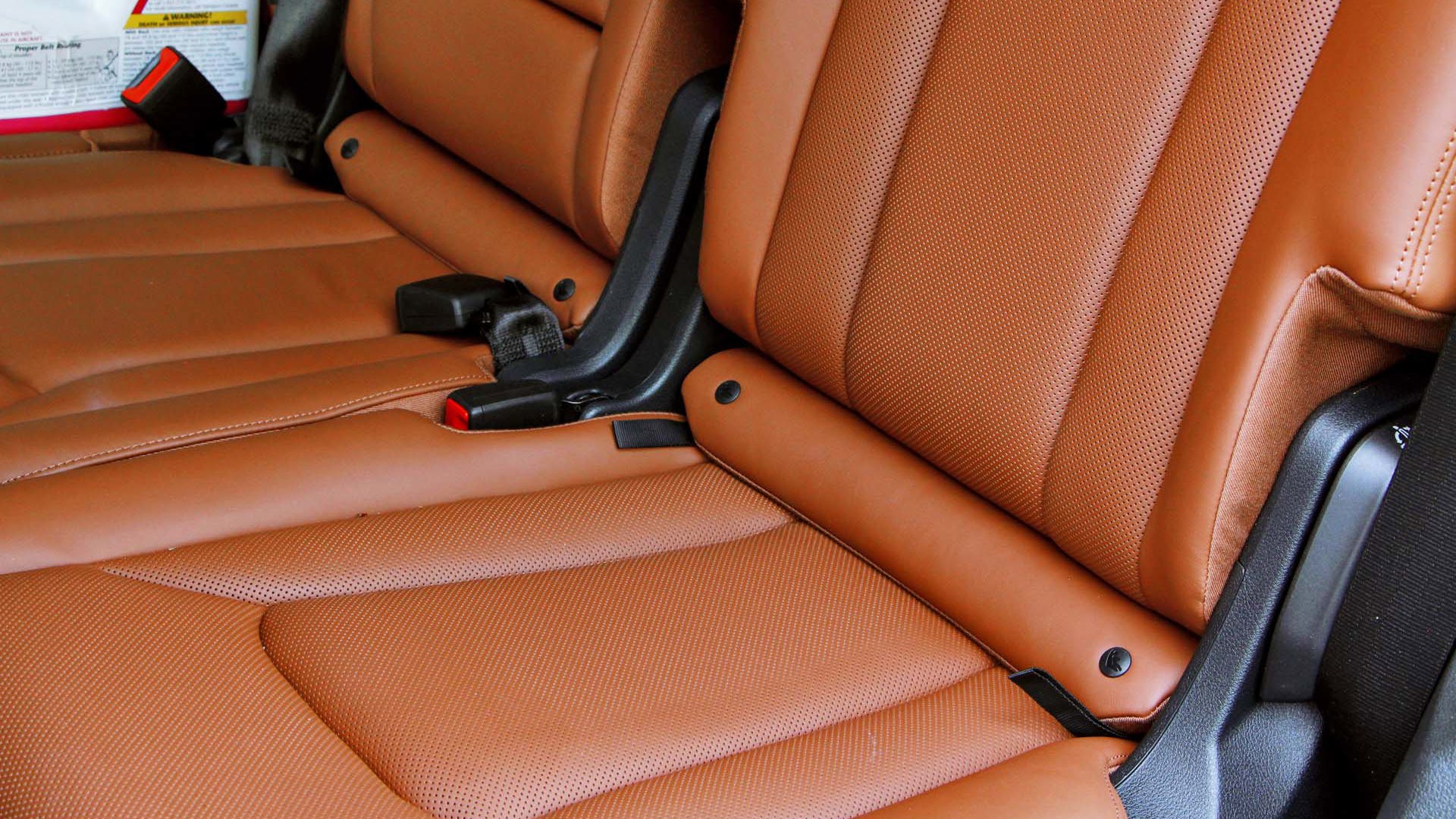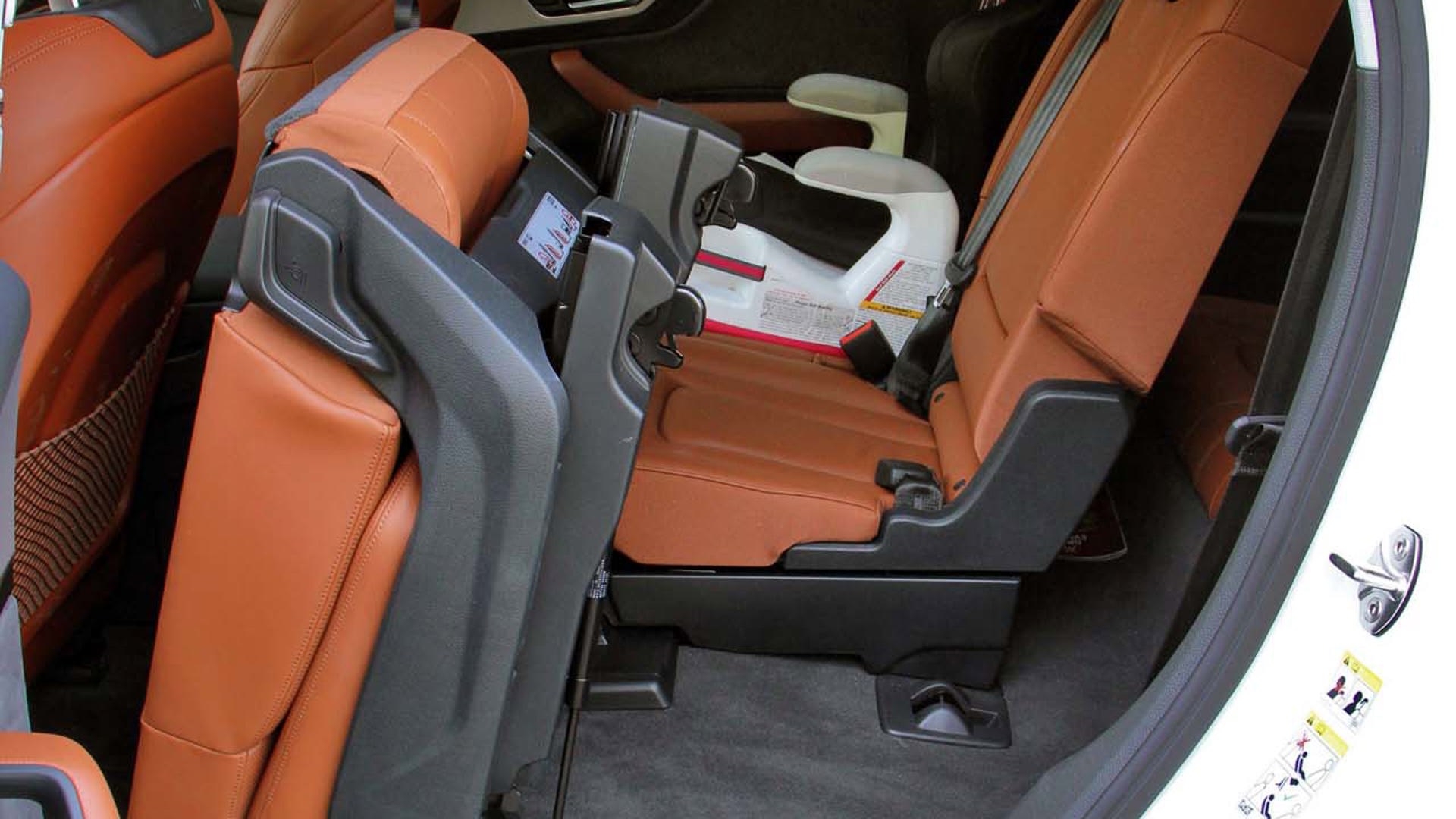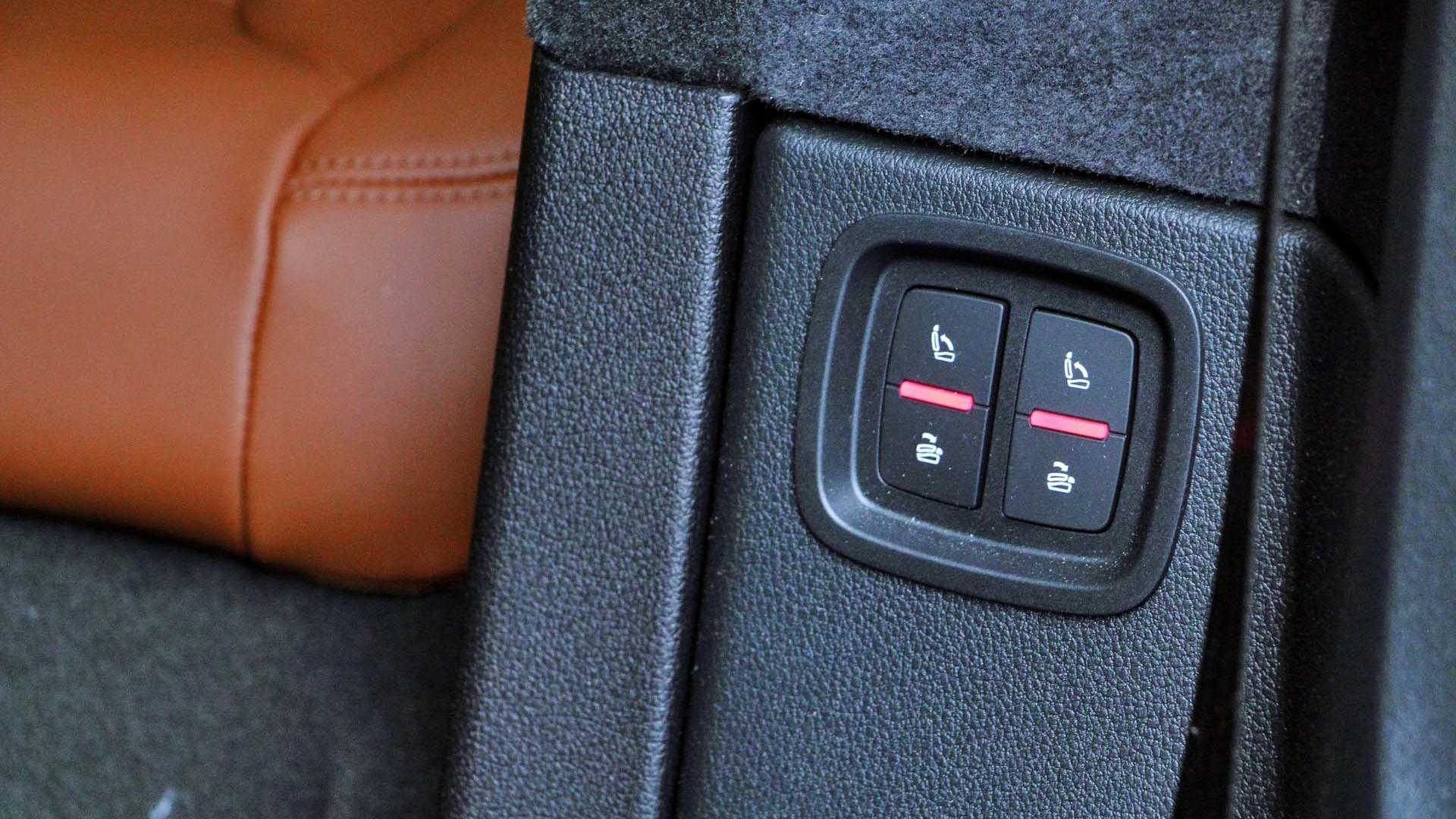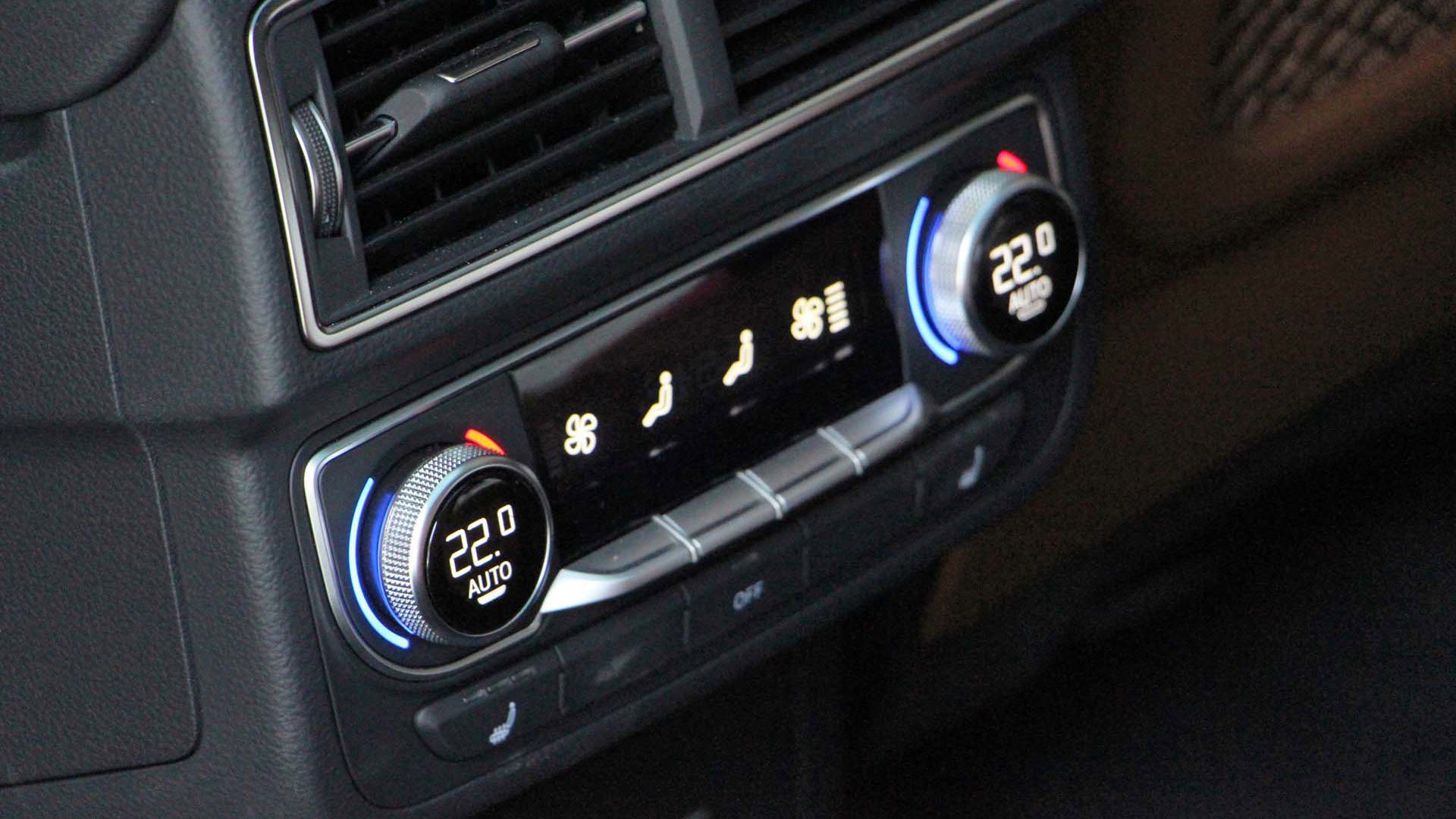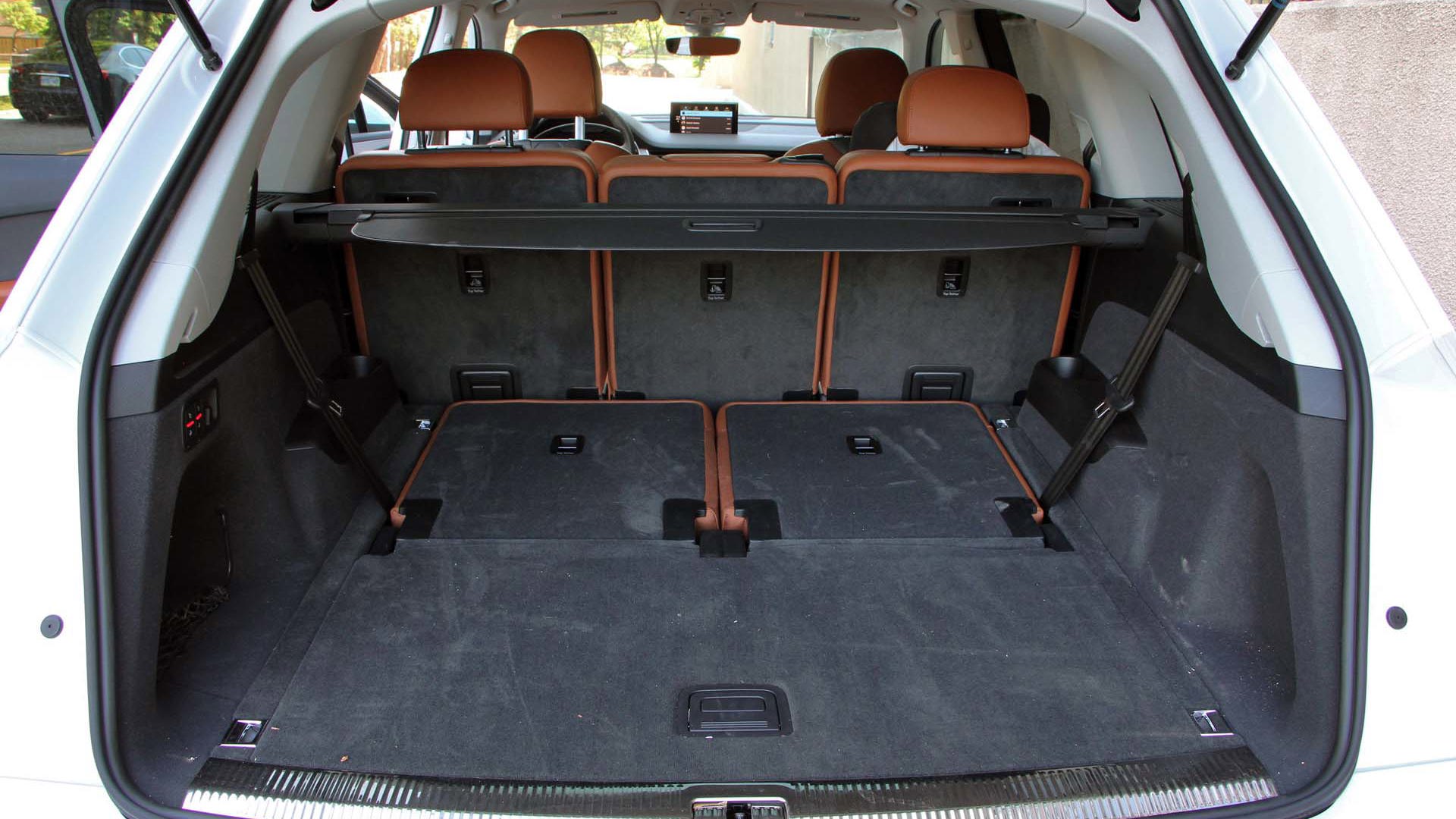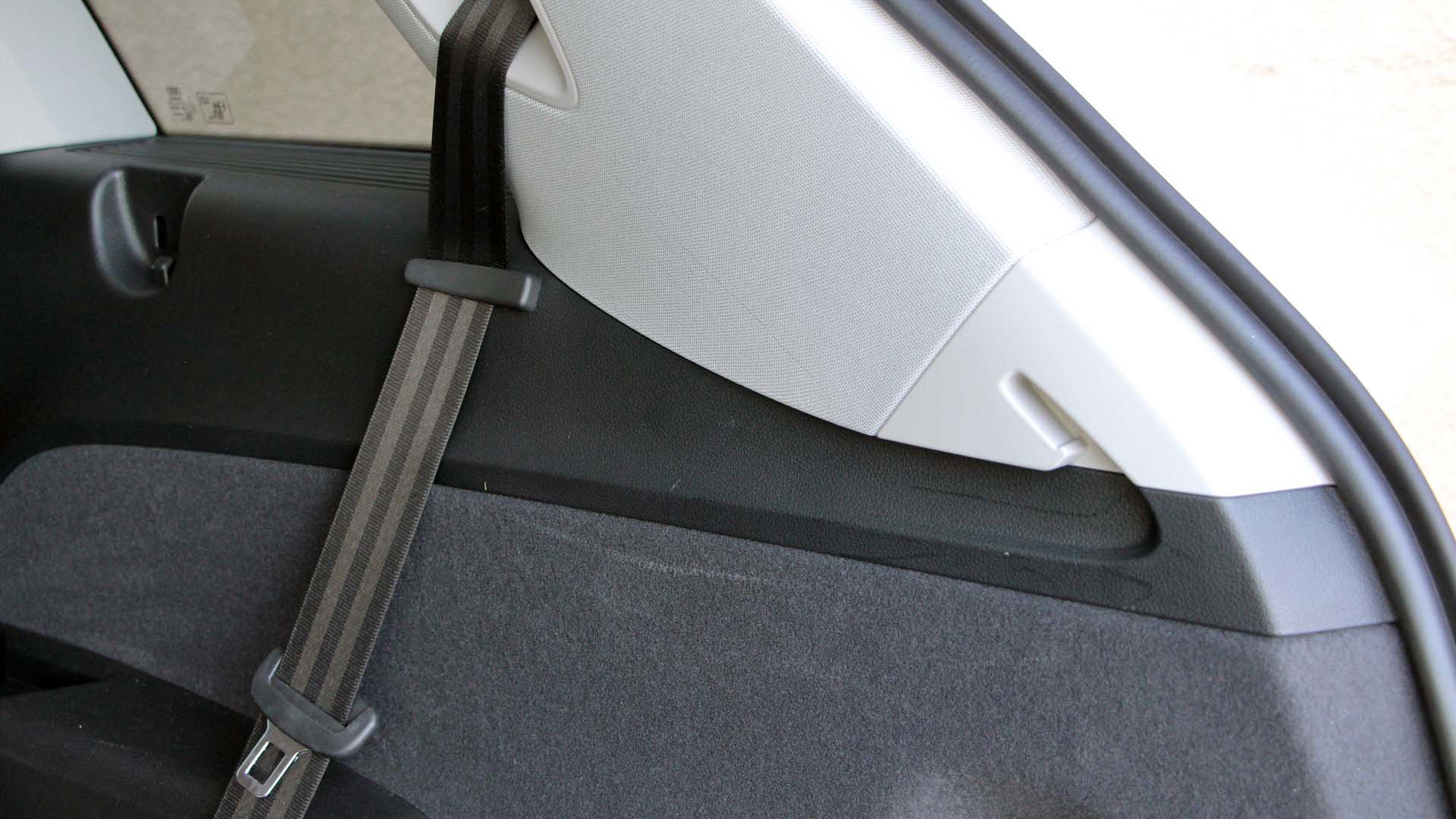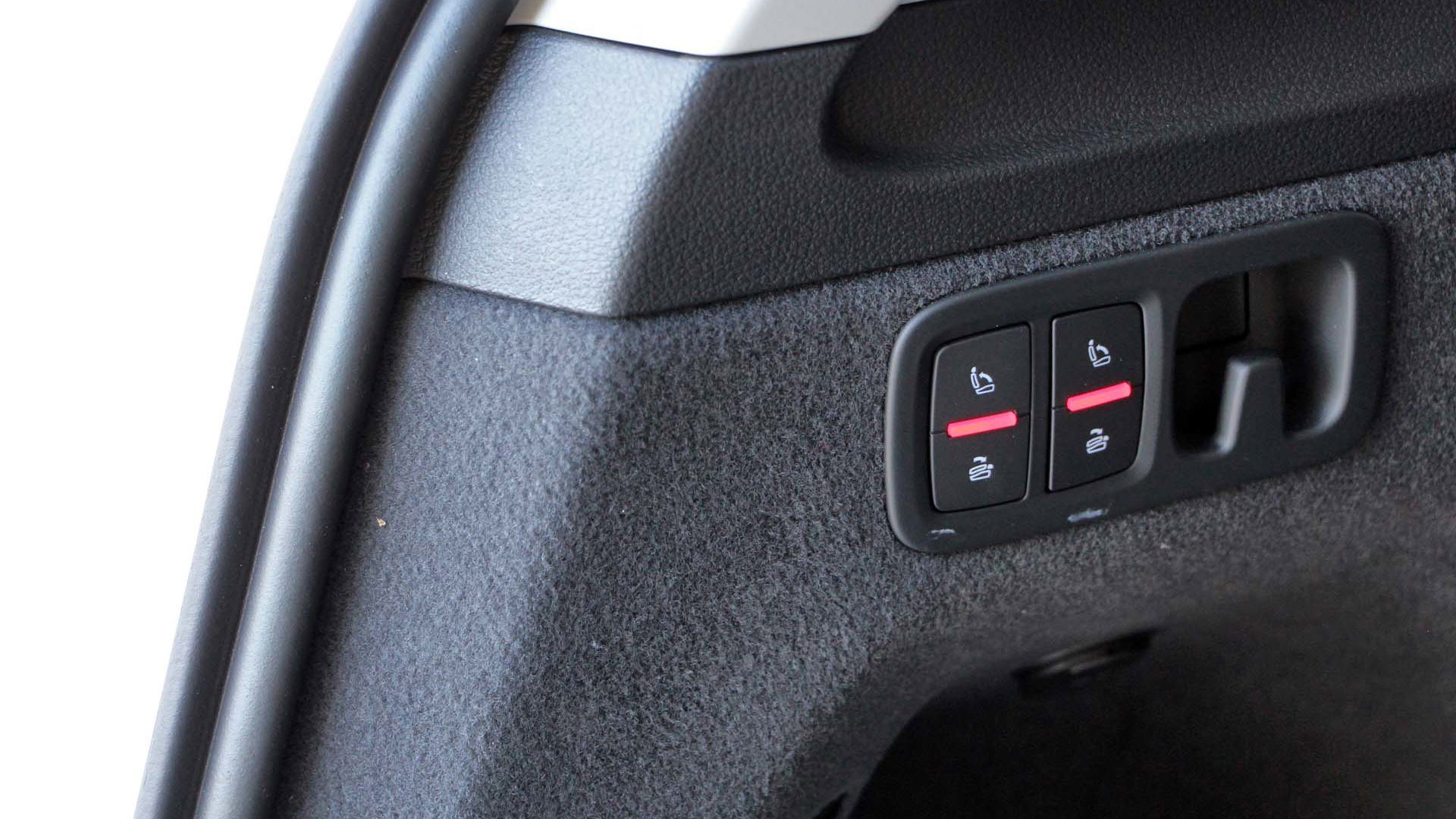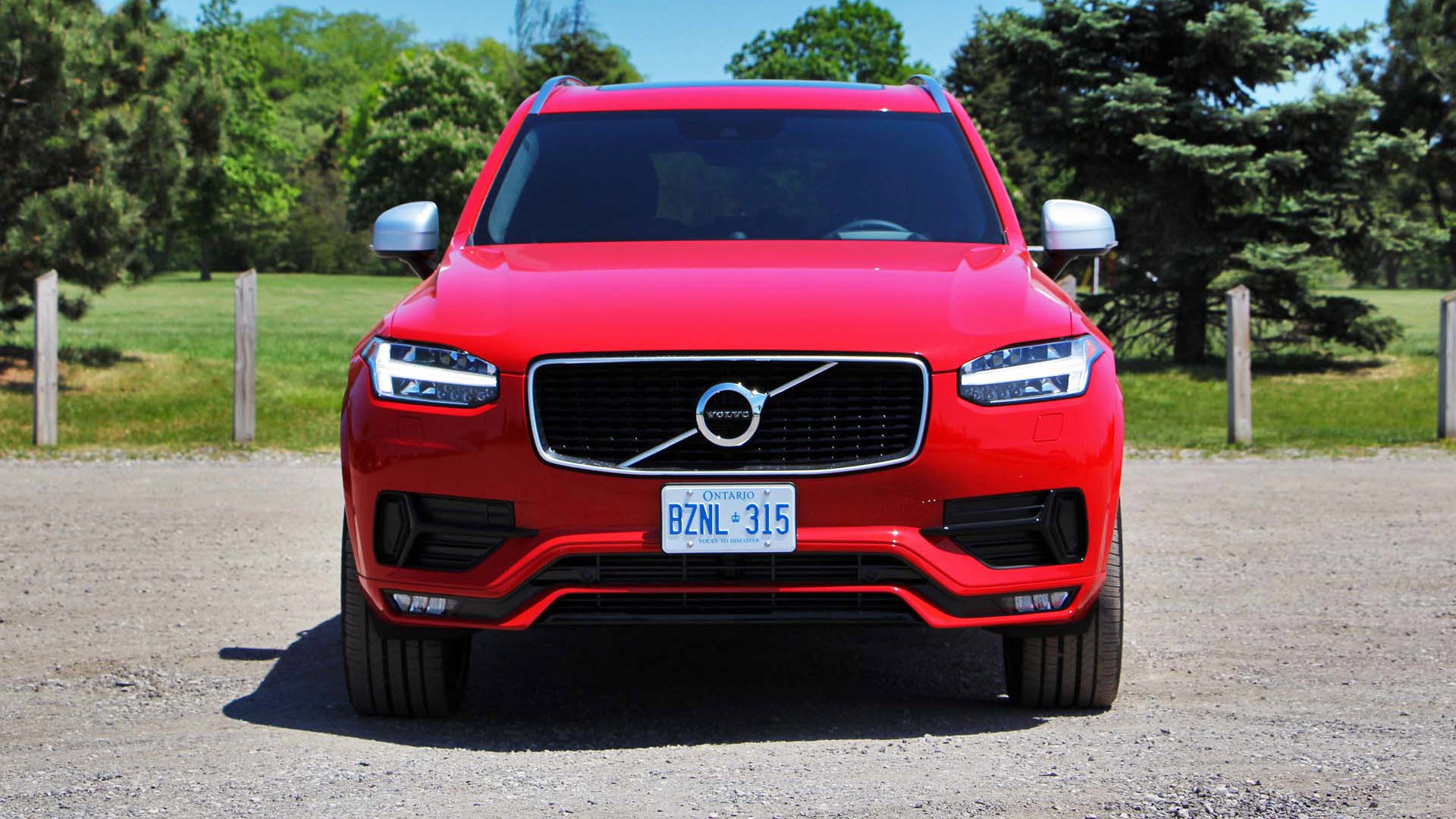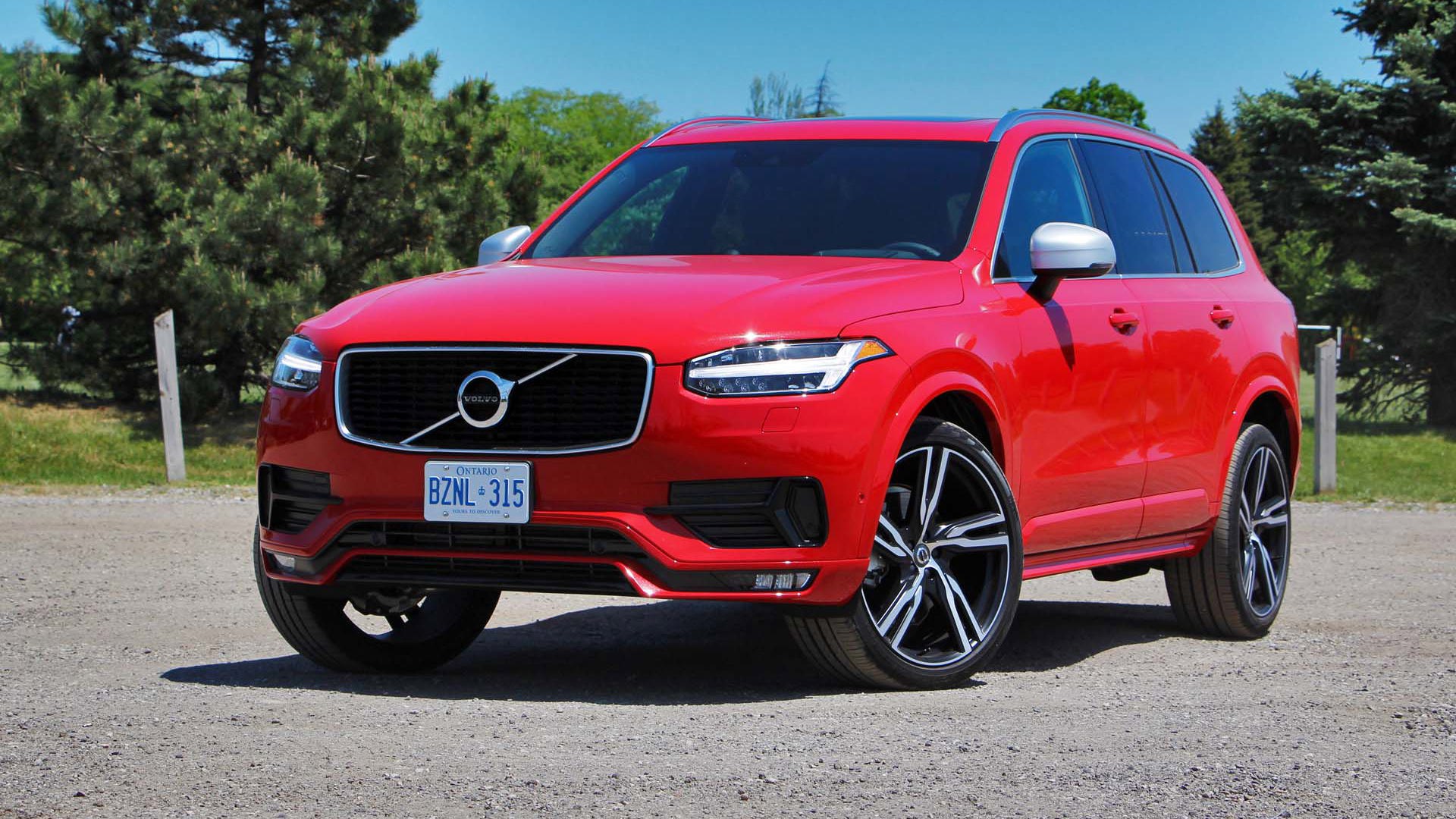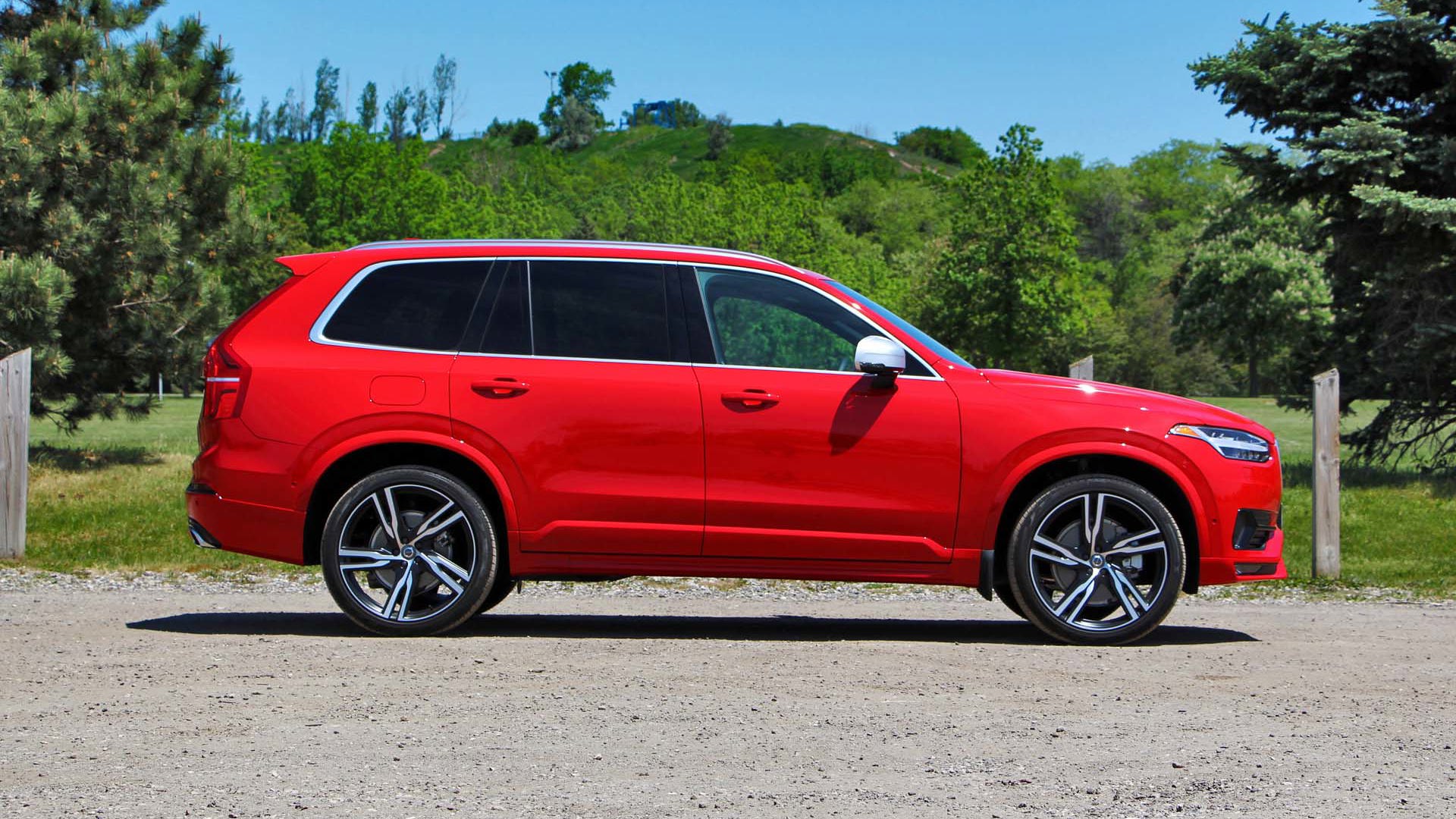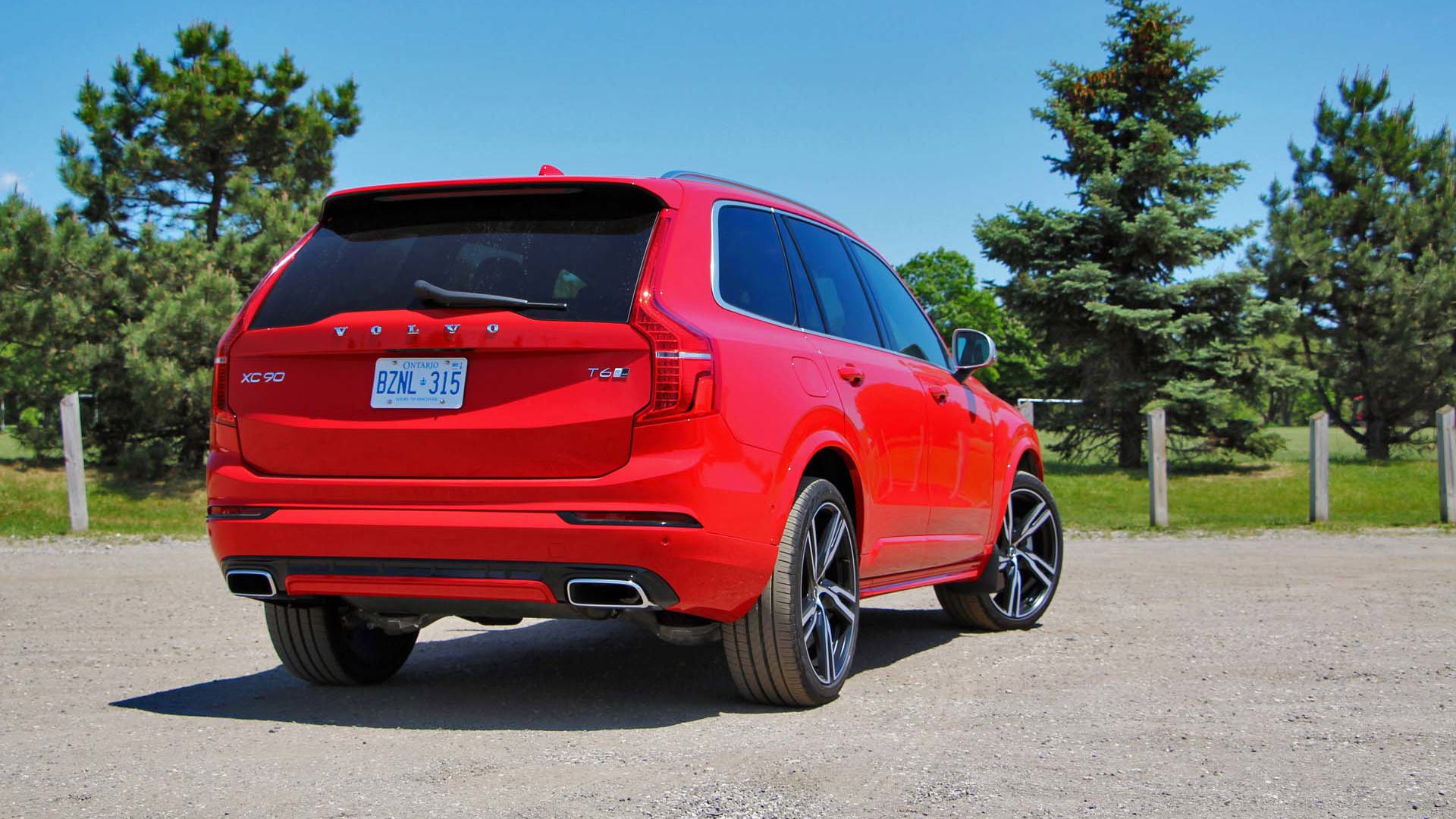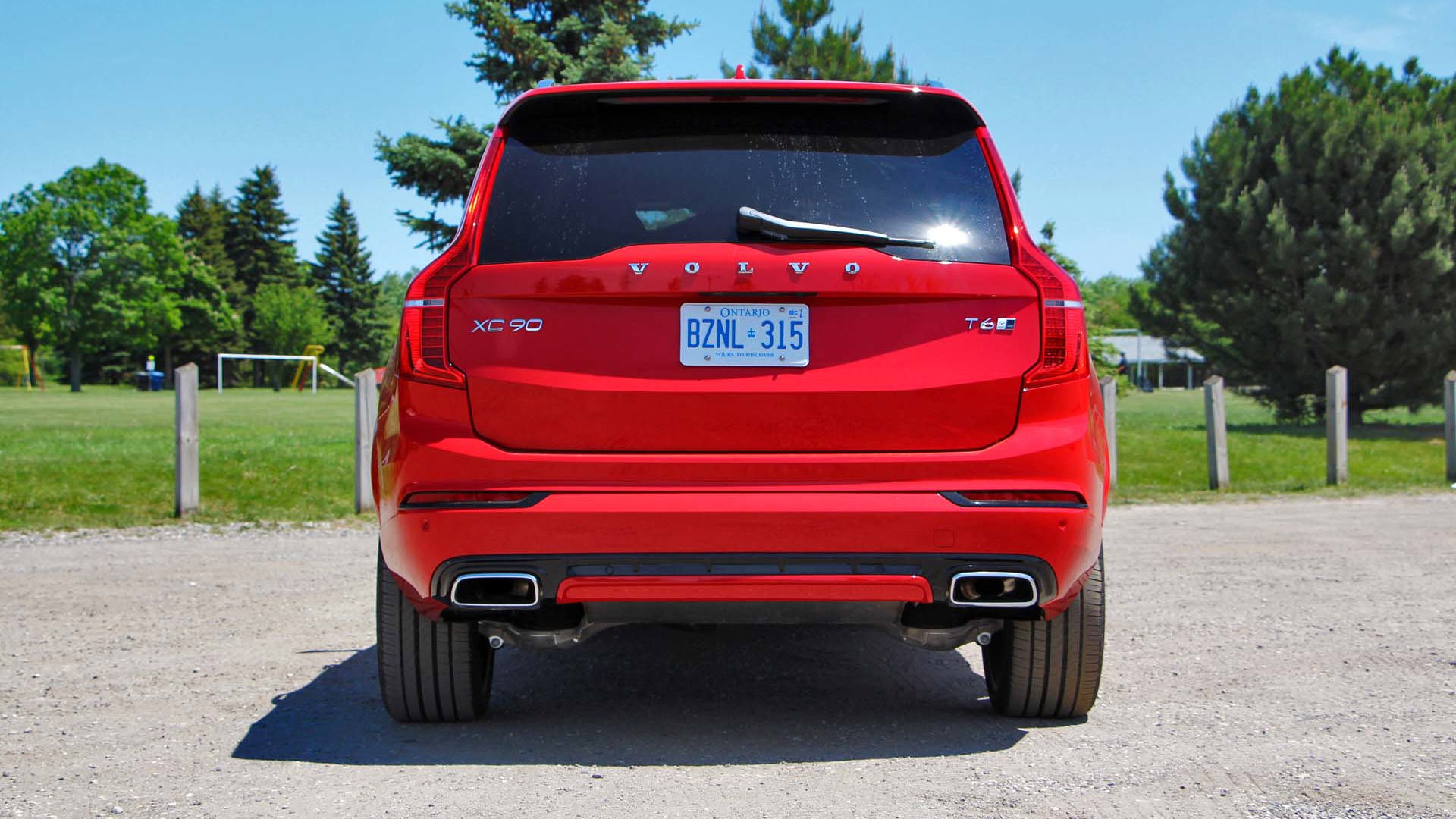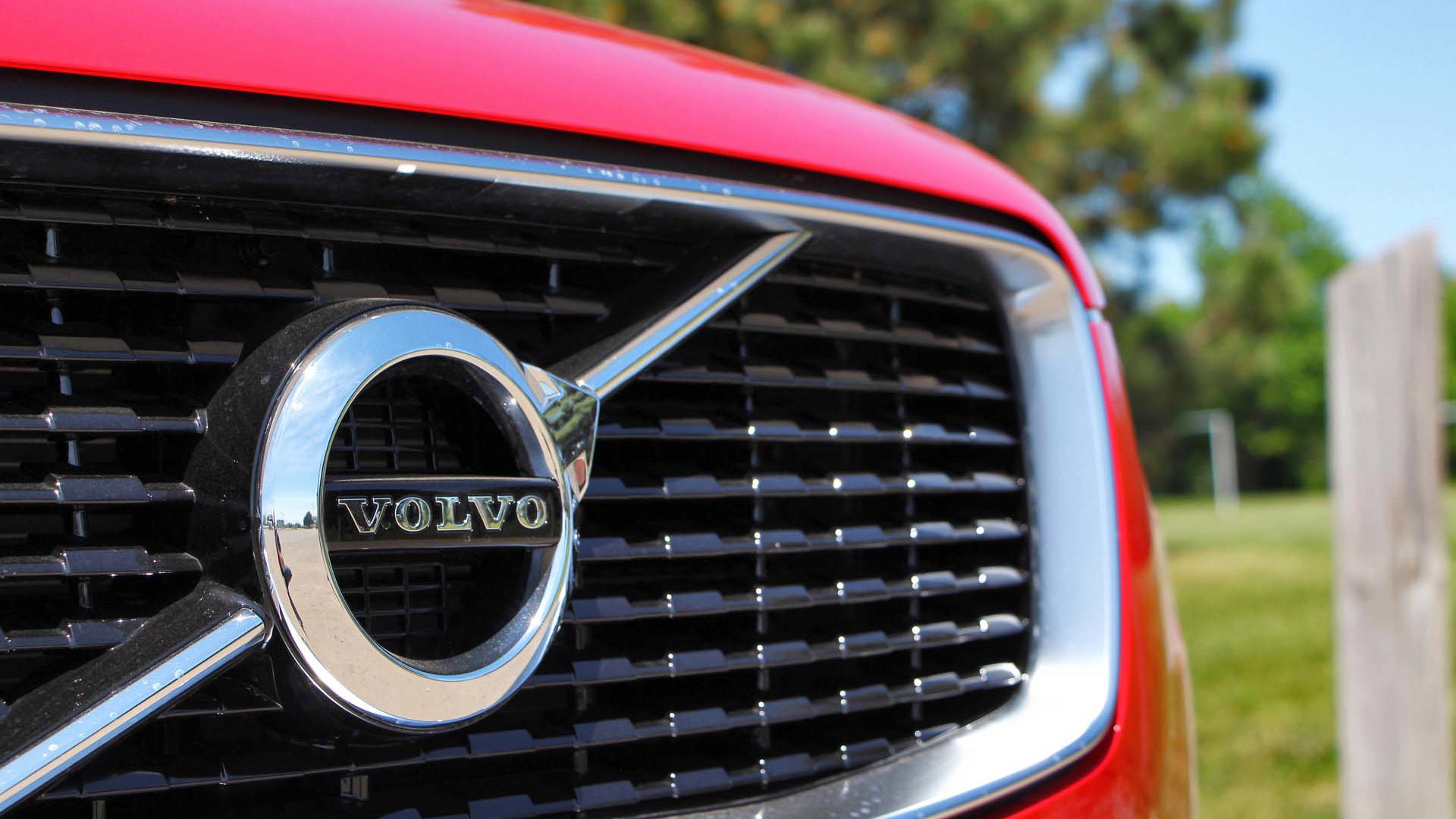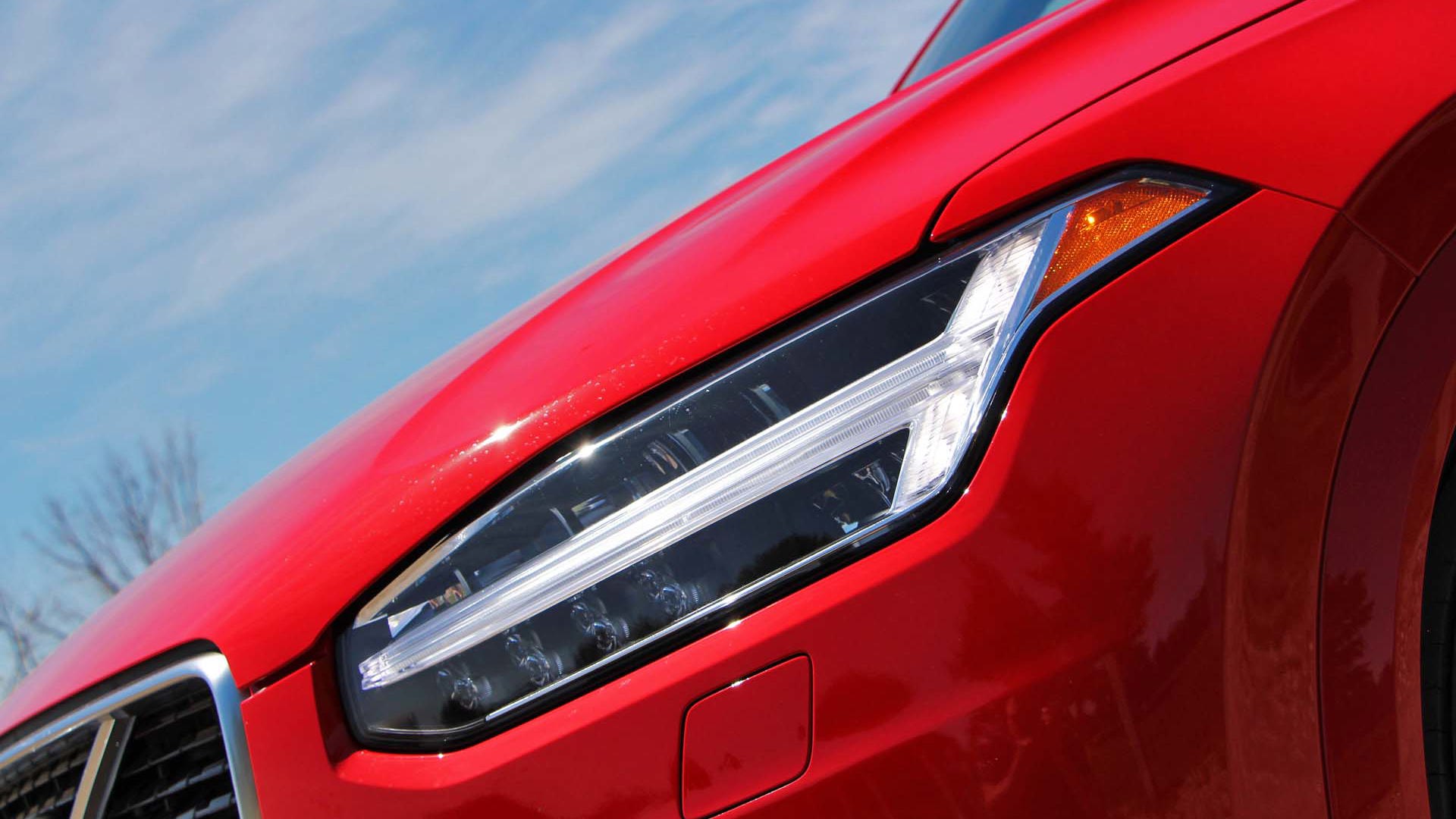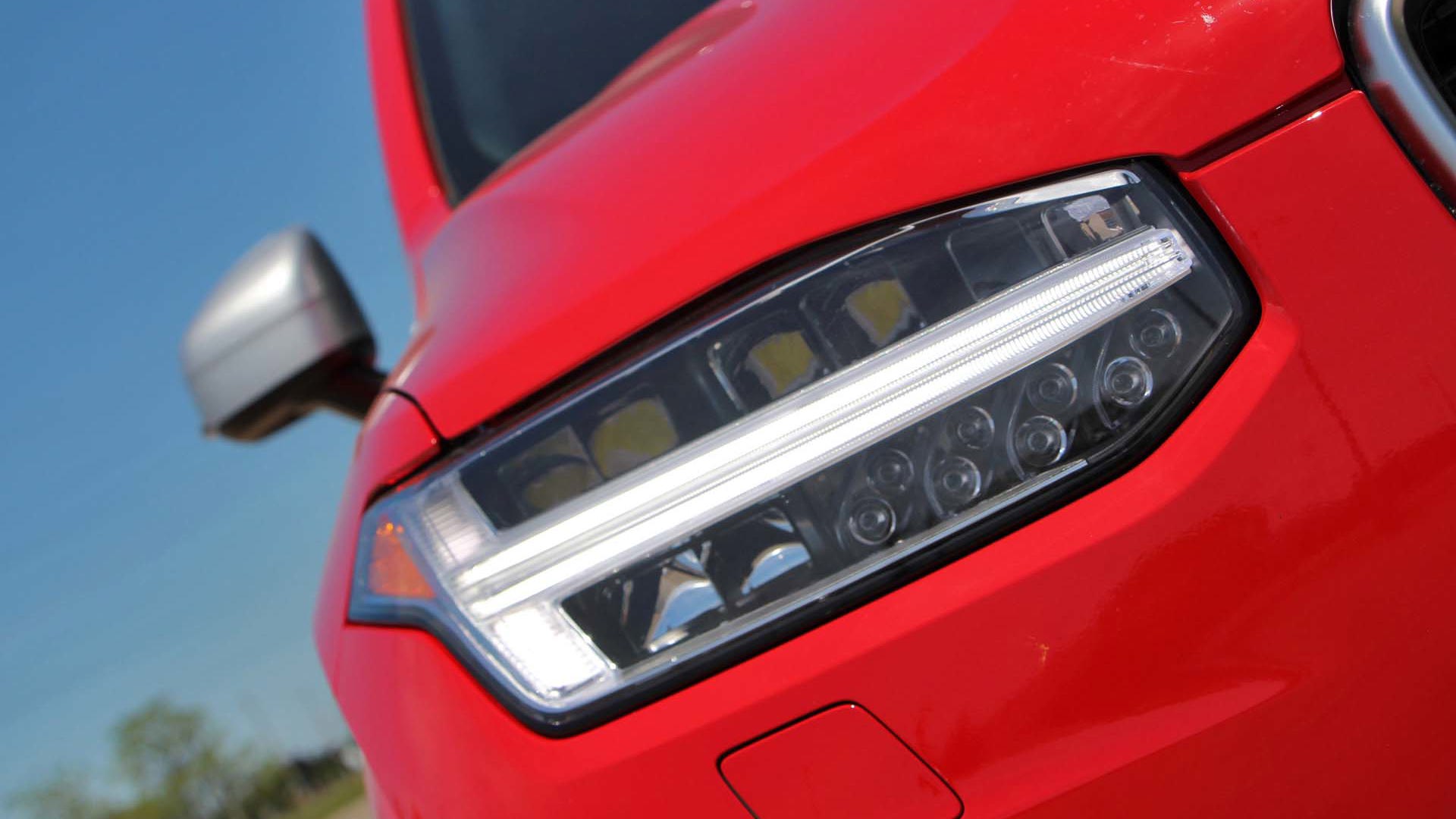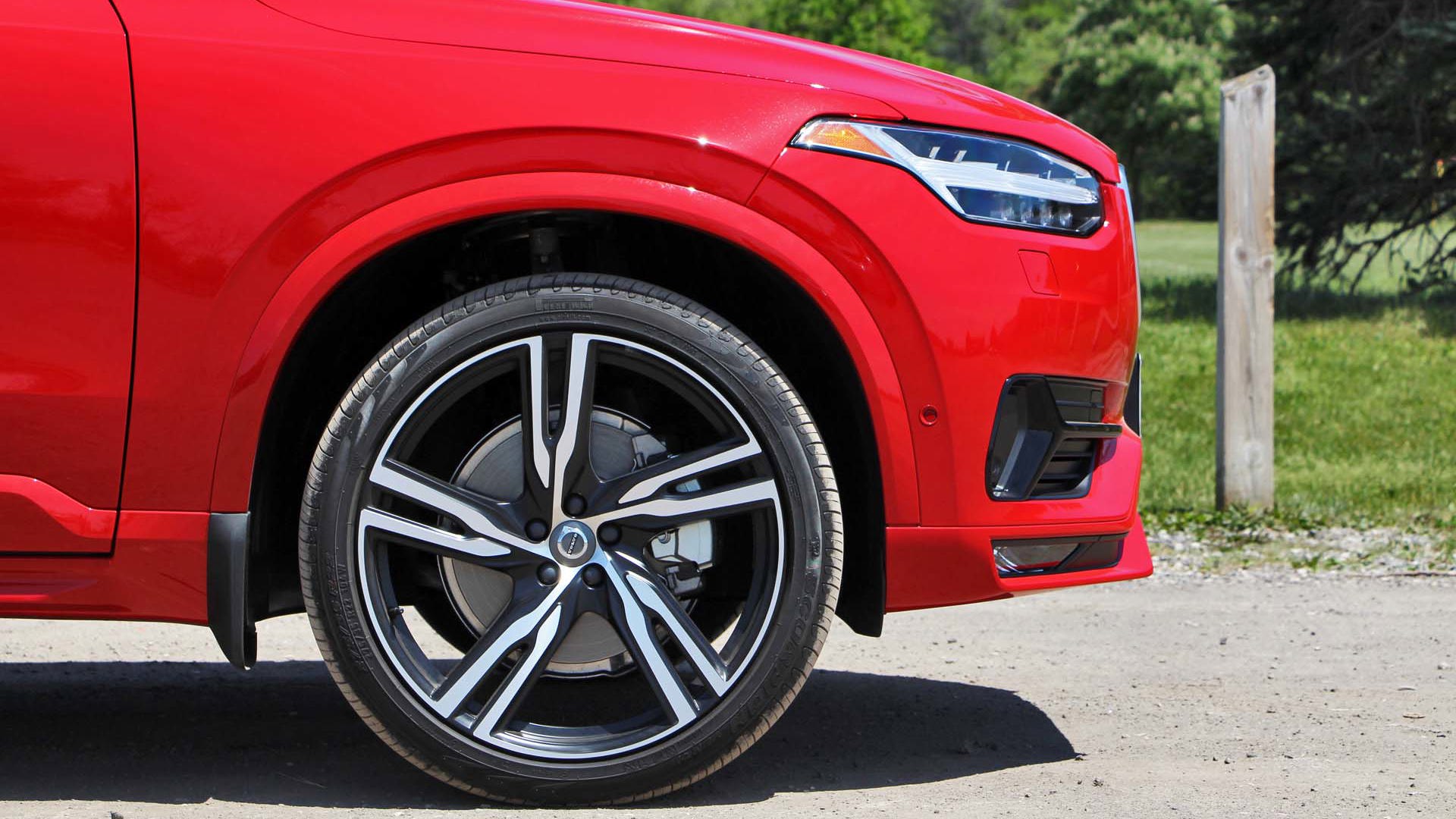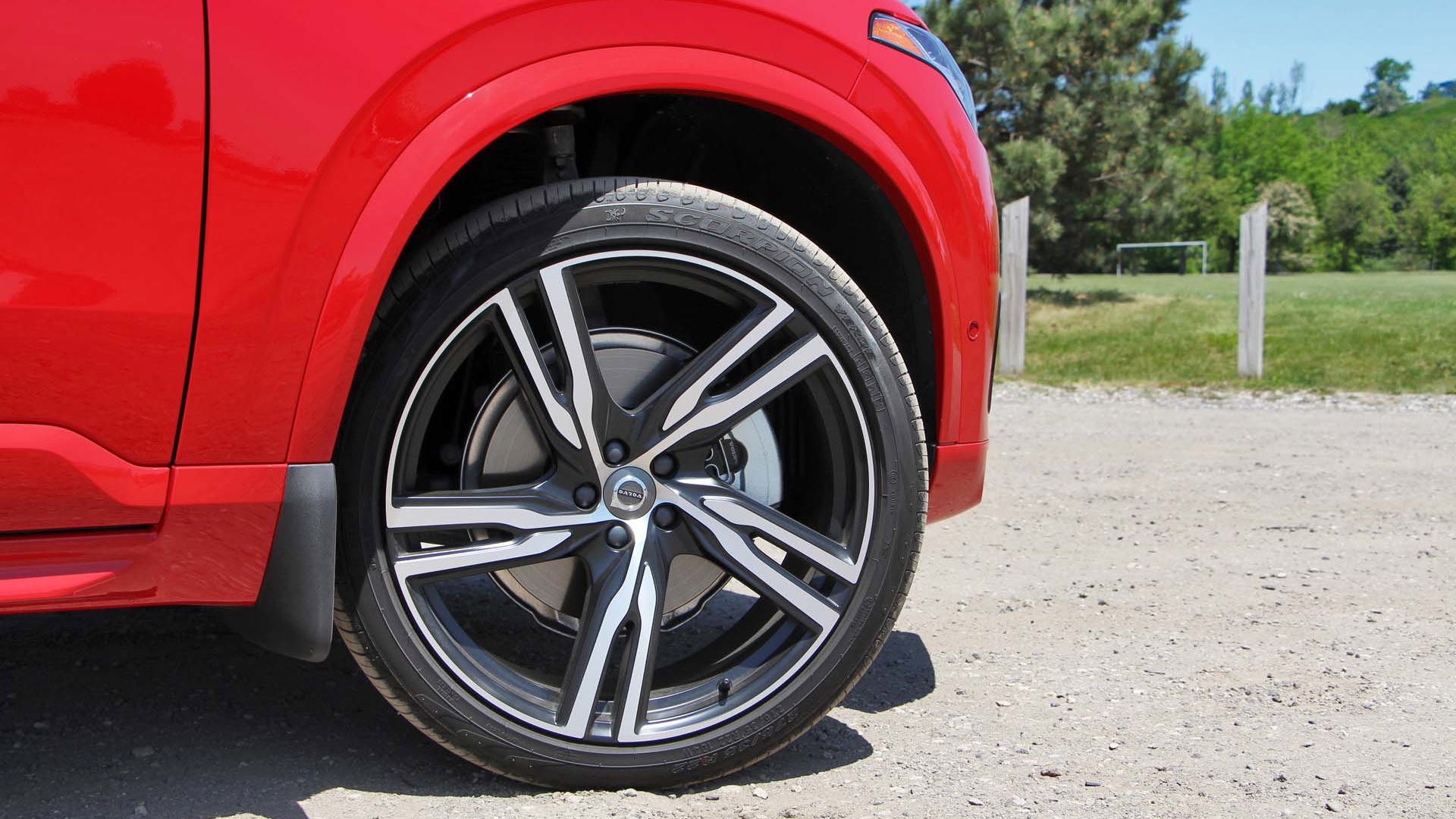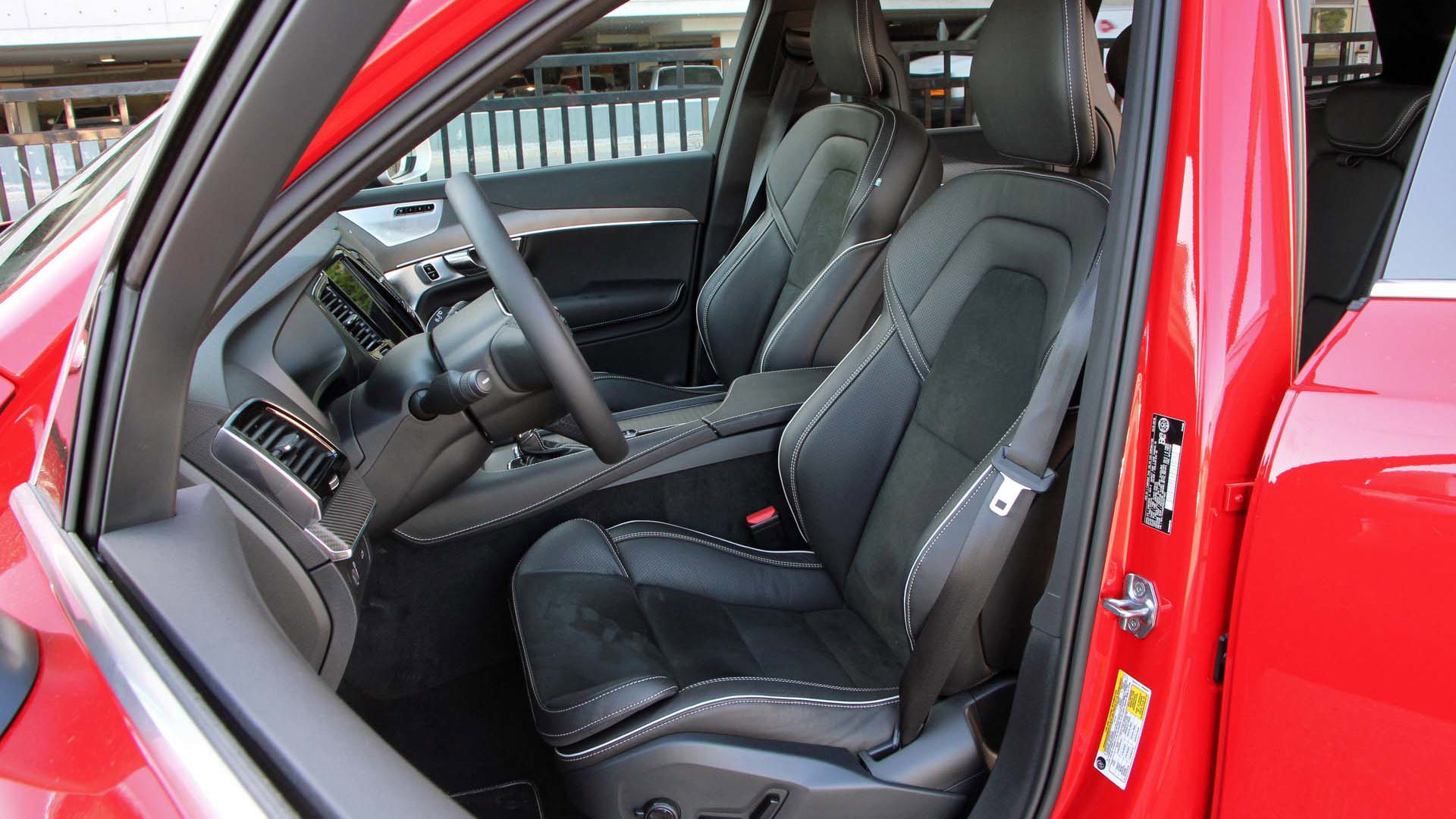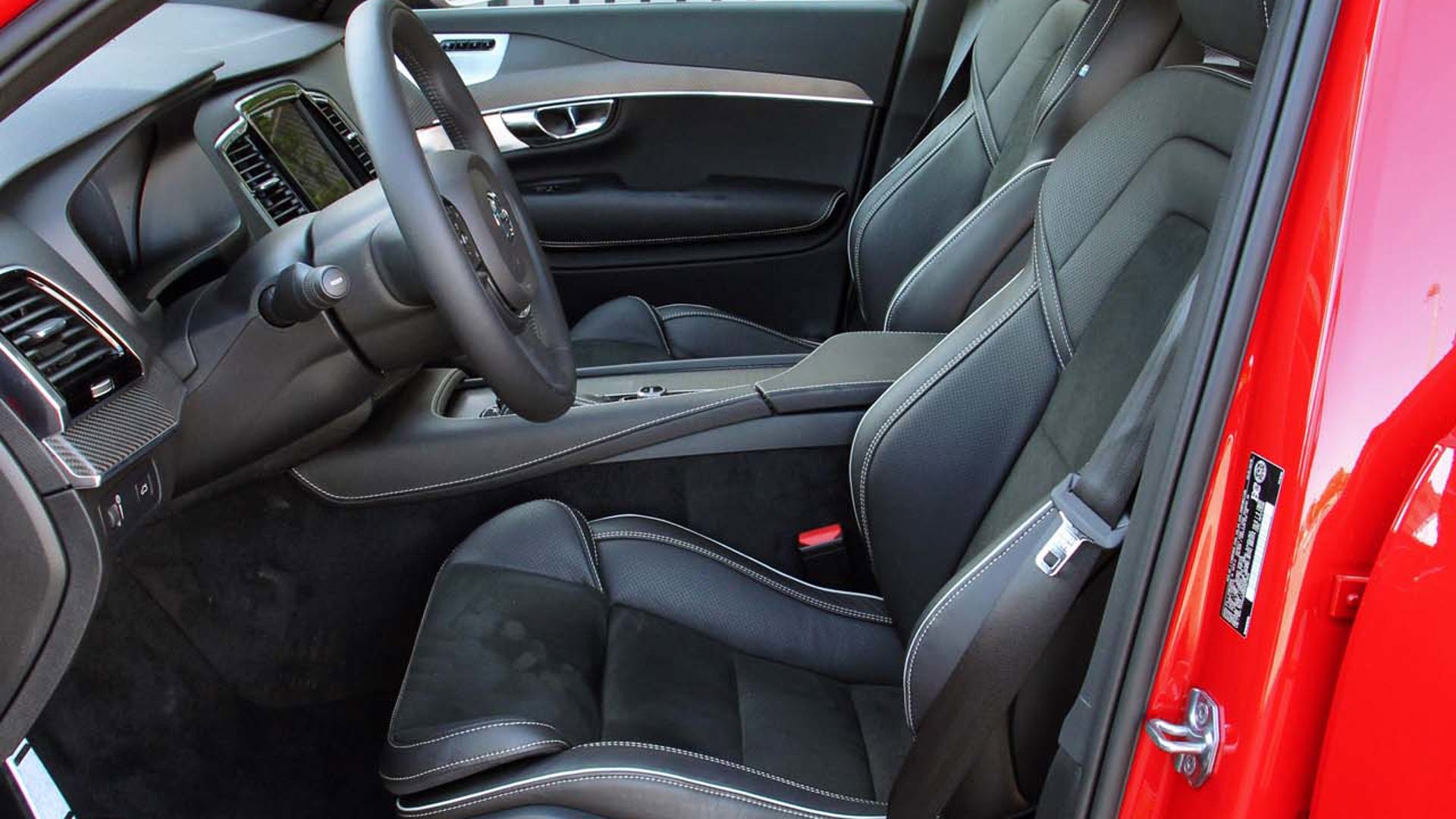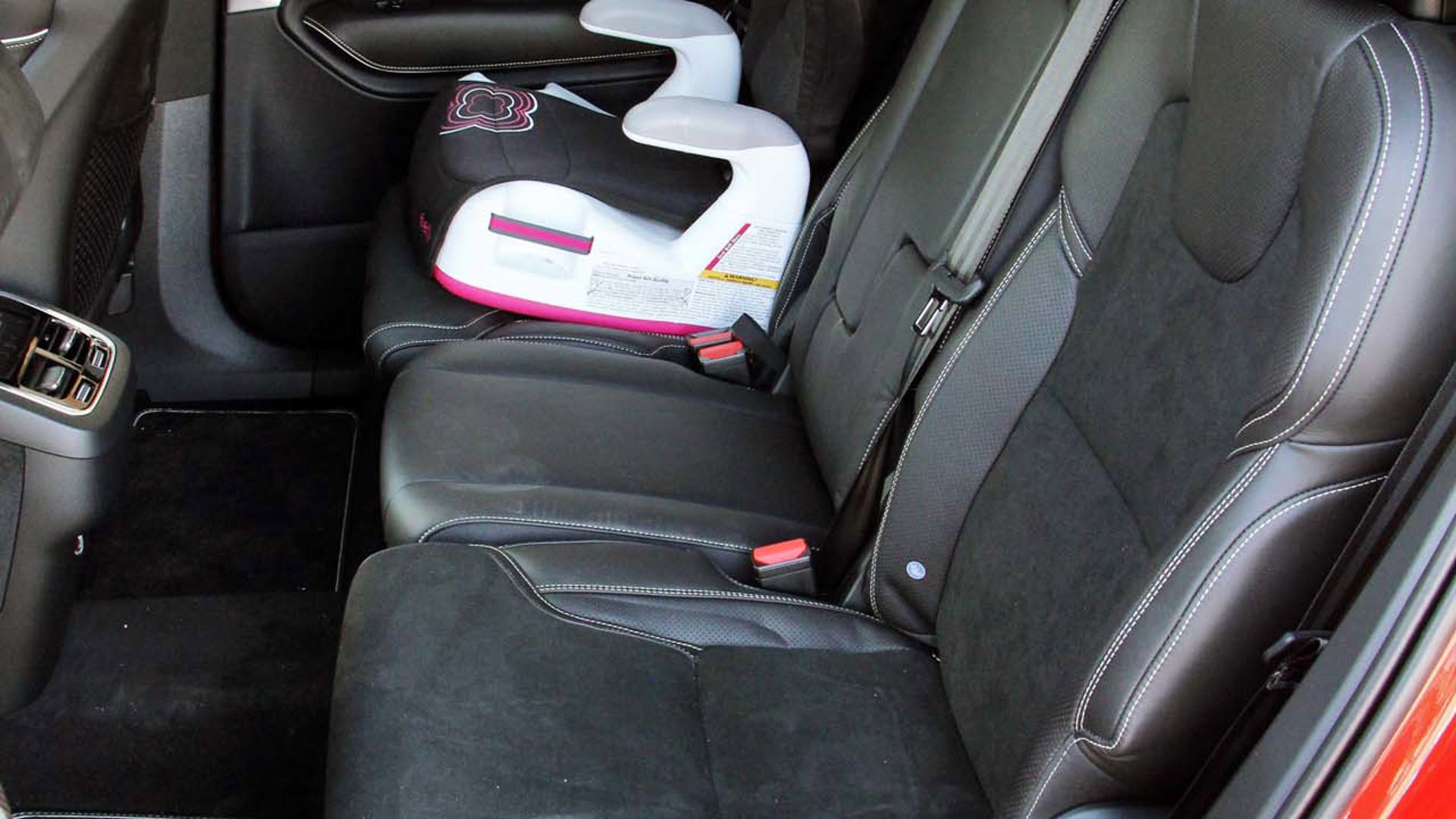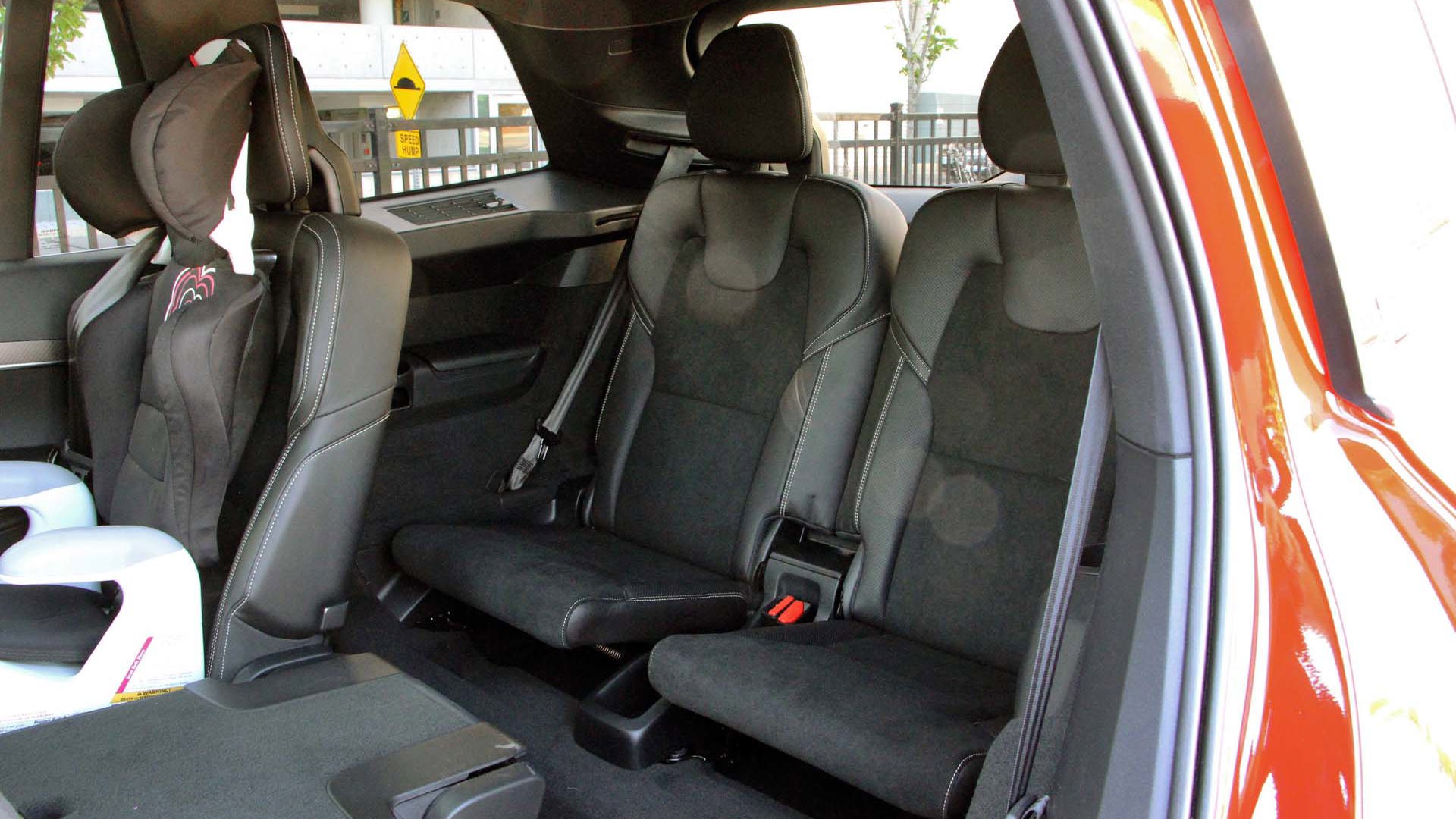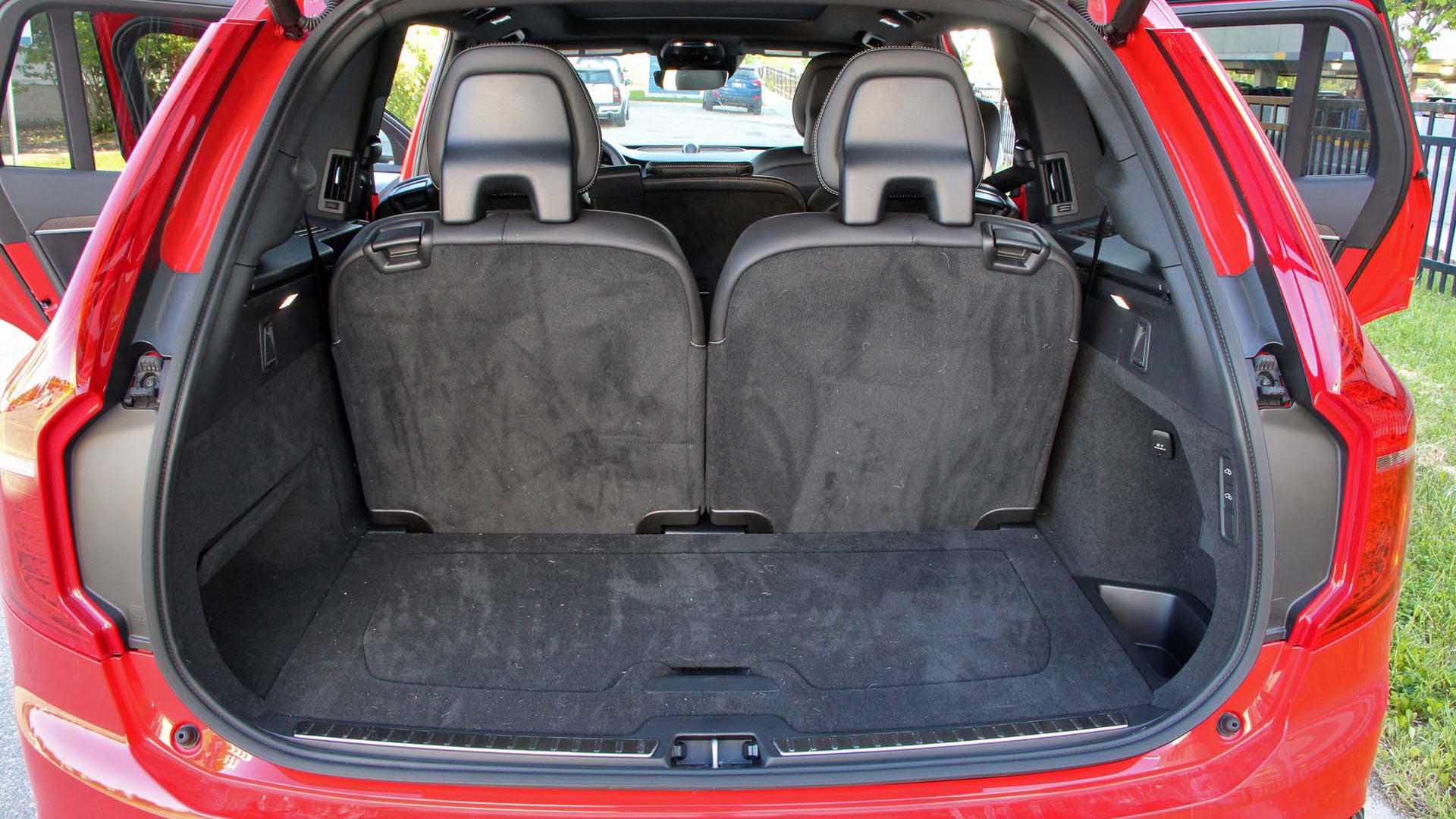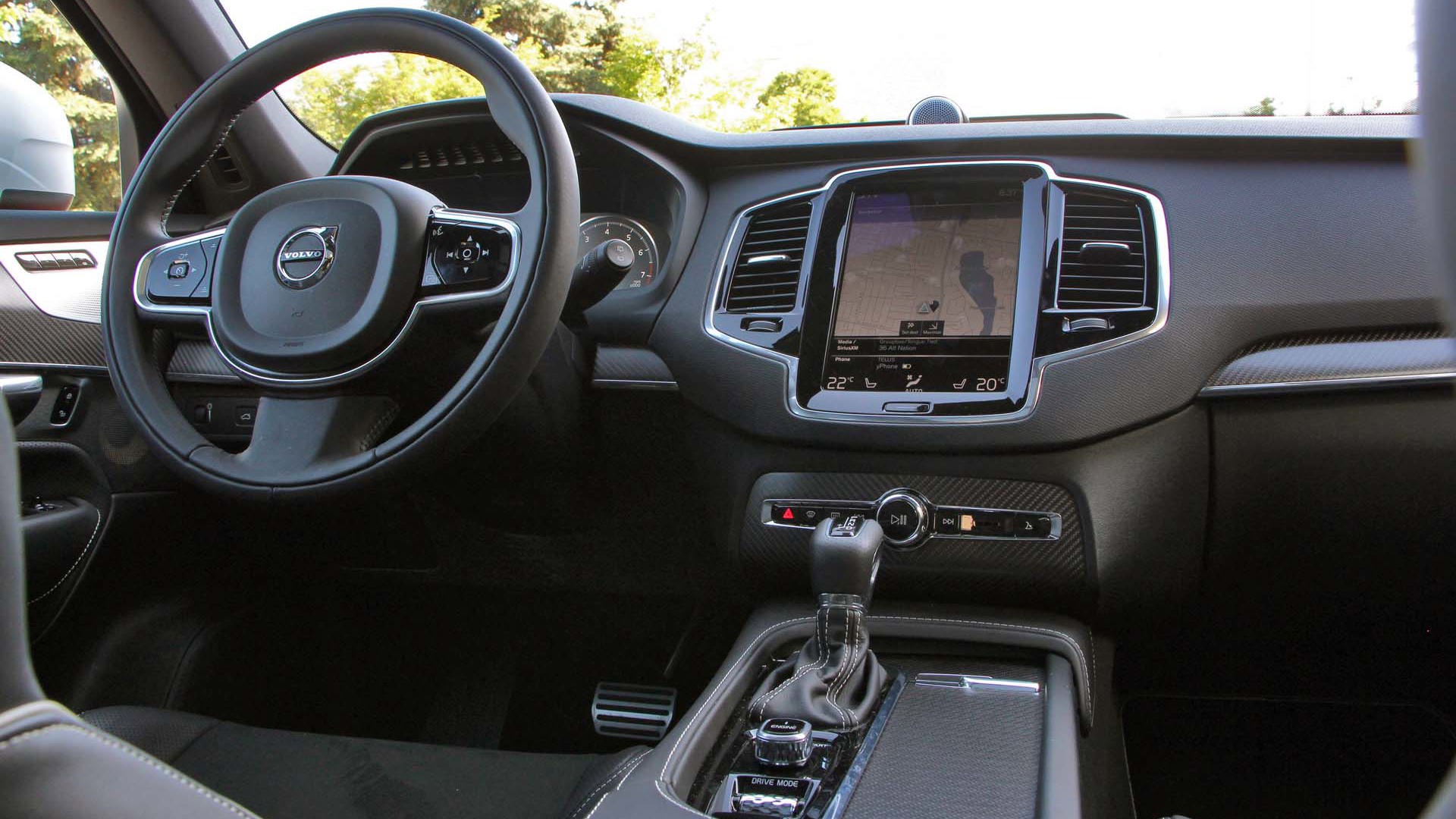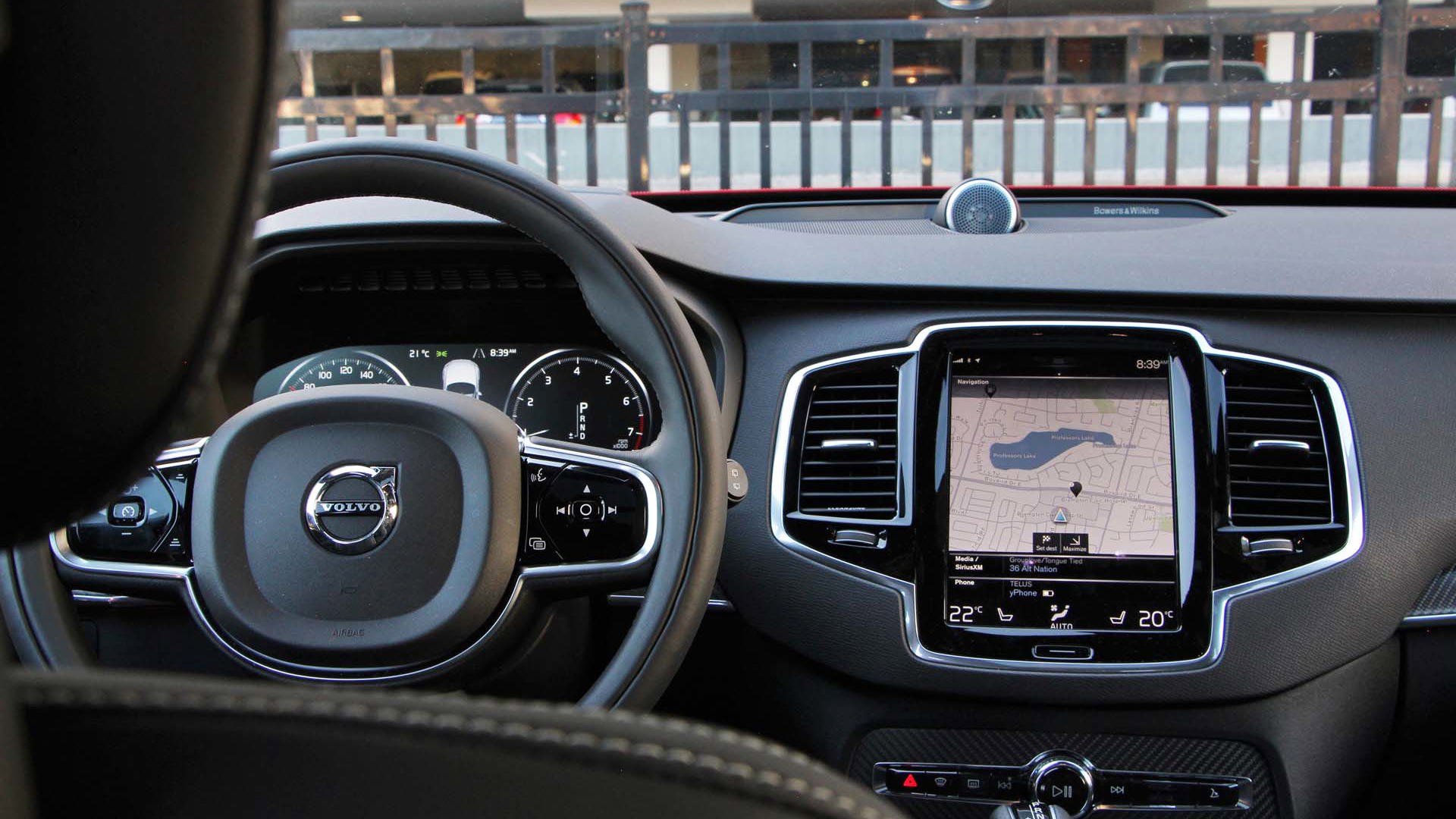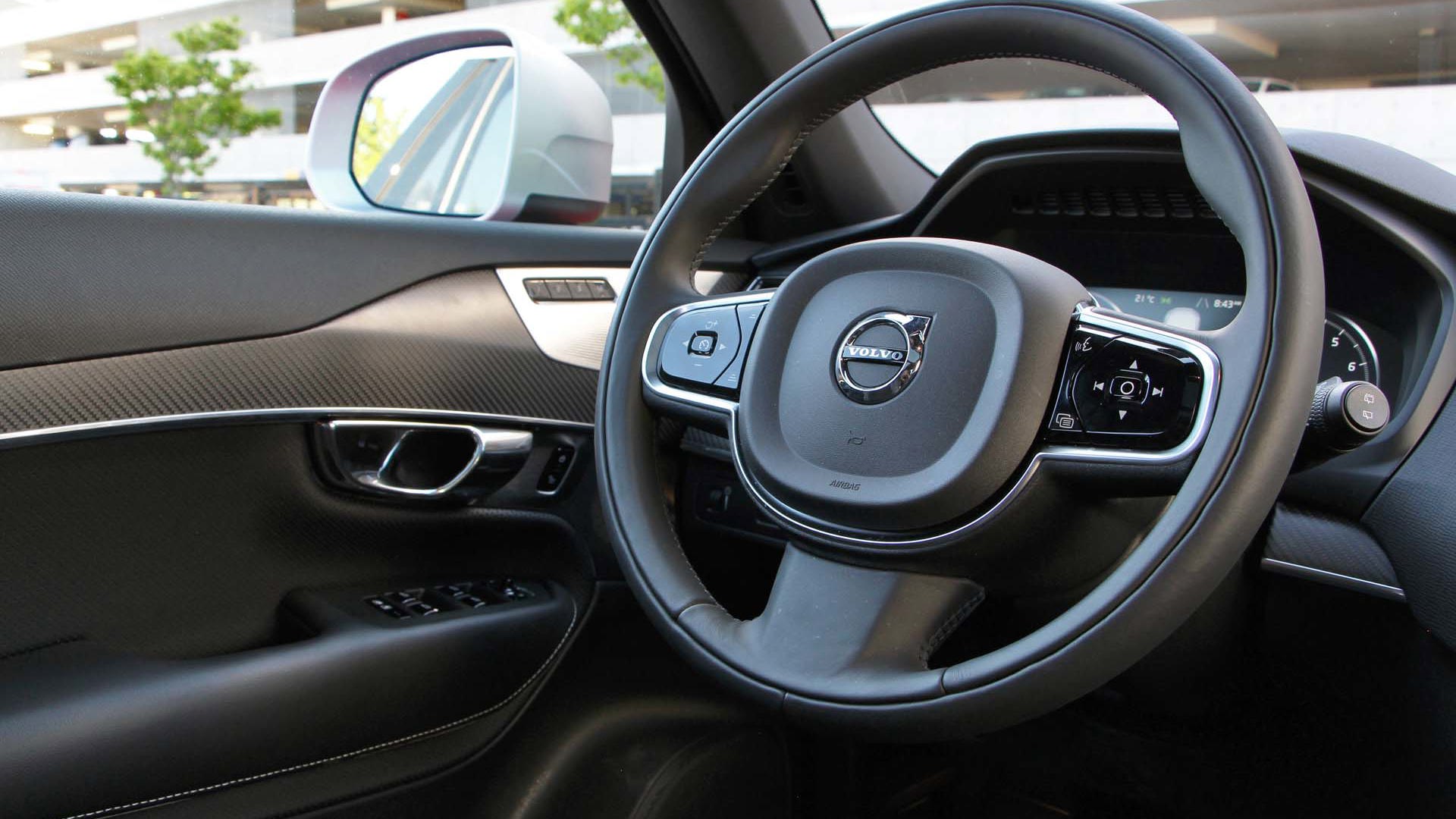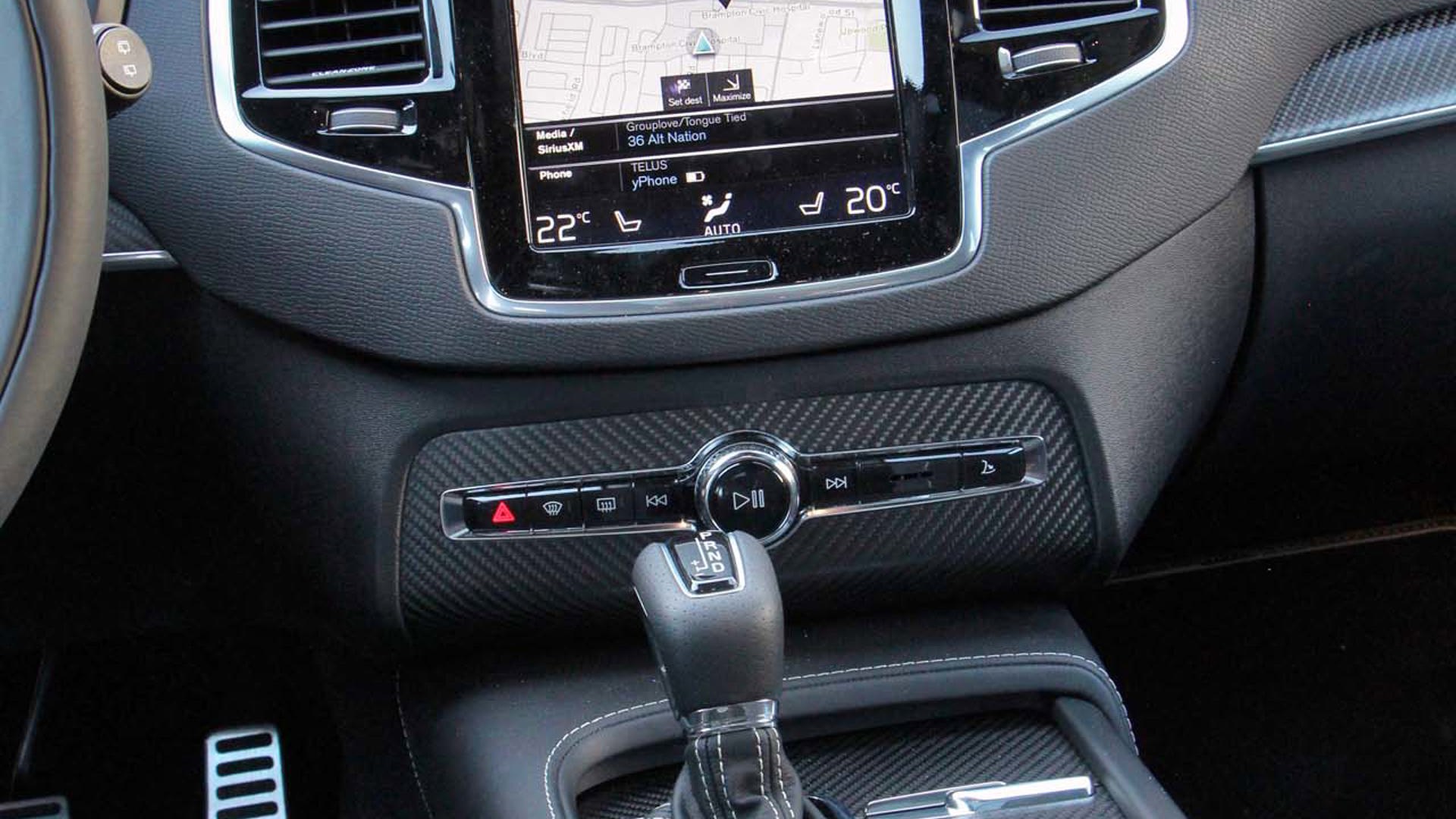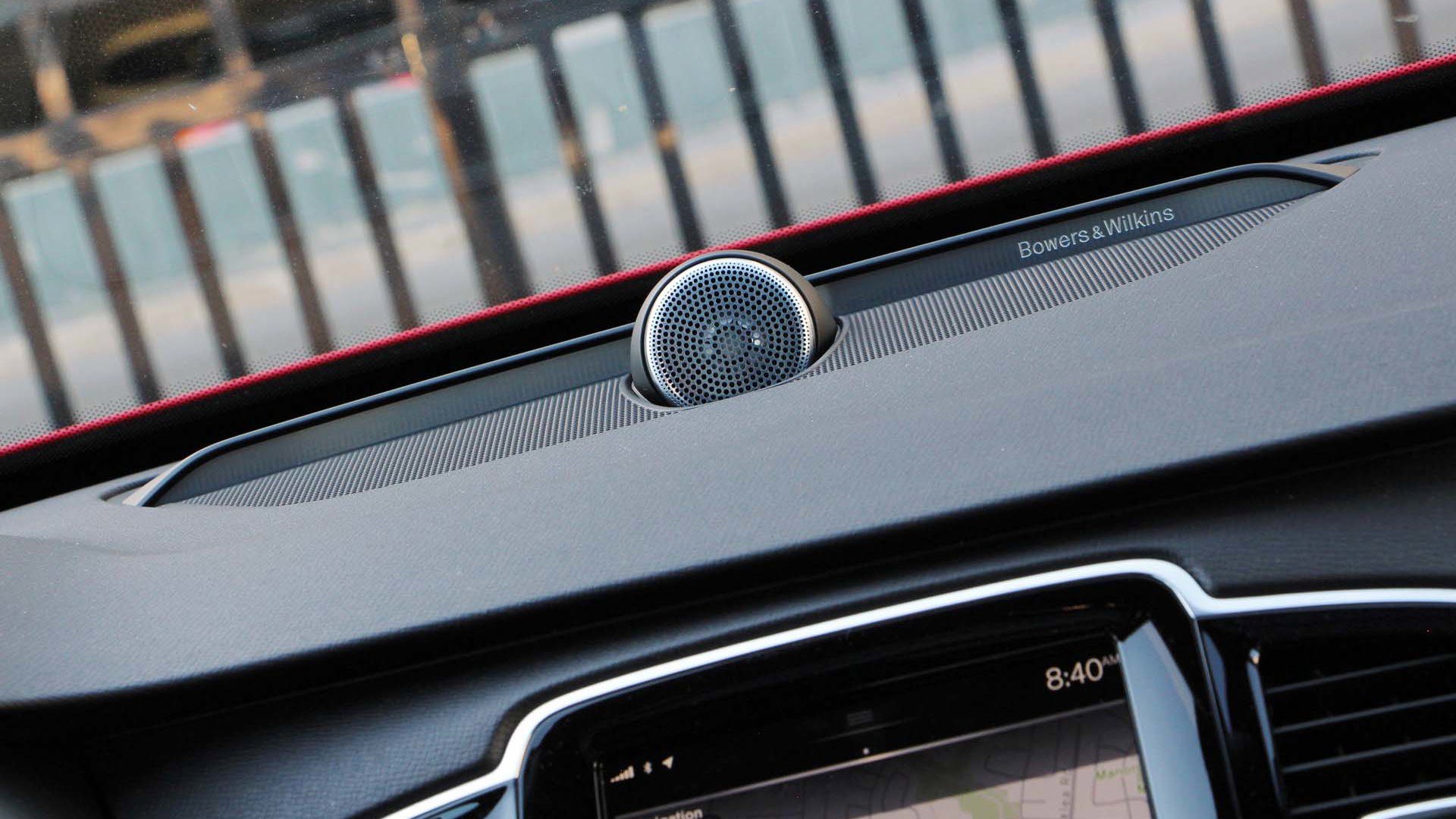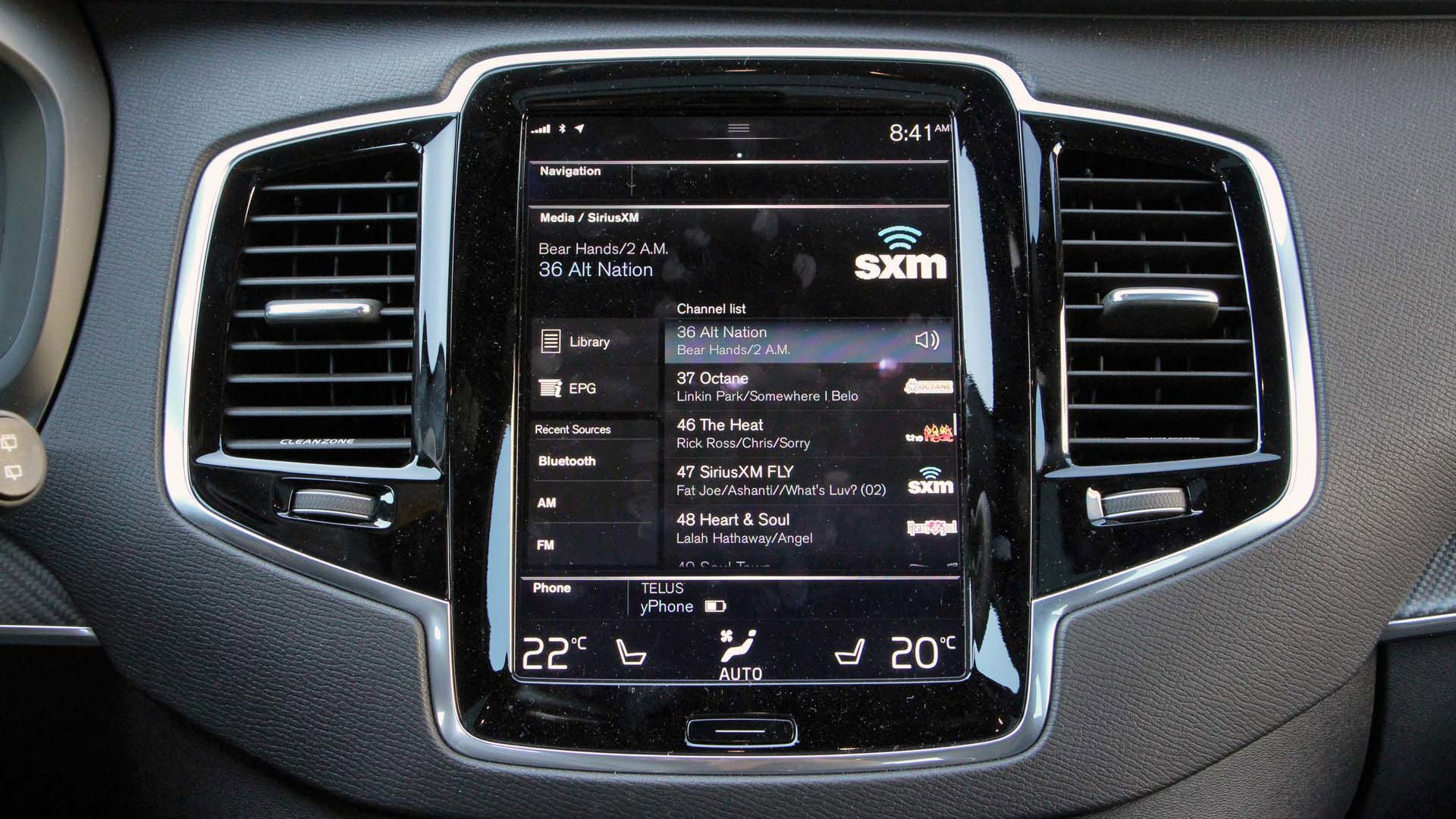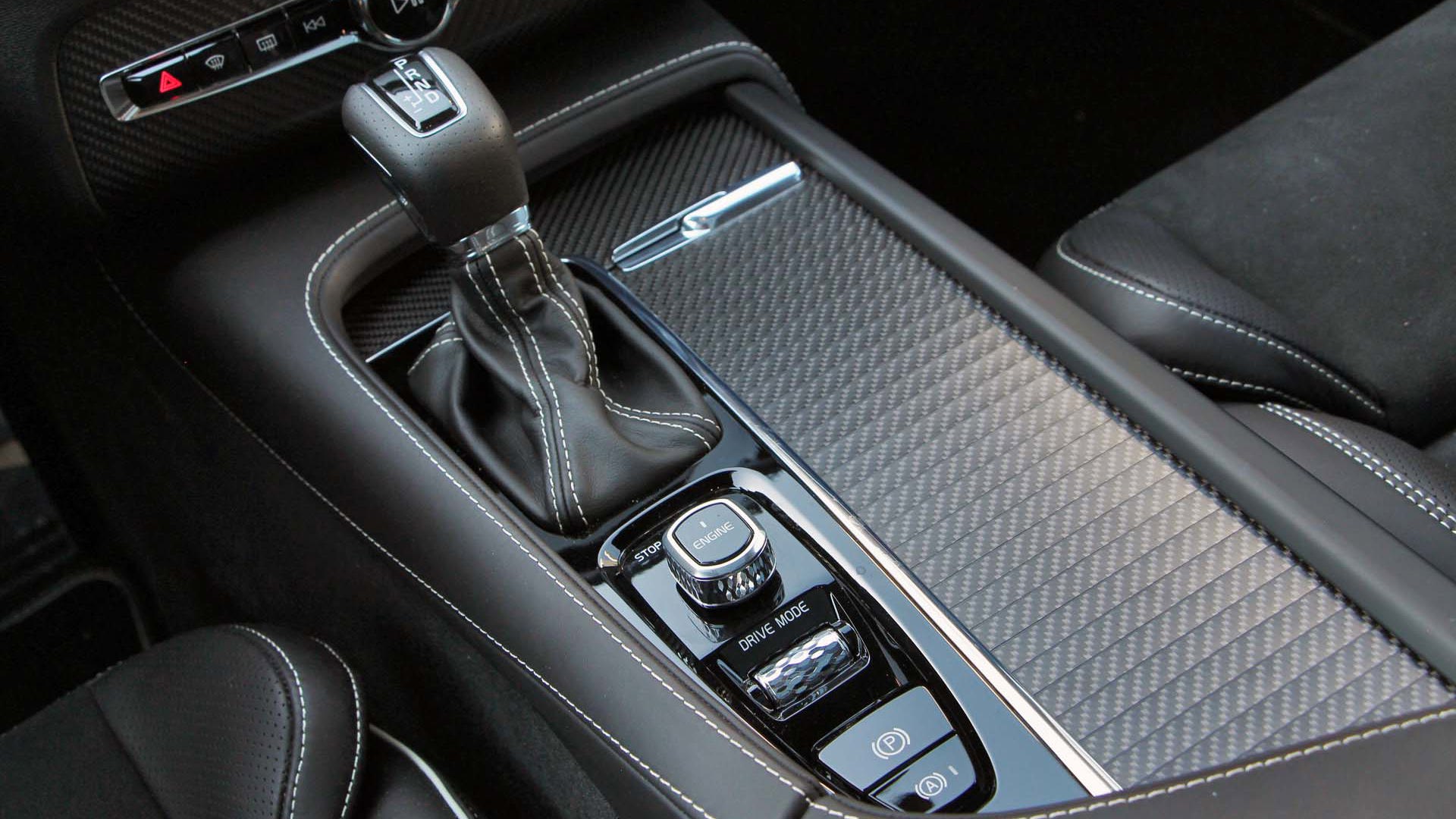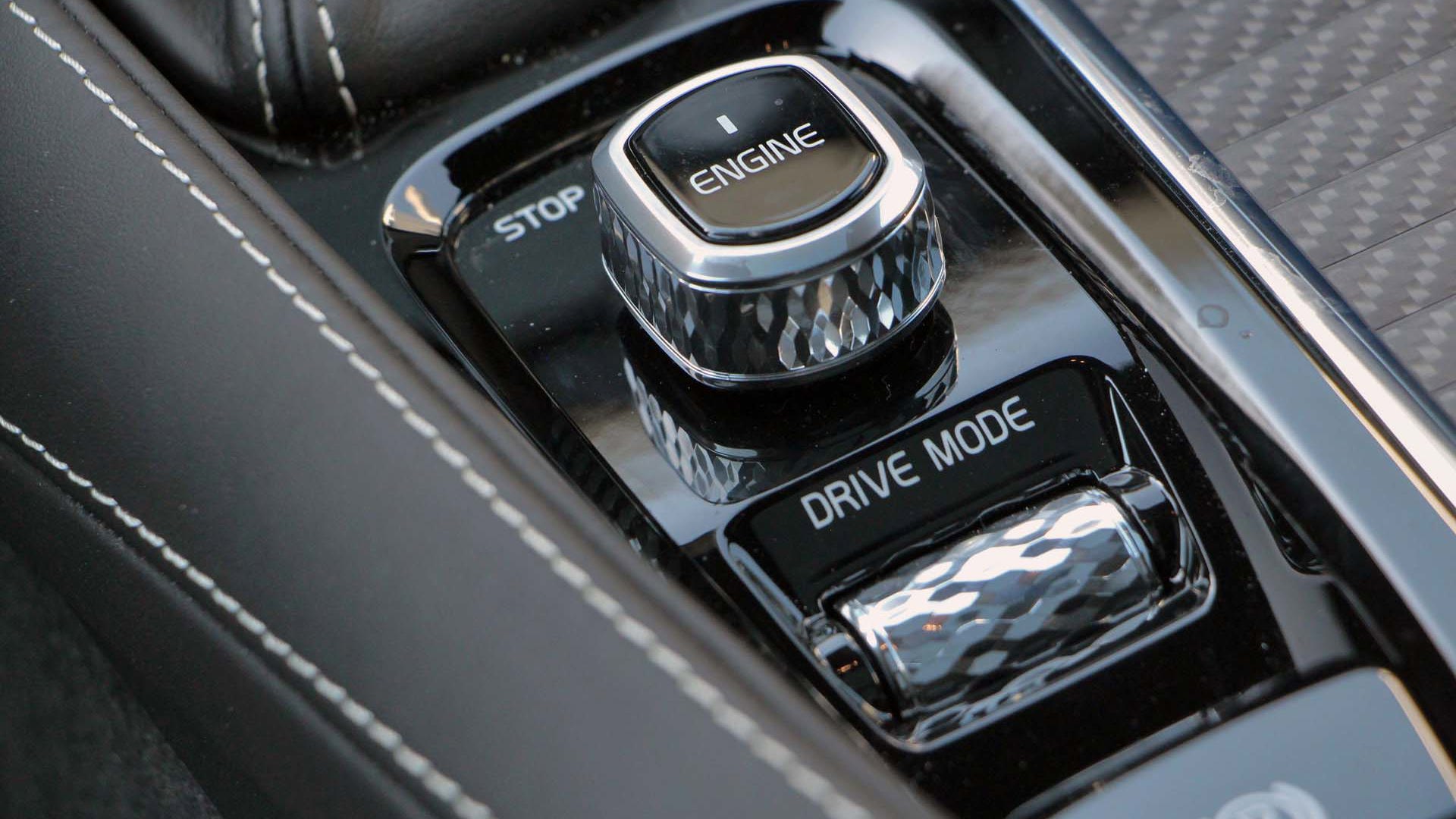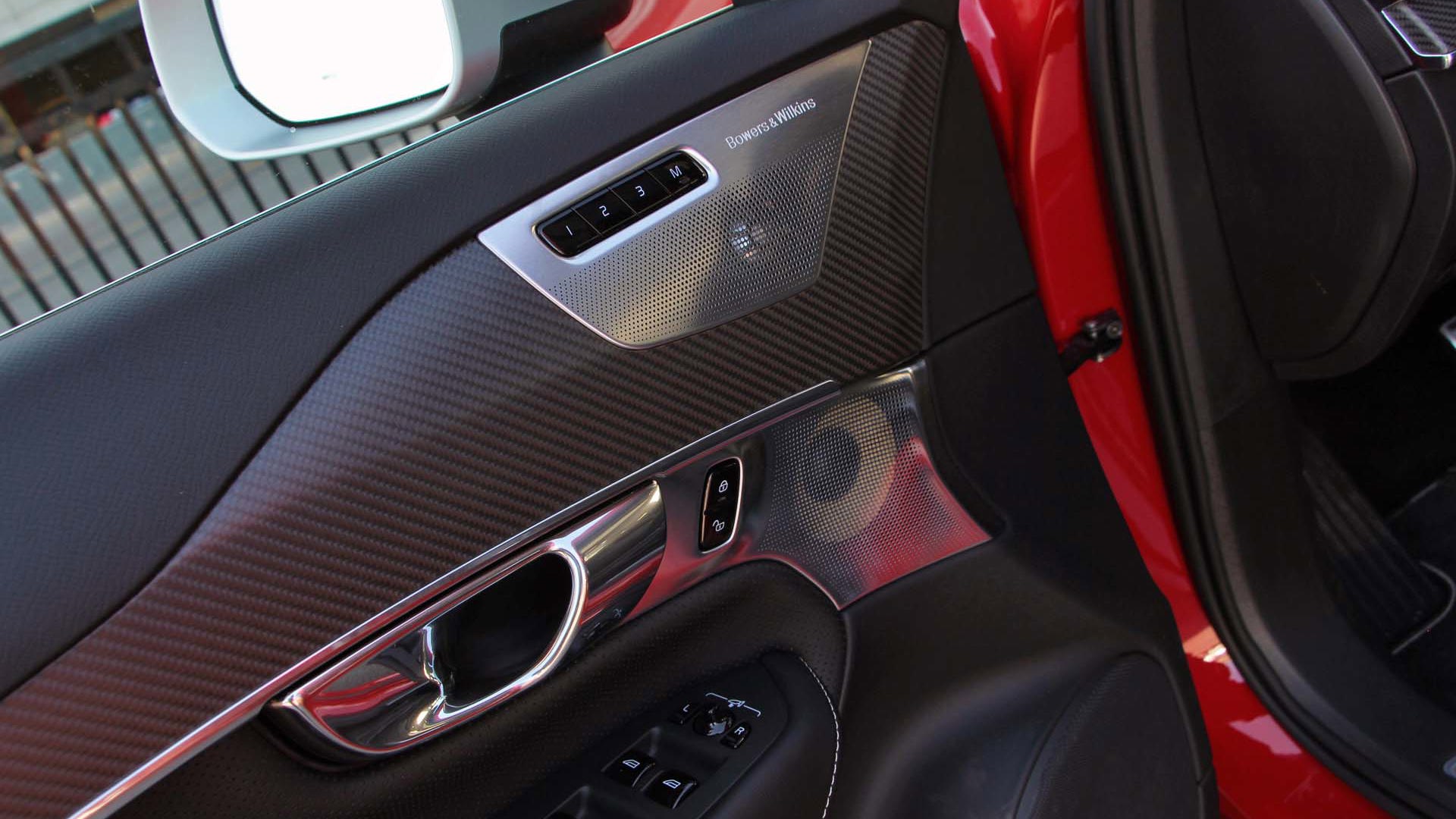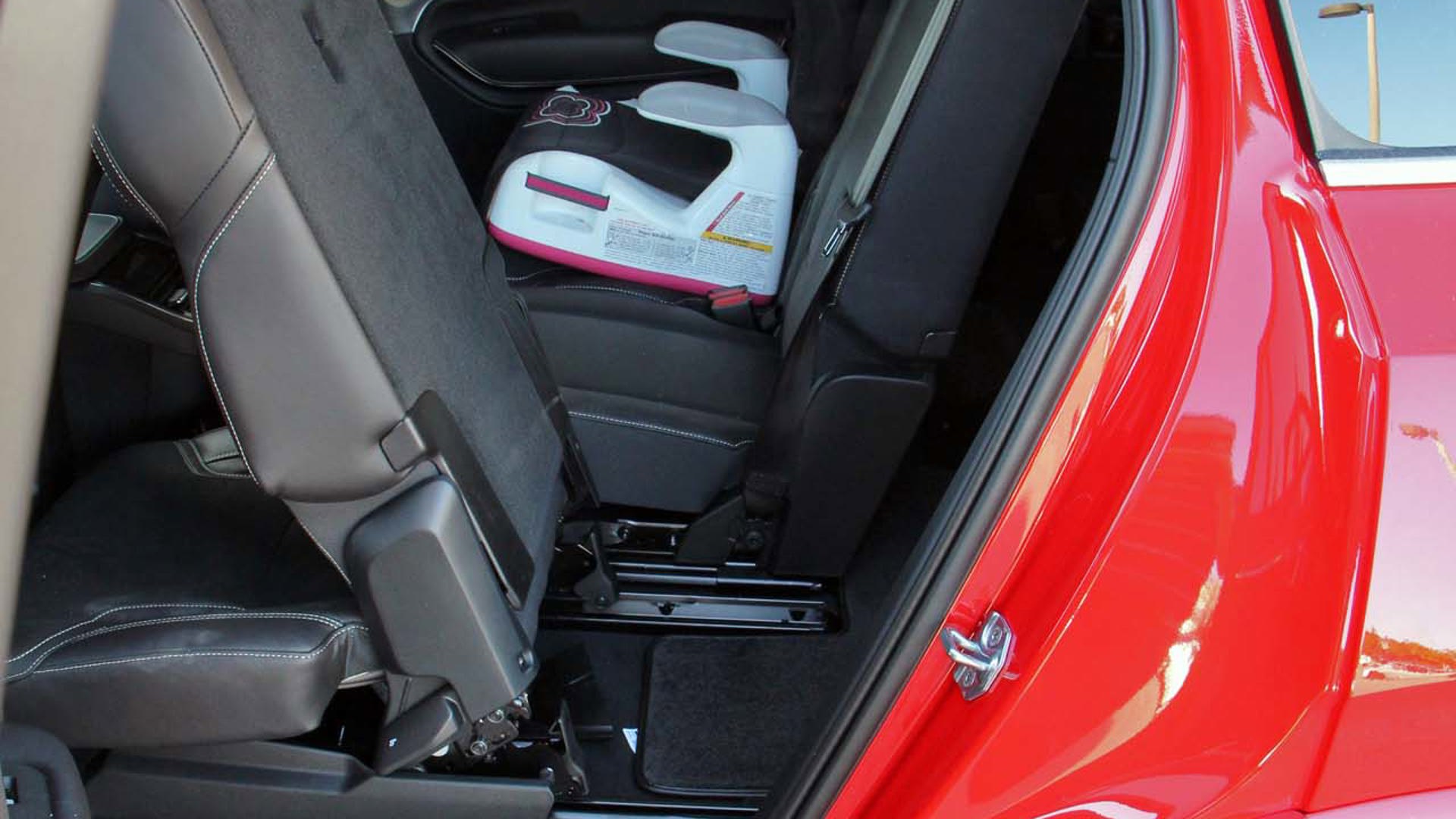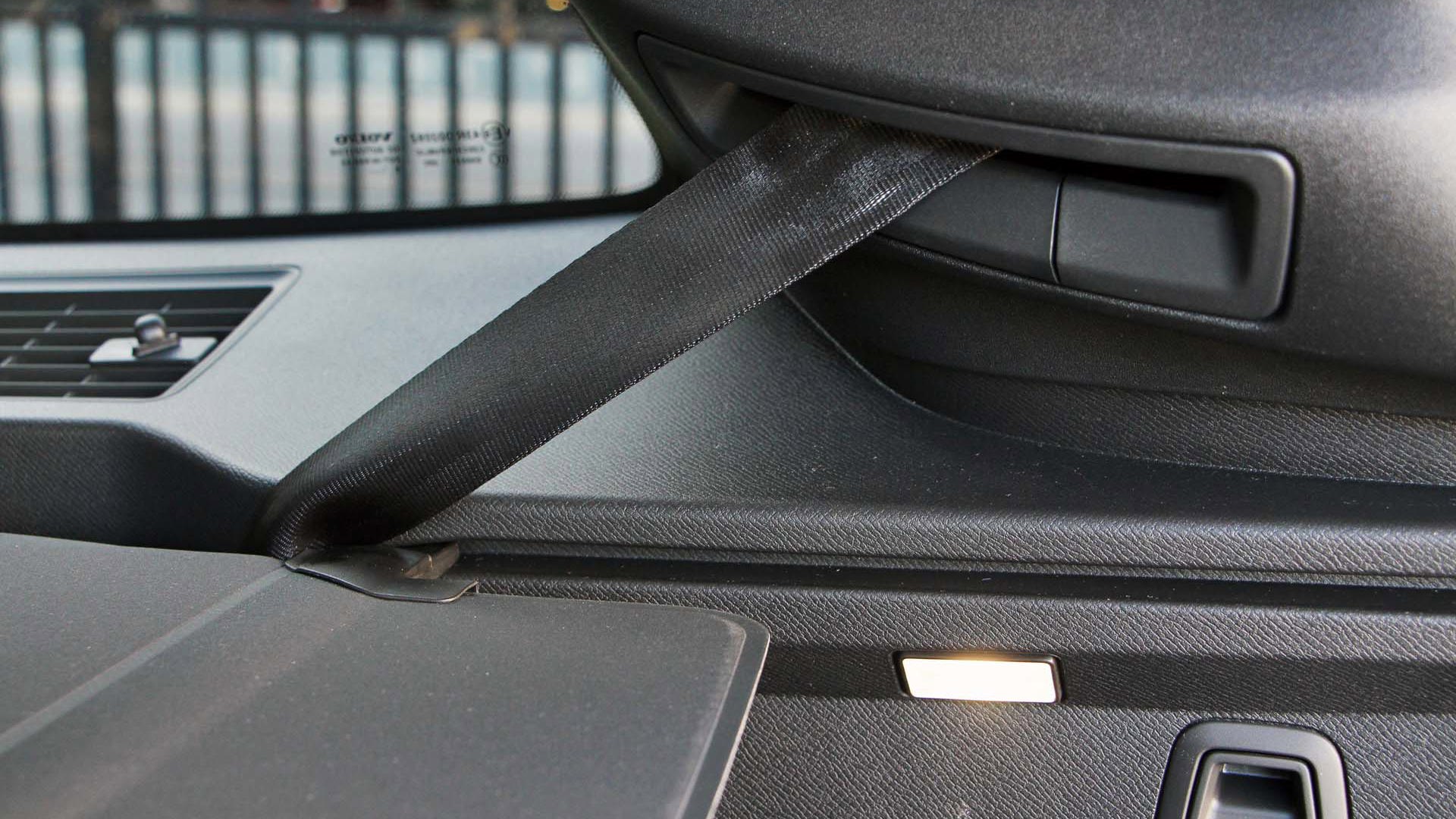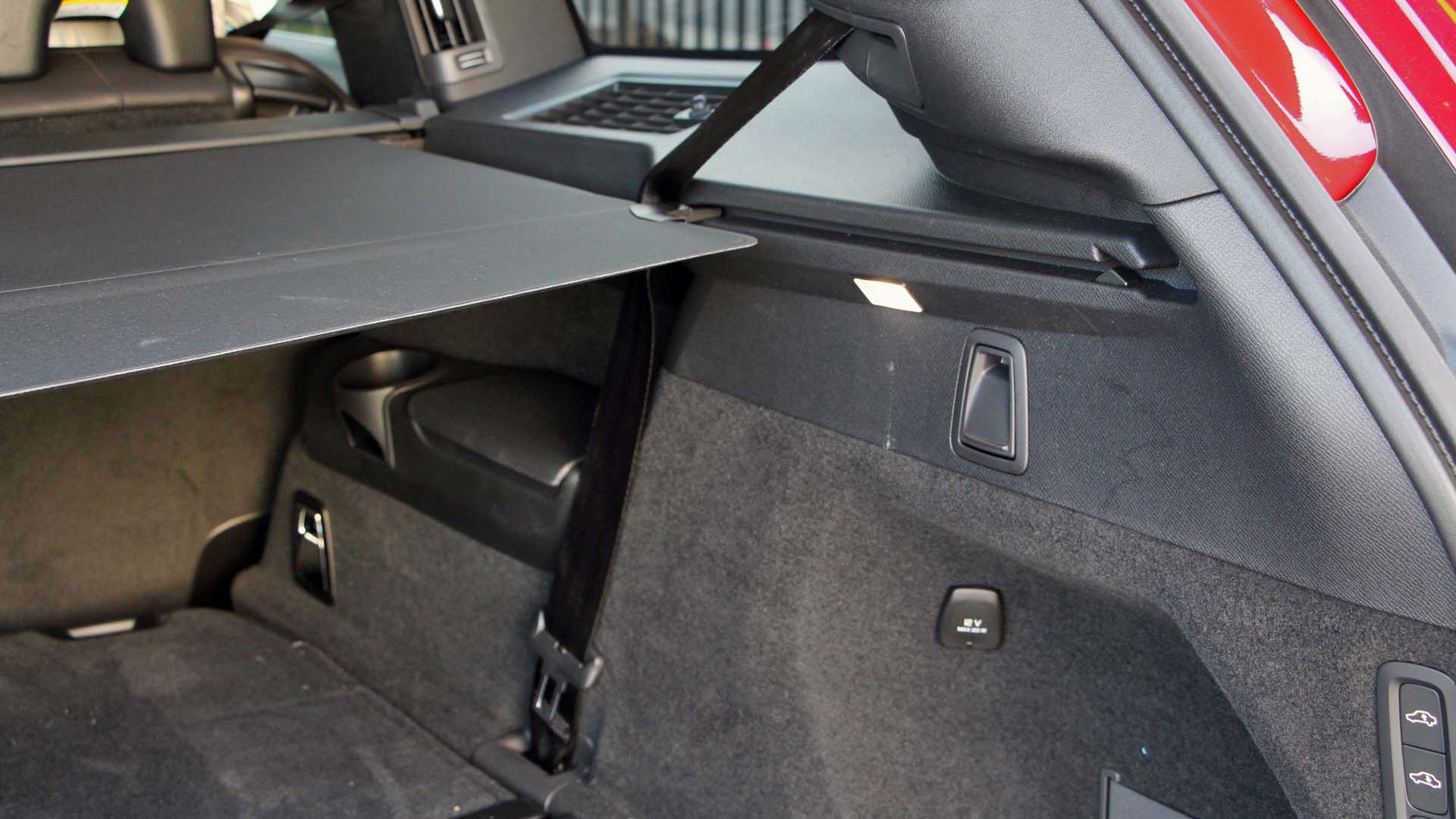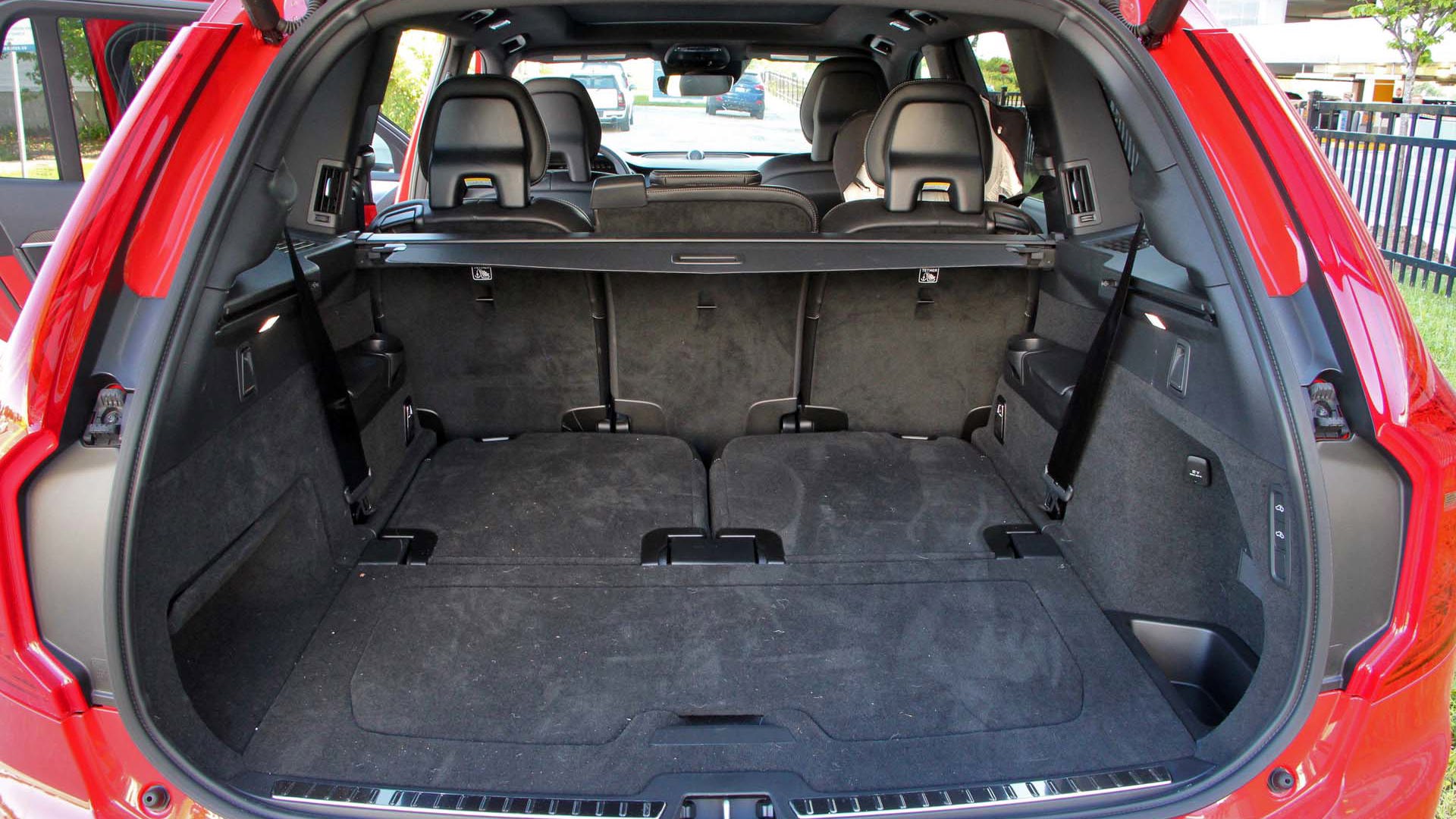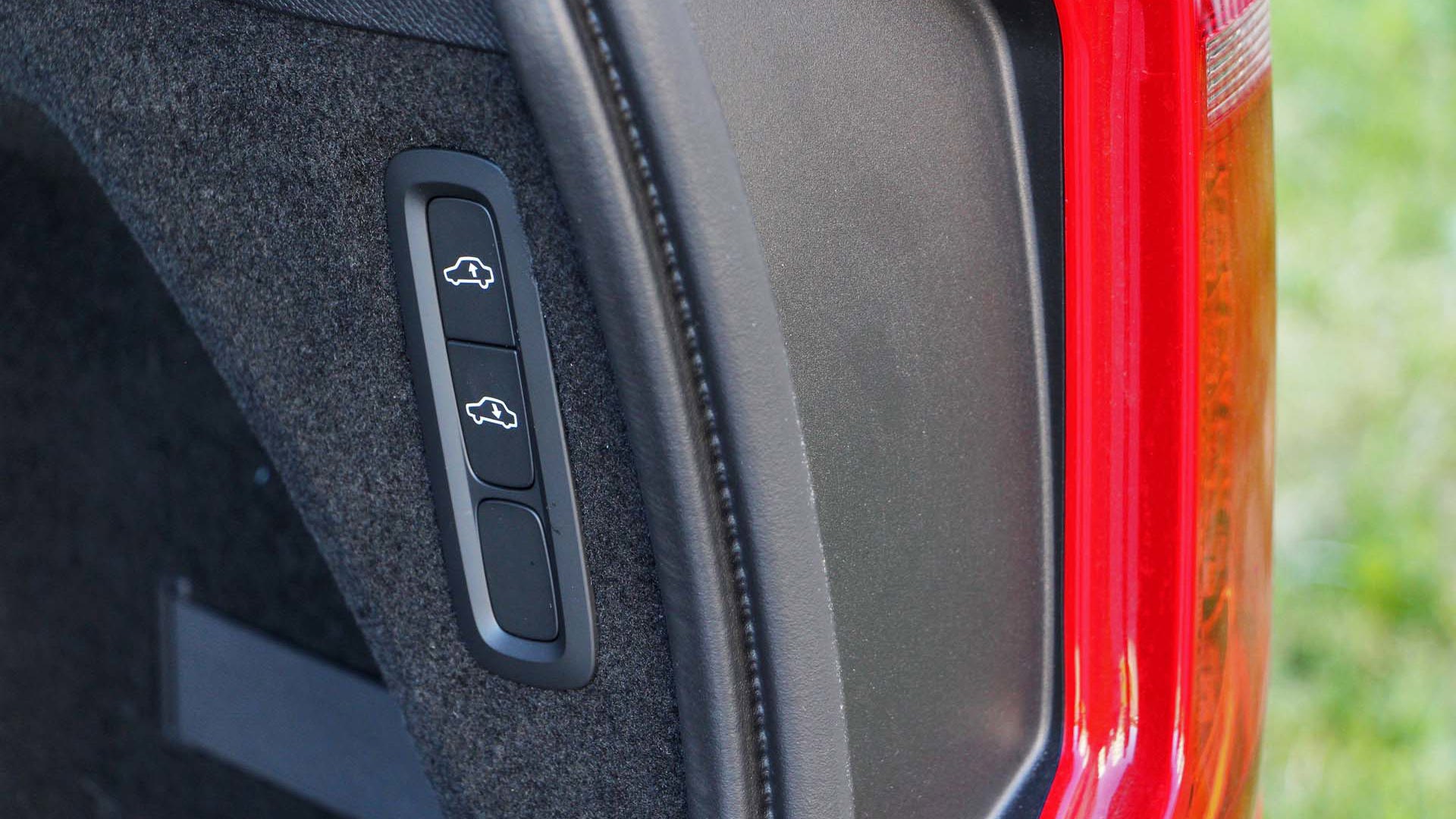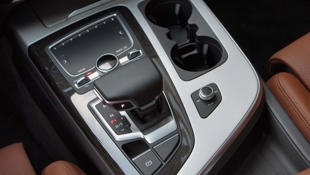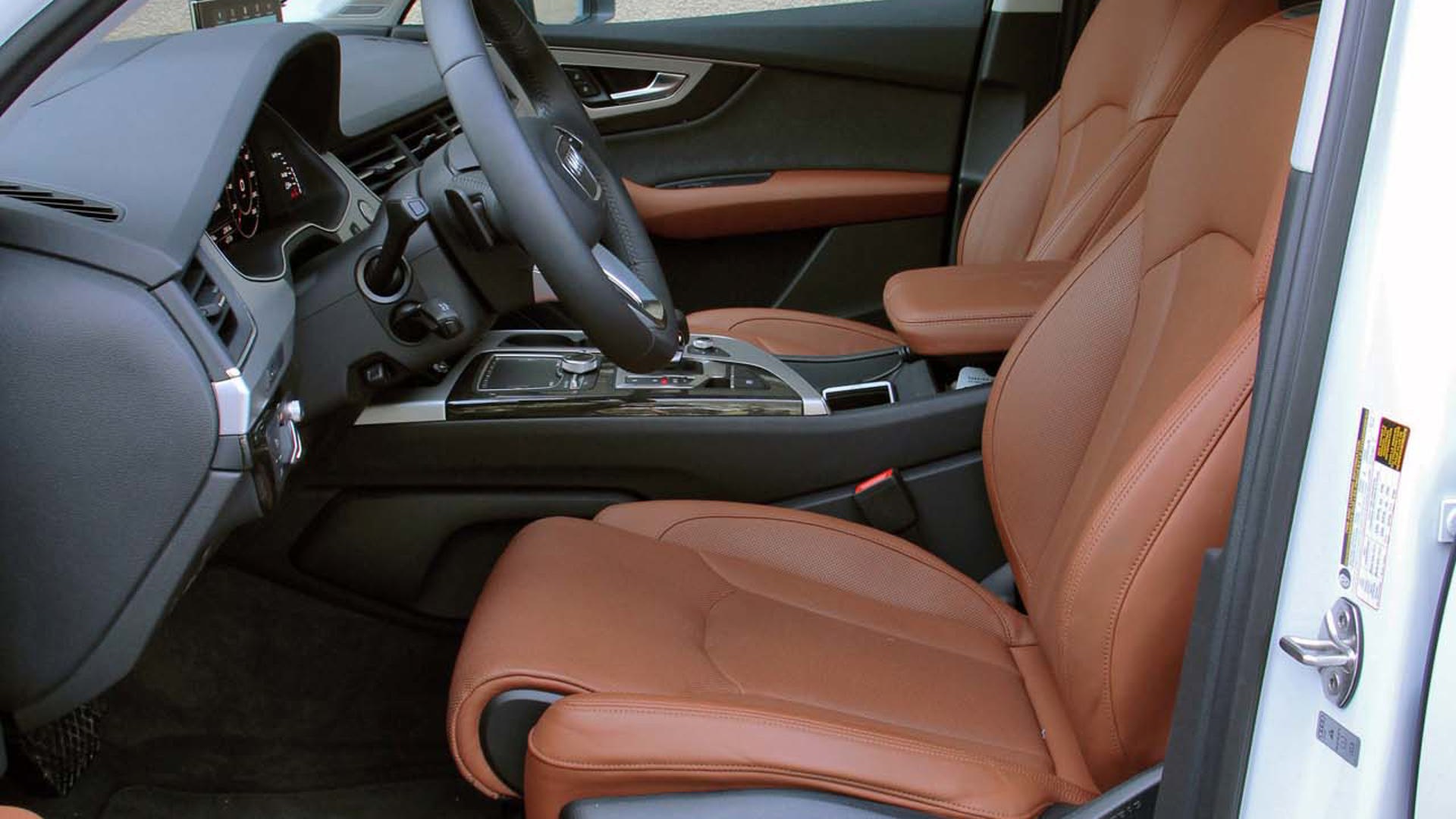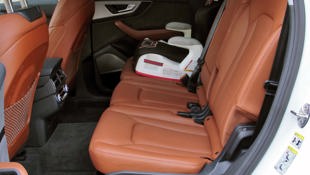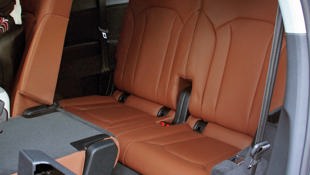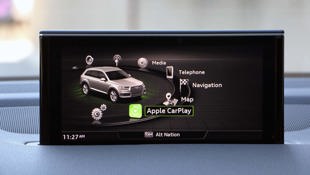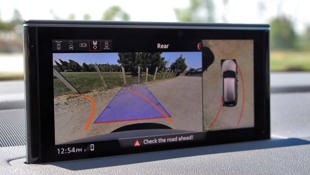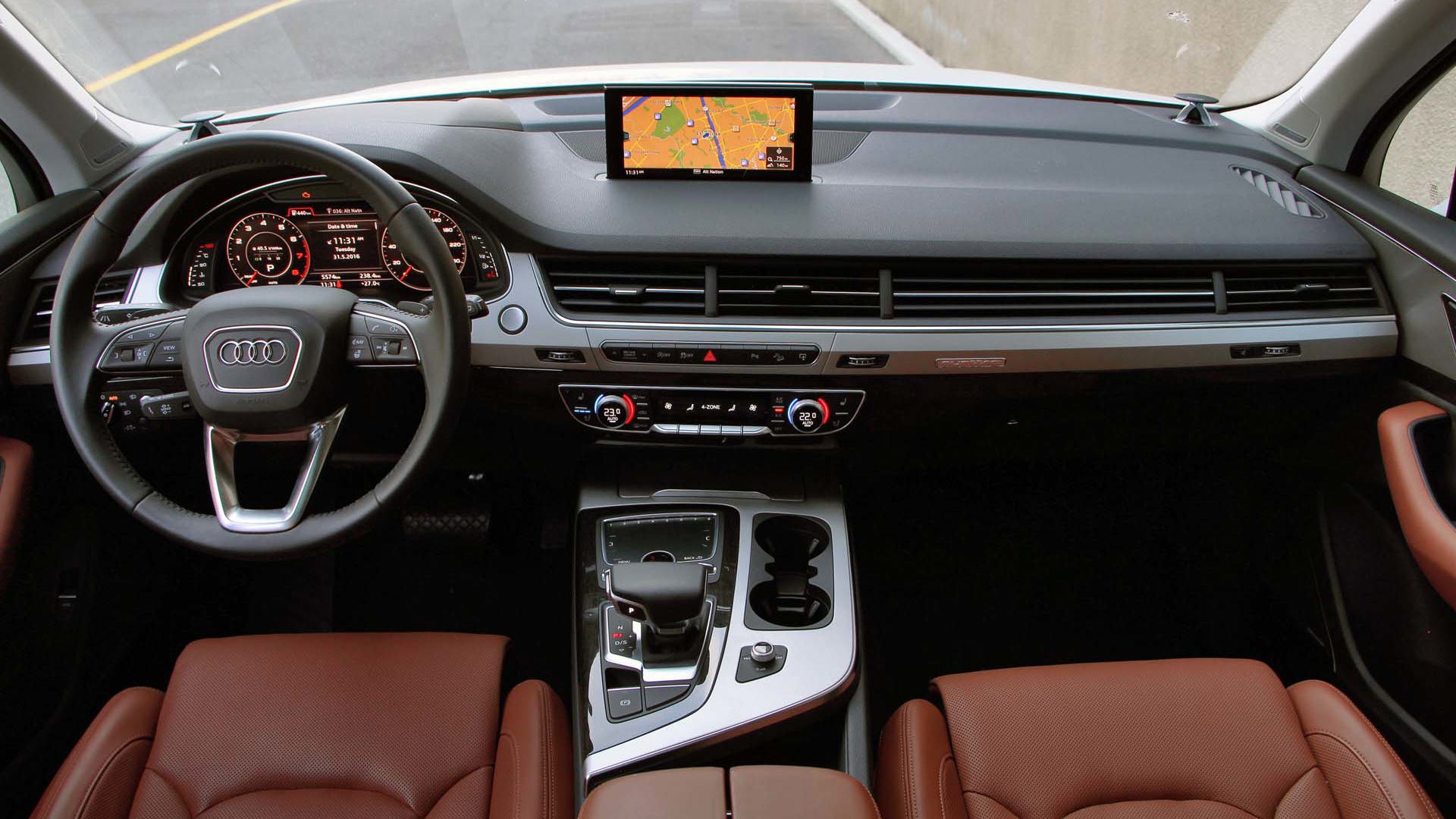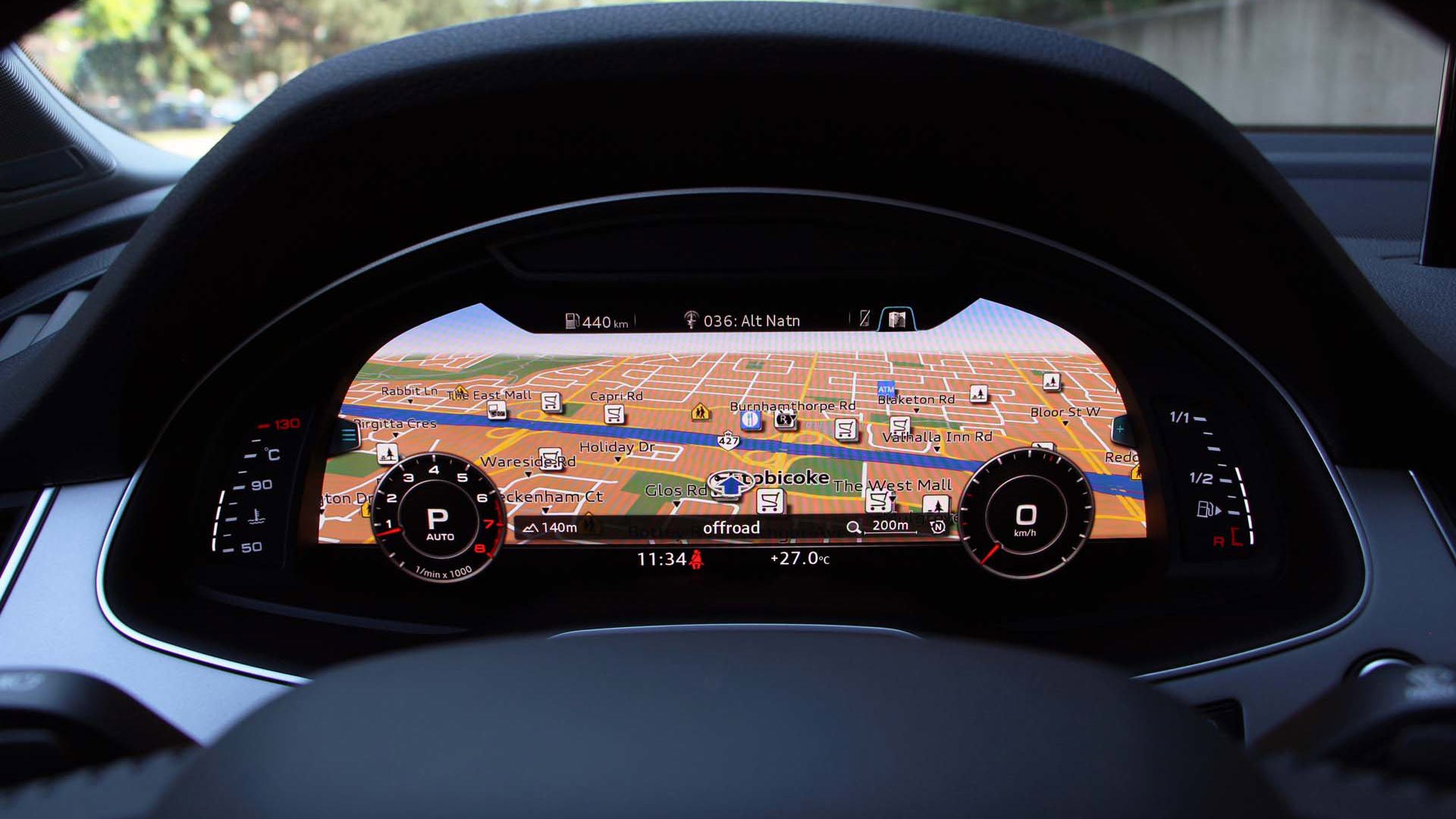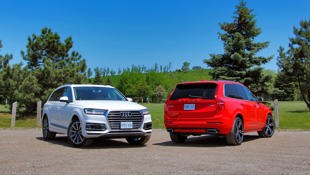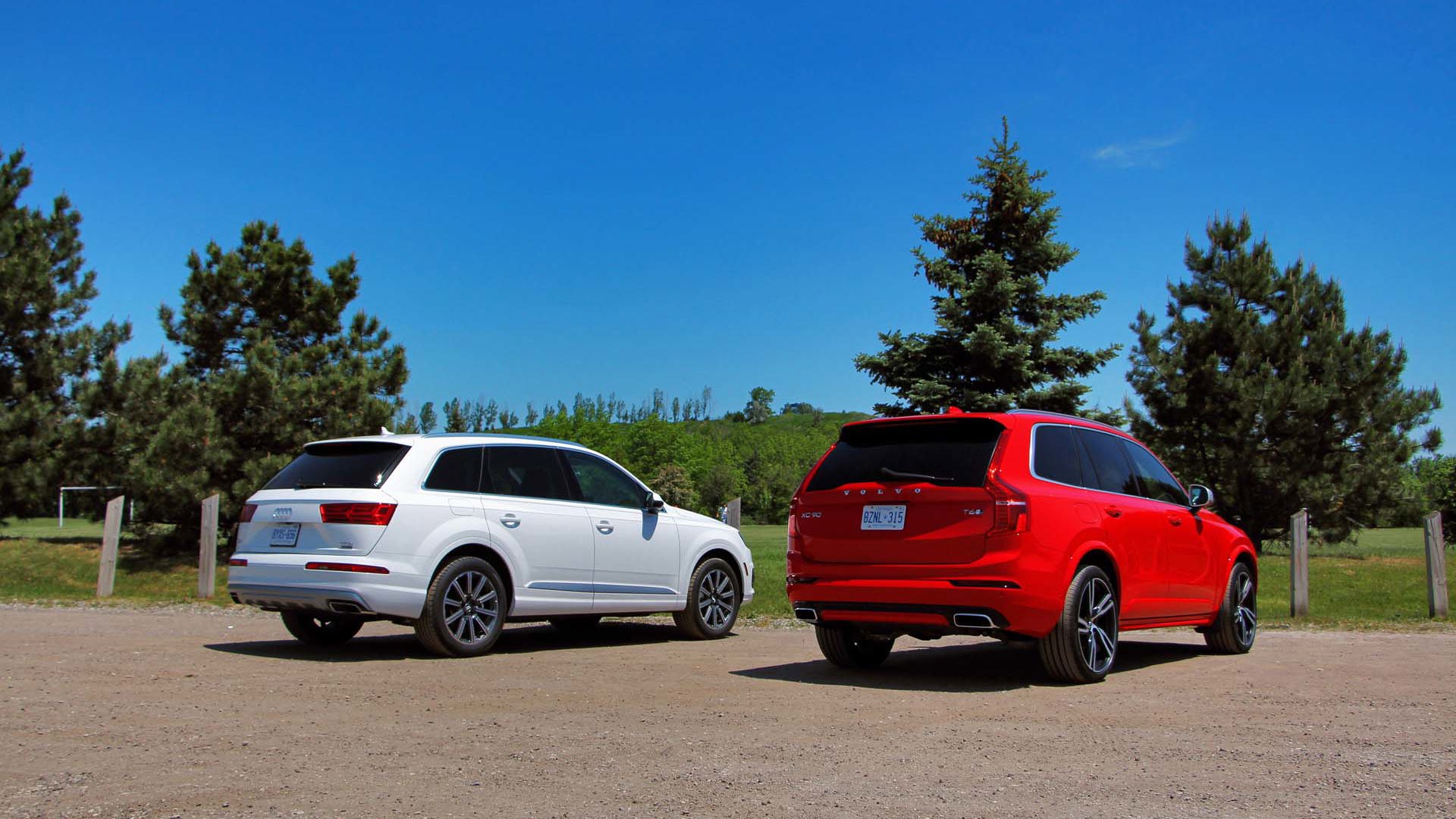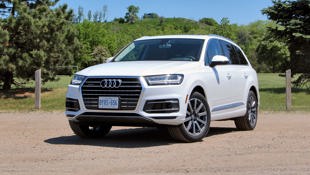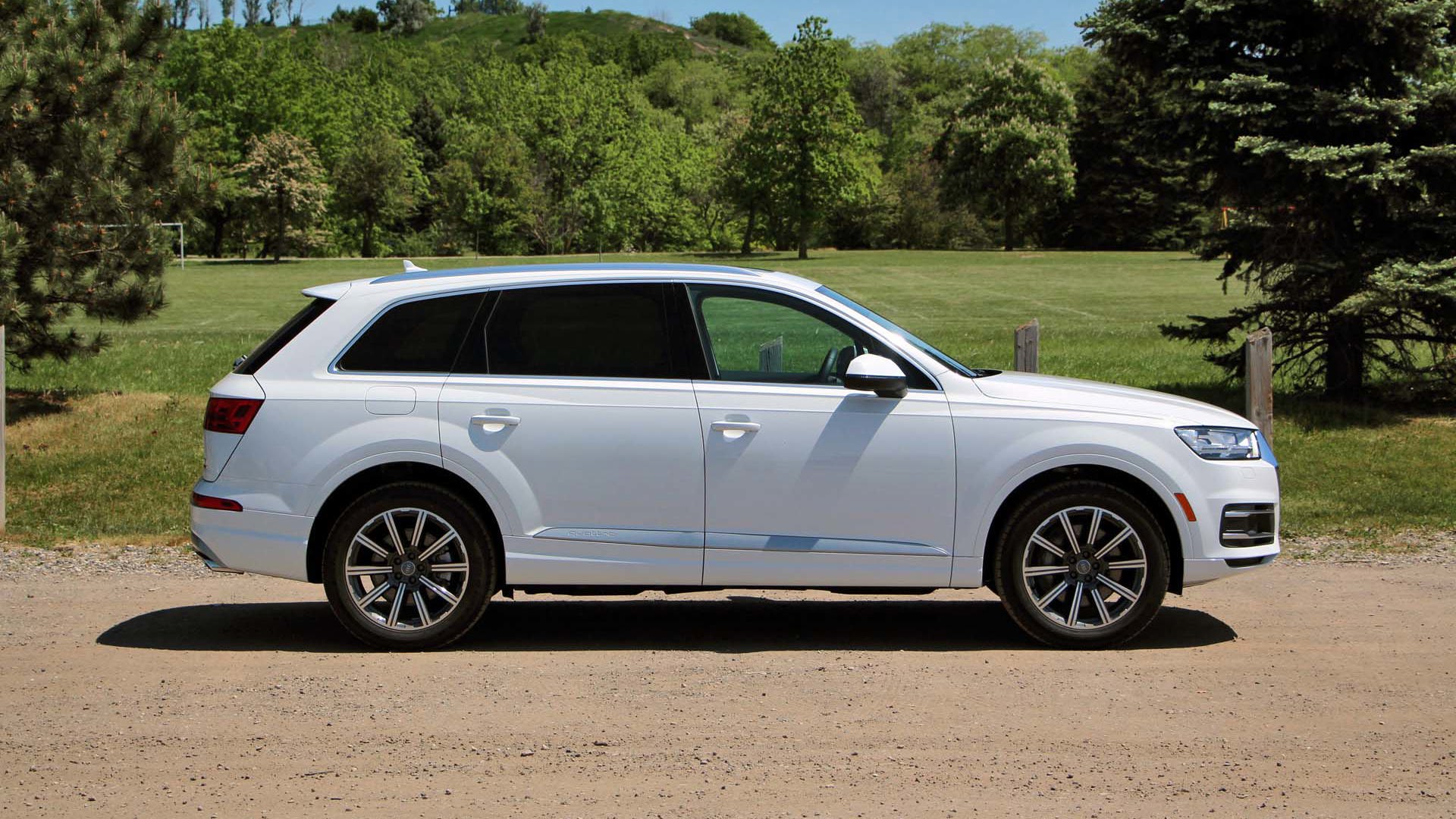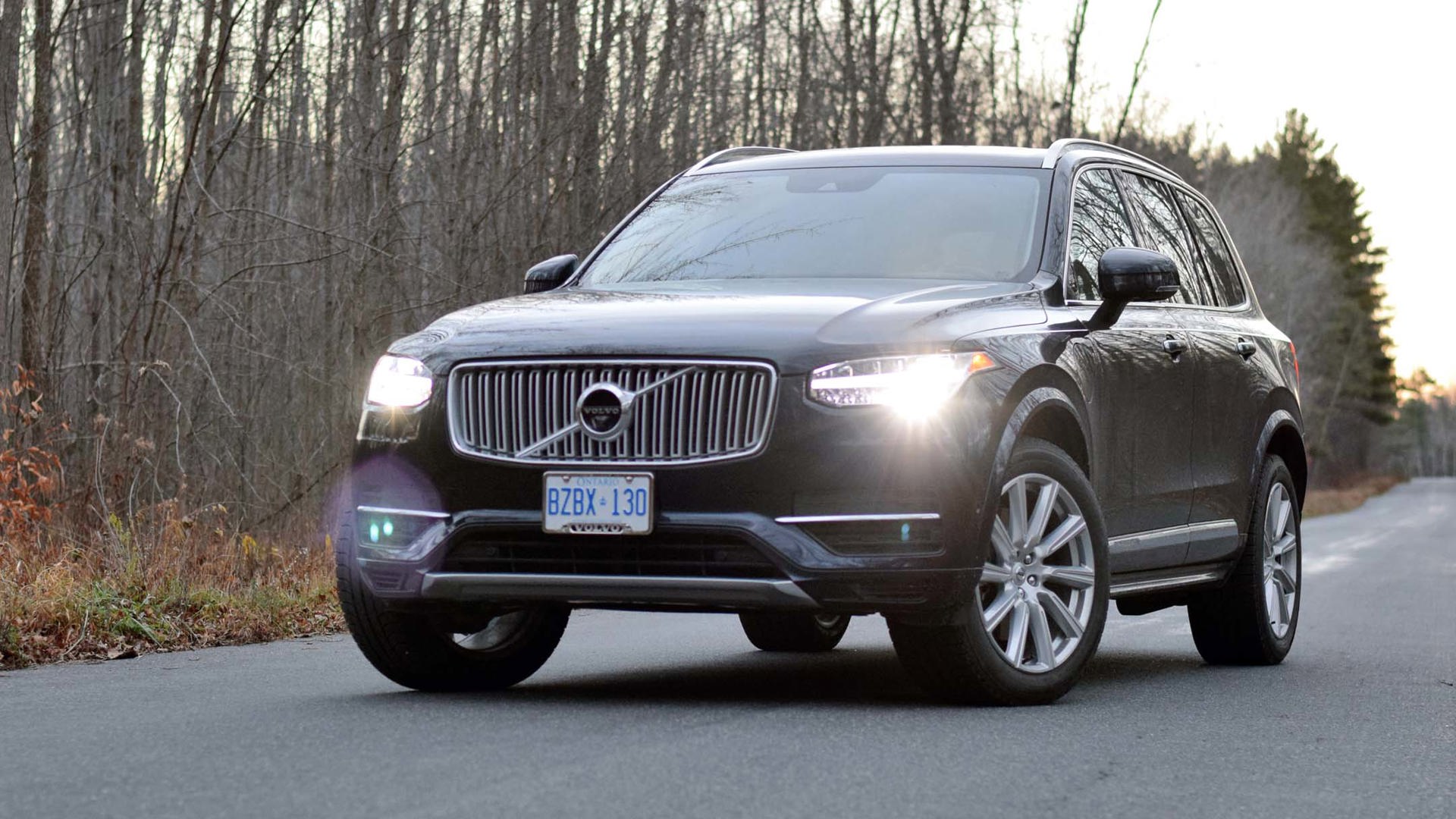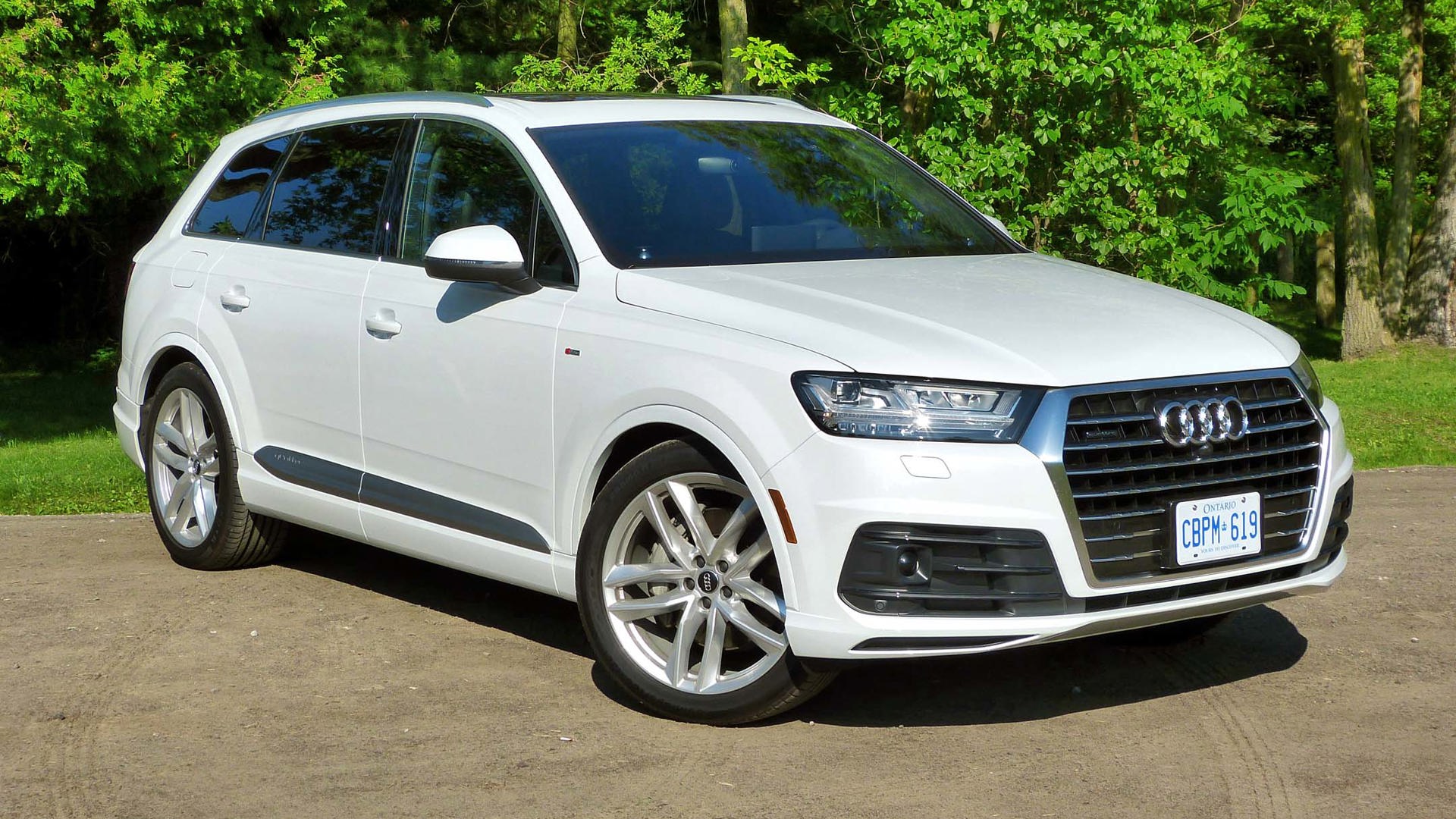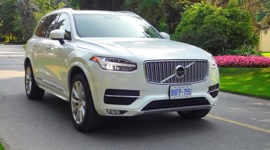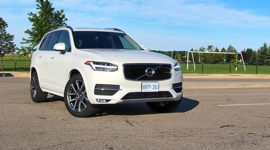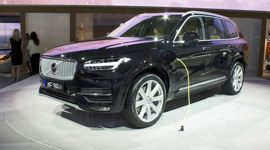Comparison Data
|
Base Price
$73,599
|
$65,850
|
|---|---|
|
Optional Equipment
Rear seat entertainment preparation $150; Luxury Package $3,750; Driver Assistance Plus $3,400; B&O audio $5,100
|
Vision Package $1,800; Convenience Package $2,200; carbon-fibre inlays $1,000; booster cushion $325; Bowers and Wilkin audio $3,250; head-up display $1,150; 4-Corner Air Suspension $2,350; 22-inch alloys plus 275/35 perf tires
|
|
A/C Tax
$100
|
$100
|
|
Destination Fee
$2,095
|
$1,195
|
|
Price as Tested
$88,195
|
$81,320
|
When I was growing up, the status rig for family hauling was a big-ass American station wagon with all the trimmings – and that usually meant great swaths of stick-on wood grain framed with ill-fitting chrome trim. These barges bragged tinted windows, the fanciest hubcaps, velour upholstery, possibly a rear-facing third row and, wow, air conditioning. Plus a lazy V8 and nautical handling that turned said rear seat zone into a barf-atorium.
The new go-to family chariot - the European premium seven-seat crossover.
Kids today can count themselves lucky. Parents too, for that matter, assuming they have the pecuniary resources necessary for the new go-to family chariot - the European premium seven-seat crossover. Blame BMW – they started this whole thing back in 2000 with the launch of the X5.
Today we’re looking at the 2017 Audi Q7 and 2016 Volvo XC90 T6, both completely redone from bow to stern. These second-generation seven-seat CUVs bristle with every new tech, safety and mechanical bit their respective automakers can throw at them. And their bottom lines reflect this. The Volvo XC90 T6 (“the most awarded SUV of the year”) has an entry point of $61,300, but this loaded-up R-Design tester tipped the scales at $80,025 before freight and taxes. (Yes, there is a pricier plug-in hybrid Volvo XC90 T8 starting at $74,150 – more on that later.)
Not to be outdone, our Q7 tester shot from a base of $65,200 to an eye-watering $85,990 thanks to its top Technik trim level and a smattering of upgrades. Yup, Mom and Dad need to be comfortably solvent to run with this crowd.
The 2016 Volvo XC90 is the Swedish automaker’s renaissance vehicle – the first all-new car since Geely of China assumed stewardship. Billions have been pumped into Volvo, and this CUV sports the company’s new chassis and modular 2.0L four-cylinder engine that will be the basis of all mid-size and up models moving forward. The XC90 has been a sales success for Volvo (long time comin’) and has basked in media accolades while garnering numerous international awards.
The 2017 Q7 (Audi skipped the 2016 model year) also uses an all-new flexible platform, and power comes from Audi’s tried-and true 3.0-litre supercharged V6.
Design
If this were a beauty contest, the Volvo R-Design would don the tiara, spill a tear of joy on her Passion Red frock and teeter away on her stilettos – or in this case, optional $1,300 22-inch wheels. The XC90 looks fab from any angle, and here, the bright red offsets some of its stately conservatism. As do those massive wheels. The signature LED accents in the headlights represent the hammer of Nordic god Thor. All hail.
Conversely, the Q7 looks more like a creased box with a huge grill. Yes, it’s handsome as far as boxes go, but I don’t think the designers were overly concerned with making it pretty. Still, wonderful detailing and an impeccable sense of quality.
Powertrains
Volvo’s strategy for fuel saving is the employment of a puny (for this size of vehicle) 2.0-litre four-cylinder that is pressurized with both supercharging and turbocharging, thus covering all regions of the rev range. High-tech stuff. Rated at 316 horsepower and 295 lb-ft of torque at a low 2,200 rpm, this engine punches way above is weight class. Hooked to Volvo’s own eight-speed auto, it does a commendable job of moving the XC90 down the road with gusto. But there are a few hiccups.
As with all small displacement engines running with multi-geared transmissions, you can be waiting a few beats for the revs and the right gear to find each other. We encountered a bit of lurching and hunting as well, and the little four doesn’t run with the smoothness or relaxed nature of competitive V6s.
The Audi Q7’s 3.0-litre supercharged V6 kicks out a more robust 333 horsepower and 325 lb-ft at 2,900 rpm. This is a wonderfully linear engine, and here, hooked to Audi’s eight-speed auto with paddle shifters, it makes for confident, relaxed and quieter motoring. This drivetrain is always at the ready too – calls for acceleration get quick compliance. The transmission shifts smoothly and always seems to be ready with the right gear.
Both the Volvo and Audi have selectable drive modes that bring more sport or economy to the table. With its smaller engine and 170 kg advantage (2,304 kg vs 2,134 kg) you’d expect the Volvo to be more frugal. However, on our extended suburban and highway loop, the Volvo XC90 and Audi Q7 scored an identical 11.6 L/100 km. Both require premium-grade fuel.
Audi takes a decisive win here.
Practicality and Flexibility
The XC90 is slightly shorter in length than the Q7, but it is wider and taller, resulting in more cargo space than the Audi, be it behind the third-row seats, with the third-row seats folded, or with both second and third rows down. Additionally, the Volvo’s third-row perches are slightly more accommodating, being better padded and raised up so prisoners, er, occupants have a decent view forwards.
Access is tight, but in the Volvo’s favour, the second-row seats slide forward with one motion. The Audi’s require two operations – a lever on the side flips the seatback flat and then another lever has to be yanked to flip the whole assembly forward.
However, the Audi counters with powered third-row seat-backs – much easier to manage than the Volvo’s that require a long reach. The Audi also has three sets of child seat anchors in the second row to the Volvo’s two.
Nonetheless, the Volvo gets the nod here for its extra cargo room and quicker access to its marginally more comfortable third row.
Tech and Usability
Both these brutes get high-tech solutions for the ongoing automotive infotainment conundrum. Volvo goes for the clean look with a large iPad-like screen centre-stage that (allegedly) does away with the need for most hard buttons. It’s a slick set-up with three major menu screens – a finger swipe to the right or left calls up the secondary screens. I can understand where Volvo is coming from, as this interior is a work of art (in light hues, not so much this coal-bin black). The chic and simple Scandinavian aesthetic plays large here, and build quality is unassailable.
Sadly, the coolness wears a bit this when trying to tune radio stations, access presets or accomplish simple things like changing the temperature or fan speed. Too much distracting screen poking, and once the big panel is smudged in fingerprints, it literally loses its lustre.
How refreshing to get into the Audi where a pair of good old-fashioned temperature dials, a stylish rocker switch for fan speed and an array of radio preset buttons fall easily to hand. Being an Audi, this is also an exceptionally well crafted cabin, and while you don’t get the sense of being in a high-end Swedish furniture shop, its design and user-friendly ergonomics impress. On start-up, there’s a bit of theatre when the MMI screen emerges from a dash-top slot.
Being the Technik model, this Q7 gets Audi’s fab Virtual Cockpit – a 12.3-inch digital TFT screen that lives in front of the driver. Multi-configurable, it can go from traditional gauge display to full crystal-clear nav screen featuring a small speedo and tach in the lower corners. Steering wheel buttons easily call up the various views.
Both the Volvo and Audi feature head-up displays and a boatload of safety and driver-aid systems. With either CUV you will feel protected and informed, but the Audi wins for clarity and usability of its controls, and the groundbreaking Virtual Cockpit.
Luxury and Amenities
No one will be crying the first-world blues driving either of these optioned-up seven-seaters. And for these prices, you’d darned well expect, nay, demand that.
R-Design in Volvo speak is a visual up-tick package that adds 20-inch wheels, racy body bits, unique interior trim, and terrific R-Design Nubuck/Leather seats with extra bolstering that fit this writer to a tee. Volvo knows how to do seats. Other extras here included the $1,800 Vision Package (auto-dimming interior and exterior mirrors, blind-spot info and cross-traffic alert, retractable side mirrors, visual park assist and front “fish-eye” camera), $2,200 Convenience Package (park assist pilot and park assist front/rear, adaptive cruise and lane-keeping, Homelink, compass), and an impressive Bowers and Wilkinson audio system for $3,250.
While the Audi’s front seats weren’t quite as wonderfully supportive as the Volvo’s, they still proved mighty comfy and trumped the Volvo with the addition of ventilation and massage function courtesy of the $3,750 Luxury Package that also bestowed upgraded Valcona leather and power door closures. The $3,400 Driver Assist Plus added adaptive cruise, active lane-assist, head-up display, traffic sign recognition and high-beam assist.
Audi goes to Bang and Olufsen for their high-end audio needs, and this $5,100 system was truly spectacular.
Spec’d as they were, I’m giving this one to the Audi Q7, mainly because those ventilated seats literally saved my butt on the sweltering test day.
Ride Comfort and Driving Impressions
Here’s a tip for any and all Volvo XC90 buyers. The $2,350 4-Corner Air Suspension is mandatory. Without it, the Volvo suffers from a busy ride that is not in keeping with its luxury pretensions. This R-Design tester did have the air suspension, but sadly the optional 22-inch wheels that looked so badass pretty much negated that. It was just too choppy over less than perfect surfaces. There’s a price for vanity, and here you pay for it with your backside.
Otherwise, the Volvo cuts a clean path. The steering is nicely weighted and it feels quite agile for such a large vehicle, zipping through traffic and settling into a relaxed cruise on the highway. Only when you push it in the corners does the R-Design get upset – it’s almost like the suspension doesn’t know what to do with all that grip from the big Pirelli Scorpion summer performance tires.
Then you get in the Audi Q7. The vehicle feels solid and more substantial, and having a lower beltline, the cabin is airier. Also equipped with air suspension, our Q7 had a calmer ride thanks to the higher-profile 20-inch all-season tires. No matter the road surface, speed, or your enthusiasm in corners, the Audi shows unflappable poise. Dynamically, this is a class act.
Combine this with the Audi Q7 Technik’s strong and linear powertrain, and we have a decisive win for the German. Fair enough, the Audi is almost $6,000 dearer than the Volvo.
So, is this the end of the story? Not quite. If only this sexy Swede had a better ride and a stronger drivetrain that didn’t feel quite so strained… oh wait. Repeat after me – the Volvo XC90 T8 plug-in hybrid.
A few weeks previous, I drove a 2016 Volvo XC90 T8 Inscription ($86,375 as tested) that would have given our Audi Q7 a serious run for its money. Compliant ride? Check. Ventilated front seats? Check. And with a pair of electric motors powering the rear wheels, the combined 400 hp and 472 lb-ft of torque gave the Volvo effortless shove at all times. Factor in its gorgeous blond interior (you could frame it and hang it in a gallery) and a combined 10.1 L/100 at week’s end, and you’ve got a mighty tempting place to put those long CUV dollars.
Just sayin’.
